Are you planning a trip to Paris but have already seen the Eiffel Tower, Arc de Triomphe, Notre Dame and Montmartre? Here is a list of hotspots and hidden gems in Paris to round out your experience and enrich it with alllll the history. As much as I love seeing the most popular places in a city, I never really feel like I understand a place until I immerse myself in learning about its past. I really geek out about it! Dive in here to see what you’ve been missing, then use this guide to decide what to add to your itinerary. If you’re looking for family friendly itinerary ideas and tips, check out my Paris With Kids blog! Below is a map of popular locations in Paris, most of which are featured here:
- Paris
- Tour Eiffel
- Cathédrale Notre-Dame de Paris
- Arc de Triomphe
- Basilique du Sacré-Cœur
- Palais Royal
- Pyramide du Louvre
- Château de Versailles
- Hotel des Invalides
- Place du Panthéon
- Mémorial des Martyrs de la Déportation
- Mémorial de la Shoah
- Père-Lachaise
- Catacombes de Paris
- Musée de Cluny – Musée National du Moyen-Âge
- Petit Palais
- La Conciergerie
- Maison de Victor Hugo
- Sorbonne
- Hôtel de Ville de Paris
- Académie Nationale de Musique
- Palais-Royal
NOTE: I am committed to providing free, valuable travel info. If this add-free guide is helpful to you, show your appreciation and buy me a coffee! Thank you!
In this Guide:
(click on category to jump to it in blog)
ABOUT PARIS, FRANCE
HELPFUL TIPS

MEMORIUM: Locations Memorializing Events & People of History
- Panthéon
- Les Invalides
- Mémorial des Martyrs de la Déportation (Holocaust)
- Shoah Memorial (Holocaust)
- Arc de Triomphe
- Père-Lachaise Cemetery
- Catacombs
HISTORIC: Museums Detailing the Rich History of Paris & France
- Natural History Museums
- Museum of Jewish Art & History
- Liberation of Paris Museum
- Conciergerie
- Maison de Victor Hugo
- Sorbonne & Latin Quarter
- Hotel de Ville
HAUTE SOCIETY: Illustrious Palaces & Buildings of Historic Significance
Wondering about information on those must-see Paris hotspots not mentioned in this blog? Check out my other guide here all about visiting the most popular Paris locations like the Eiffel Tower, Musée D’Orsay, Montmartre, Notre Dame, Sainte Chapelle and much more!

ABOUT PARIS
FAST FACTS: Paris has over 2 million residents and is well known for food, fashion, diplomacy and science. Paris is divided into twenty arrondissements (districts), arranged in an expanding spiral, with the top 10 districts being the most popular for tourism. It is known as the “city of light” thanks to its early system of street lighting dating back to 1878. Charles de Gaulle airport (named after the WWII army officer who led France against the Nazis) is the second busiest airport in Europe and the famous Paris Metro (which has been operational for 120+ years) is the second busiest metro in Europe.
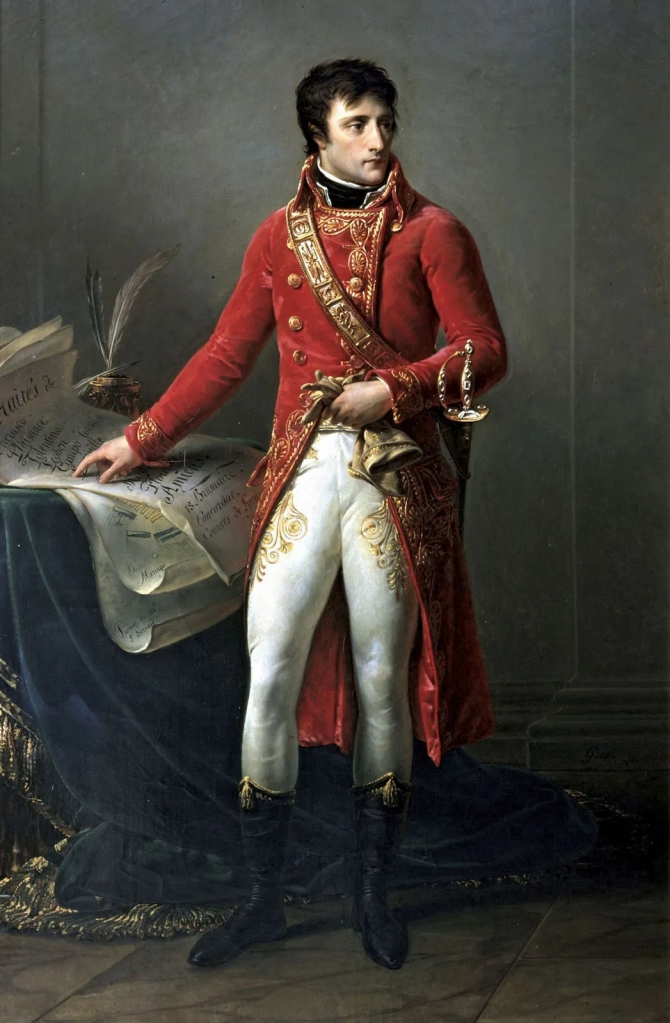
Image: Encyclopedia Britannica
A BRIEF HISTORY: First settled in the 3rd century BC by the Parisii people, Paris was a center for trade thanks to the river Seine. Just before modern times in 52 BC, the Romans conquered Paris (then called Parisius) and developed a thriving city for 250 years before it converted to Christianity. The French dynasty began in the year 509 when Clovis I the Frank made Paris the capital of the Frank dynasty in the Gaul region. During the Middle Ages (12th-17th centuries), most of the significant architectural marvels were built, and the kings of France reigned. Paris (and France) endured invasions by the Vikings in 845 AD, the British in the 1400’s, and various changes to their borders over 1,000 years. It was also during this time (1500’s-1600’s) that France expanded its global empire to the second largest in the world behind Spain by claiming large portions of the new world and Africa, but that began its decline at the end of the French & Indian war in the Americas, which ceded New France (parts of Canada and the colonies) to the British in the Treaty of Paris of 1763. In spite of this, by the 1700’s, Paris was the epicenter of the enlightenment, when a surge of scientific and philosophic activity took place. Shortly after, during the industrial revolution, Paris emerged as a leader in science, art, fashion, philosophy, music, gastronomy and innovation. Most notably, perhaps, was the impressionist art movements in the 1800’s that launched artists into the modern era. It was during this time (beginning in 1789) that Paris lost stability amidst the French Revolution. Just before the turn of the 1800’s, King Louis XVI was beheadded and general Napoleon Bonaparte seized power. A period of restoration began, with infrastructure fortified, just before being attacked by the Prussians (Germans) in 1870, the Germans in WWI, and again in WWII. In the modern era (the last 75 years), new world-class museums have been built like the Centre Pompidou and Museé d’Orsay, and Paris has continued to be a world leader in many ways.
FAMOUS PARISIANS: Queen Marie Antoinette, singer Edith Piaf, emperor Napoleon Bonaparte, martyr Joan of Arc, scientist Marie Curie, philosopher René Descartes, engineer Gustave Eiffel, pioneer Jacques Cartier, designer Coco Chanel, biologist Louis Pasteur, actress Brigitte Bardot, scientist and underwater explorer Jacques Cousteau, writer Victor Hugo, painter Claude Monet, sculptor Auguste Rodin, president Emmanuel Macron, athlete Zinadine Zidane, King Charlemagne, writer Antnoine de Saint-Exupéry, abolitionist Robespierre.
HELPFUL TIPS
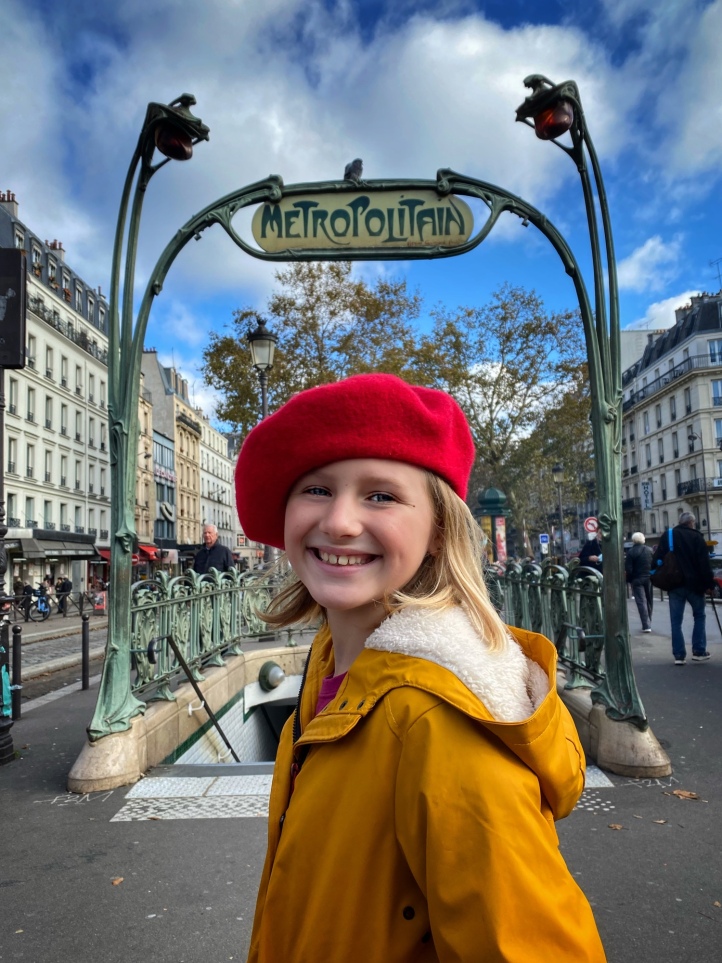
GETTING AROUND Paris is a big city, but not London or Tokyo huge. It’s easy to rack up tons of steps, and its a good idea to get familiar with the Paris metro and remember to exercise basic safety when riding the metro: keep your valuables close and out of sight, stay together, and scan the area for any suspicious activity. Some people report muggings and pickpockets but we have never run into any issues whatsoever. Don’t expect to drive around the city; they have strict rules about who can and can’t drive or park in the city anyway. Regardless, plan plenty of transit time as a cushion between stops in the city – no matter what it takes a lot of time, but google mapping distances is usually pretty accurate. Save 25% when you buy 10 metro passes (the best deal if you don’t know how much you will be using the metro).
LODGING It is difficult to find affordable lodging in Paris period, let alone if you have a family of 5+. I recommend prioritizing proximity to the metro when searching for a place to stay. We have had good luck finding apartments to rent near Montmartre (shy away from Pigalle area) and even staying at a hotel in Versailles and taking the train into the city (with the Navigo pass). It just depends on what you want to see! My favorite place was Aparthotel Adagio because it was just steps away from the metro.
BUDGETING The Paris Pass is a great deal if you’re going to be in the city for a week or spend all of your time in museums at a fast pace, but otherwise it doesn’t really pay off. Save a bunch by investing in a Navigo card if you’ll be in Paris for several days during the week (don’t bother if it’s a weekend as Navigo rates re-up each weekend) and using the Metro and trains out to Versailles. We save money by bringing our own refillable water bottles and finding water at stations throughout the city (see map here). We also love to eat breakfast and lunch from bakeries or creperies which always saves money. Our favorite bakery is Maison M’Seddi, an award winning boulanger, and our favorite creperie is Happy Caffé. Learn all about free museums in Paris here.
ALSO: Bathrooms are tricky to find throughout the city, so plan to go every time you eat at a cafe or enter a museum. A helpful tip is that you can enter the Louvre either at the pyramid without a ticket or the Carrousel de Louvre mall entrance and use the bathrooms there for free. It’s also a good idea to practice a few key French phrases to at least appear as though you’re making an effort to communicate. Please, thank you, yes, no, hello, goodbye, cheers, where’s the toilet, and sorry are all great to know! Expect tons of solicitation at the Eiffel Tower as well as Montmartre at Place du Tertre. Enjoy free audiotours of Paris with the free Rick Steves Europe app.
HISTORIC PARIS
Below are three categories of historic destinations in Paris: Memorium, Paris History and Haute Society. Consider what interests you when choosing a spot – interesting architecture? World War significance? Famous people? Memory sites? Ancient vs modern? Art? The possibilities are endless!
Memorium
Panthéon
The Panthéon, located here, was originally envisioned by King Louis XV as a church dedicated to Geneviève, the patron saint of Paris, but by its completion in 1790, Paris was in the throes of the revolution. The new government assembly voted to make the new church into a mausoleum for famous French folk instead. From 1791 to 1885 the structure was used both as a crypt and a church until Victor Hugo was laid to rest here. The structure was modeled after the Pantheon in Rome whose height inspired Léon Foucault to perform scientific experiments inside. His most famous is the 62lb (28kg) Foucault pendulum (a copy of which still remains inside) originally suspended in 1851 at a height of 220 ft (67m), demonstrating diurnal motion, or the movement and rotation of the Earth. This magnificent building has incredibly ornate interior design – not to mention the awe inspiring pendulum you can view here – and fabulous exterior viewpoints through 100 Corinthian columns. Other famous people entombed here include Louis Braille (inventor of Braille), Marie Curie (scientist, two time Nobel prize winner), Josephine Baker (singer), Antoine de Saint-Exupéry (writer), and Voltaire (writer, philosopher).
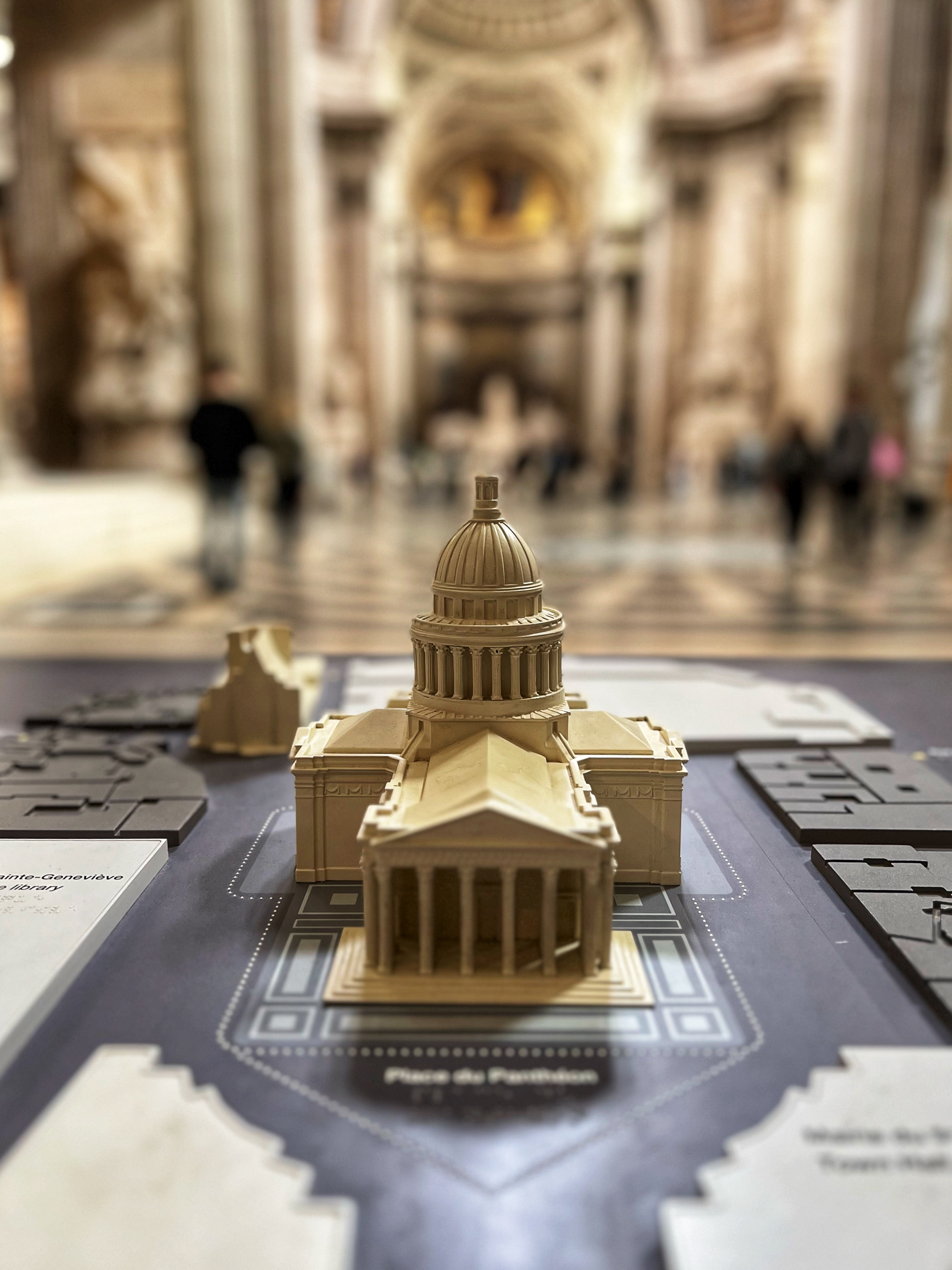

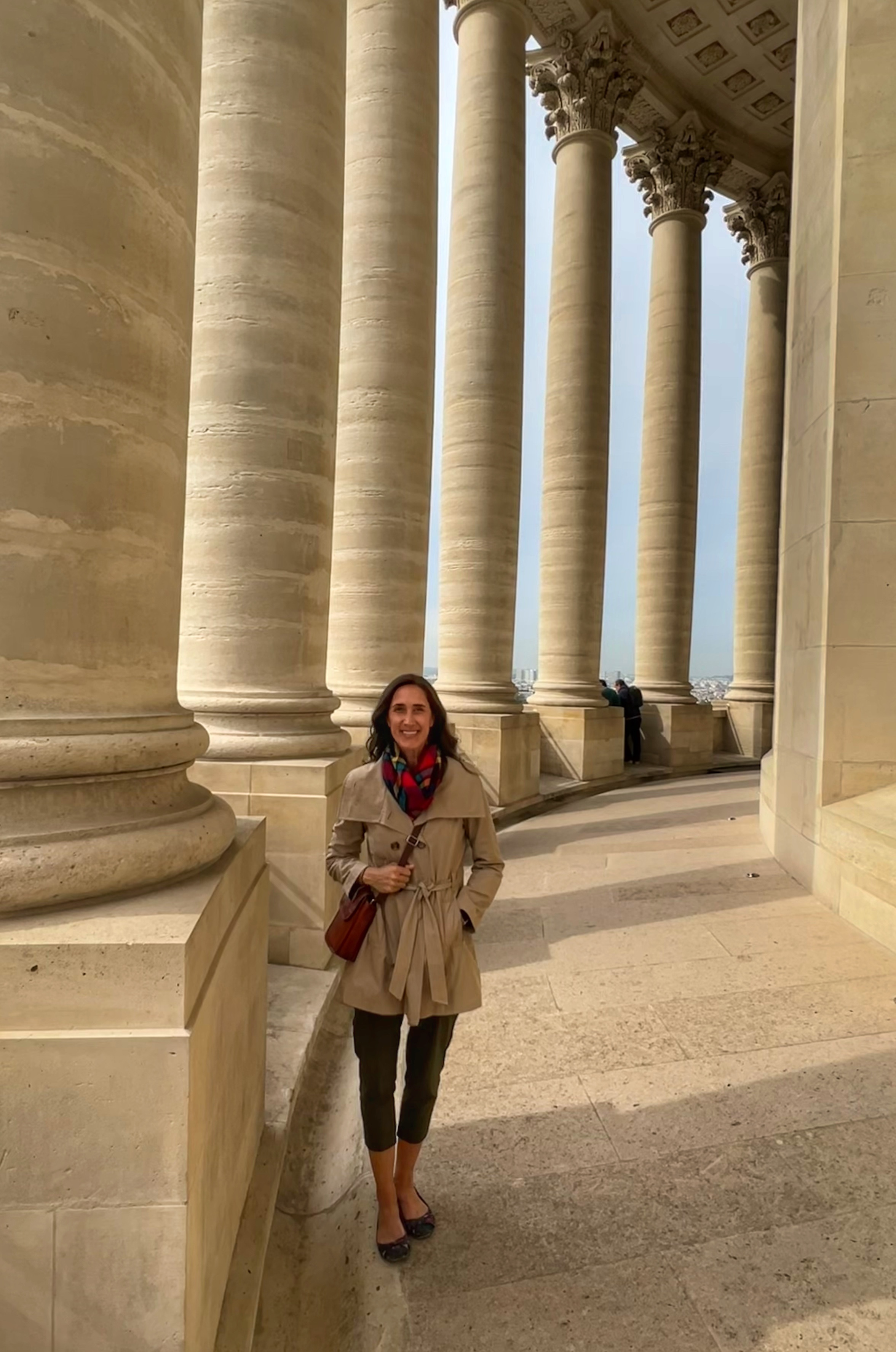
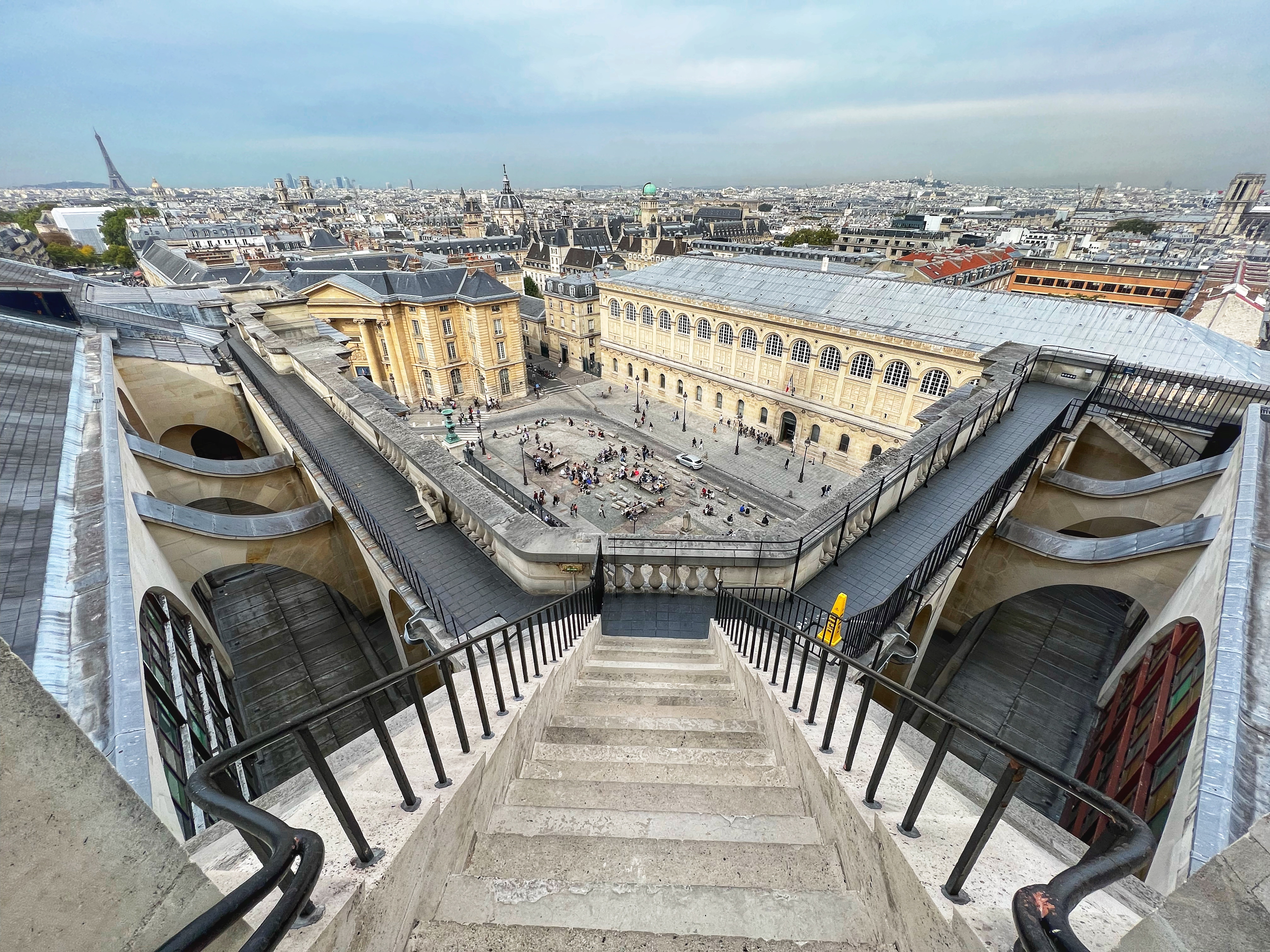

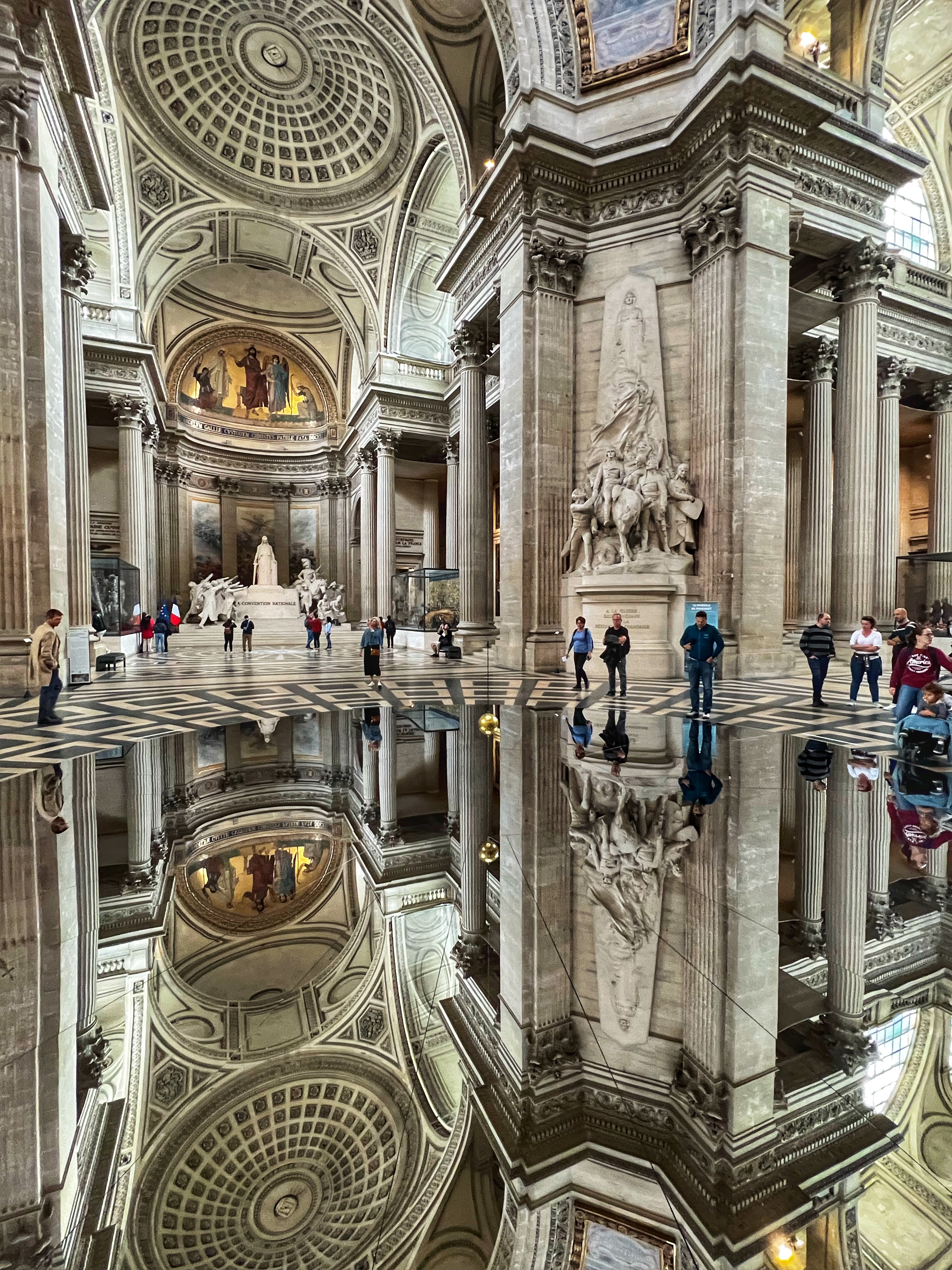
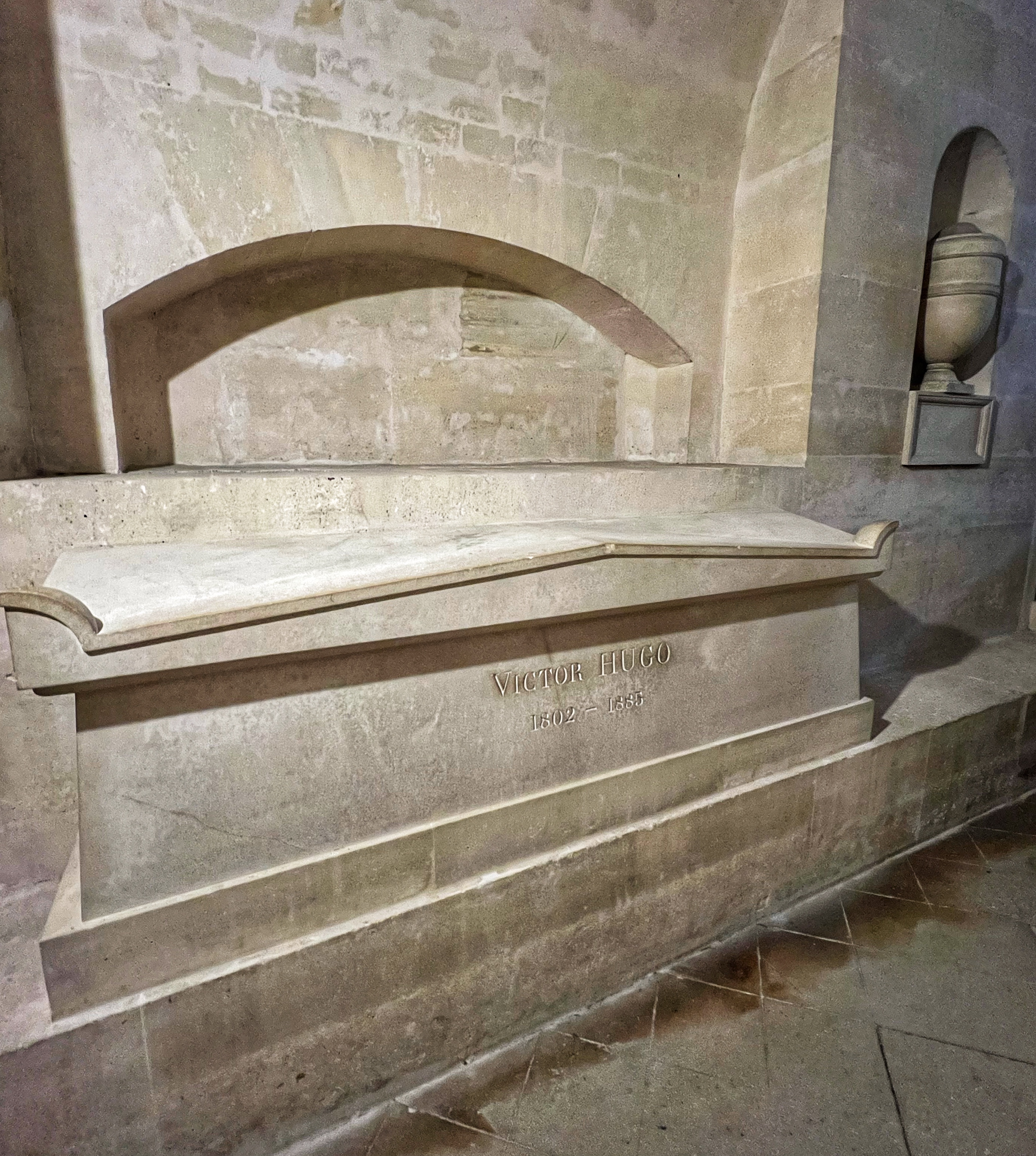
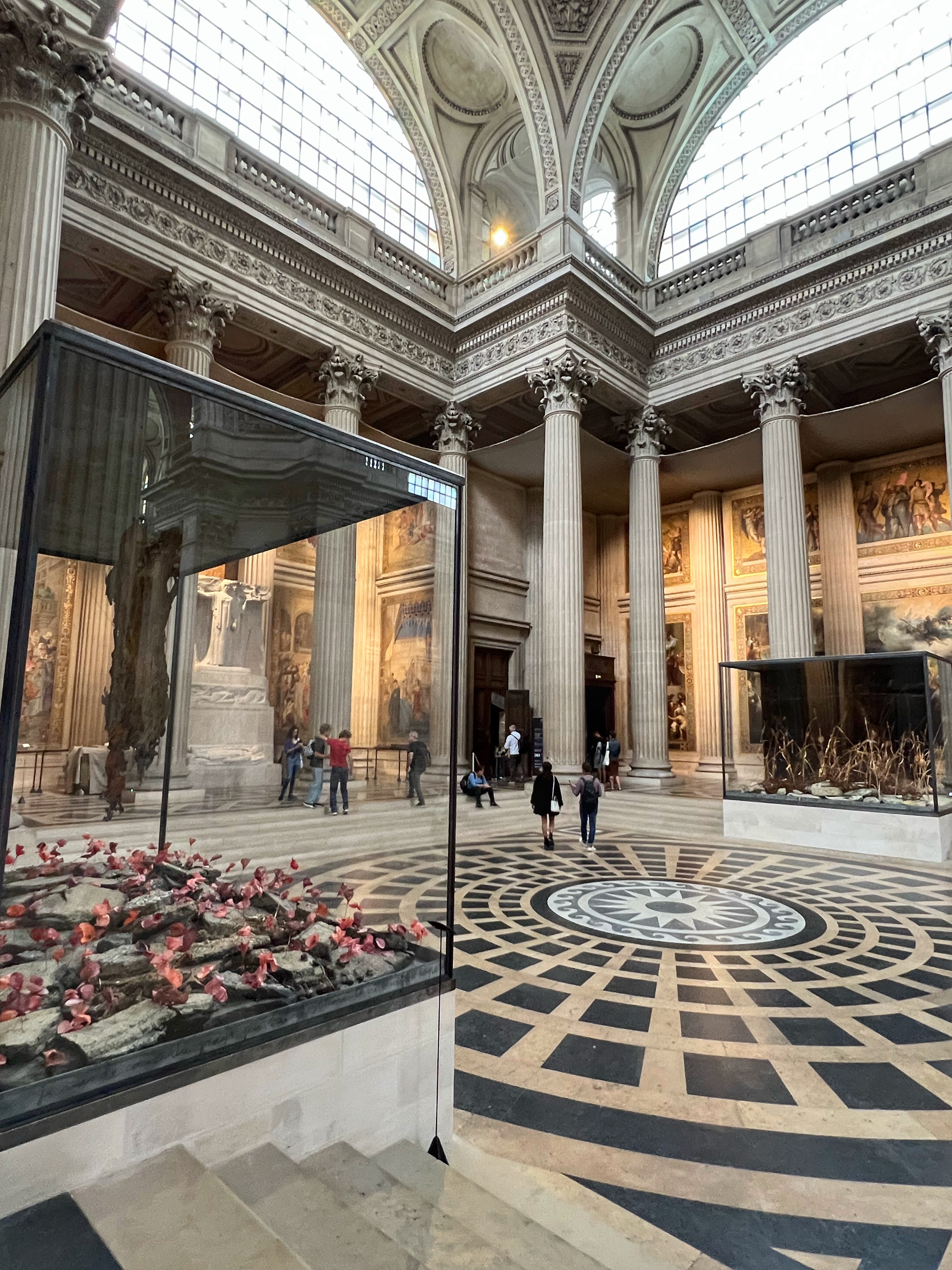
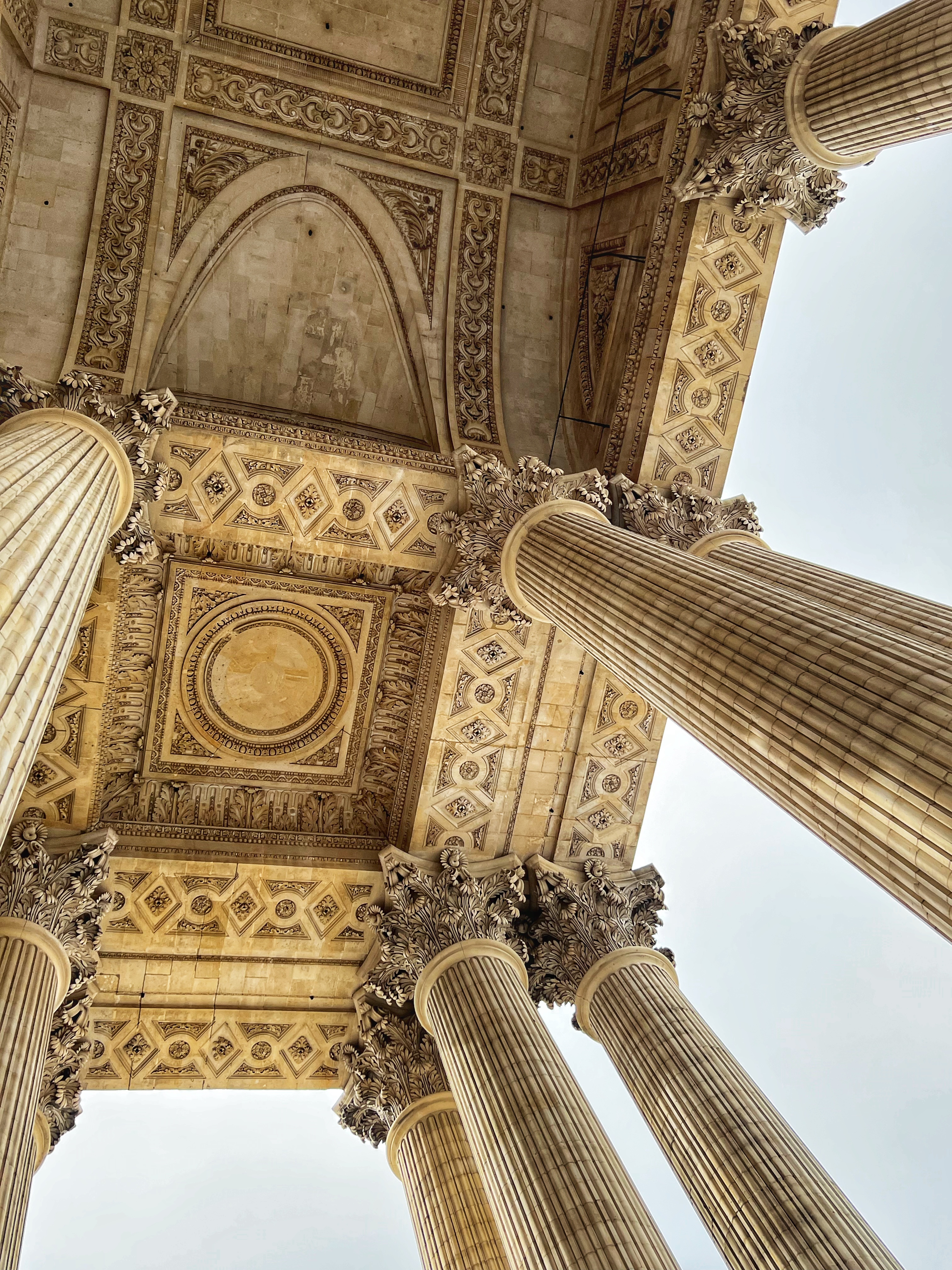

PRACTICAL INFO: It is possible to purchase tickets inside the Panthéon but always a safe bet to buy them online. If it says they are sold out online, fear not! Give it a shot (it worked for us) to wait in line and there usually is space. For tickets and timetables, see the website here. It is open every day, but the panorama visits (outside) aren’t possible during the winter from November to March. It is free for kids under 18, and regular tickets are €11.50 with an extra €3.50 for the panorama visit (it’s worth it).
Les Invalides

This massive complex (also referred to as Hôtel des Invalides) was formerly a cathedral, hospice, barracks, convent, and factory for French war veterans, and today is all of those things plus museums and and mausoleum for Napoleon Bonaparte and other French heroes. Unmistakable for its golden dome crowning the 7th arrondissement, this is an interesting place to visit for anyone who appreciates history – especially military history. Although originally built by Louis XIV as a home for aging and disabled soldiers, today the site has added meaning. It still serves as a home for disabled veterans, but is also a massive compound that boasts 15 courtyards, four museums, two chapels, and the tallest church dome in Paris at 351 feet (107m) tall. The museums include Musée de l’Armée, the military museum of the Army of France, the Musée des Plans-Reliefs, and the Musée d’Histoire Contemporaine. I was most impressed with the ancient military artifacts (some from China!) and large section of WWII memorabilia. Keep an eye out for the child’s coat of armor.
Thoughts on Napoleon: It is a curious thing to witness the enormous tomb of Napoleon and see how his legacy has been enshrined here. I have never seen a more massive sarcophagus. It is both magnificent and in stark contrast to how we treat leaders today. I found it striking – controversial even – to see such veneration continue for a man who undoubtedly contributed in brilliant ways as a general in the wars to liberation of France – but also became leader to an ever-expanding empire by bloodshed and greed, even reinstating slavery (the only European country to do so) after it had been abolished. Between 3-6 million people died under his leadership during the Napoleonic Wars. It seems as though the French have quite a selective memory about Napoleon’s legacy and in modern times there will need to be an honest reckoning. Although books have been written about his military genius, genocide and blood on his hands are often overlooked. These are all things to keep in mind – especially considering the time period with which these monuments were erected. Up for discussion: how can we acknowledge the early feats of general Bonaparte without undue reverence for his militaristic brutality and discrimination against Black people, Jewish people, and women within his own country.
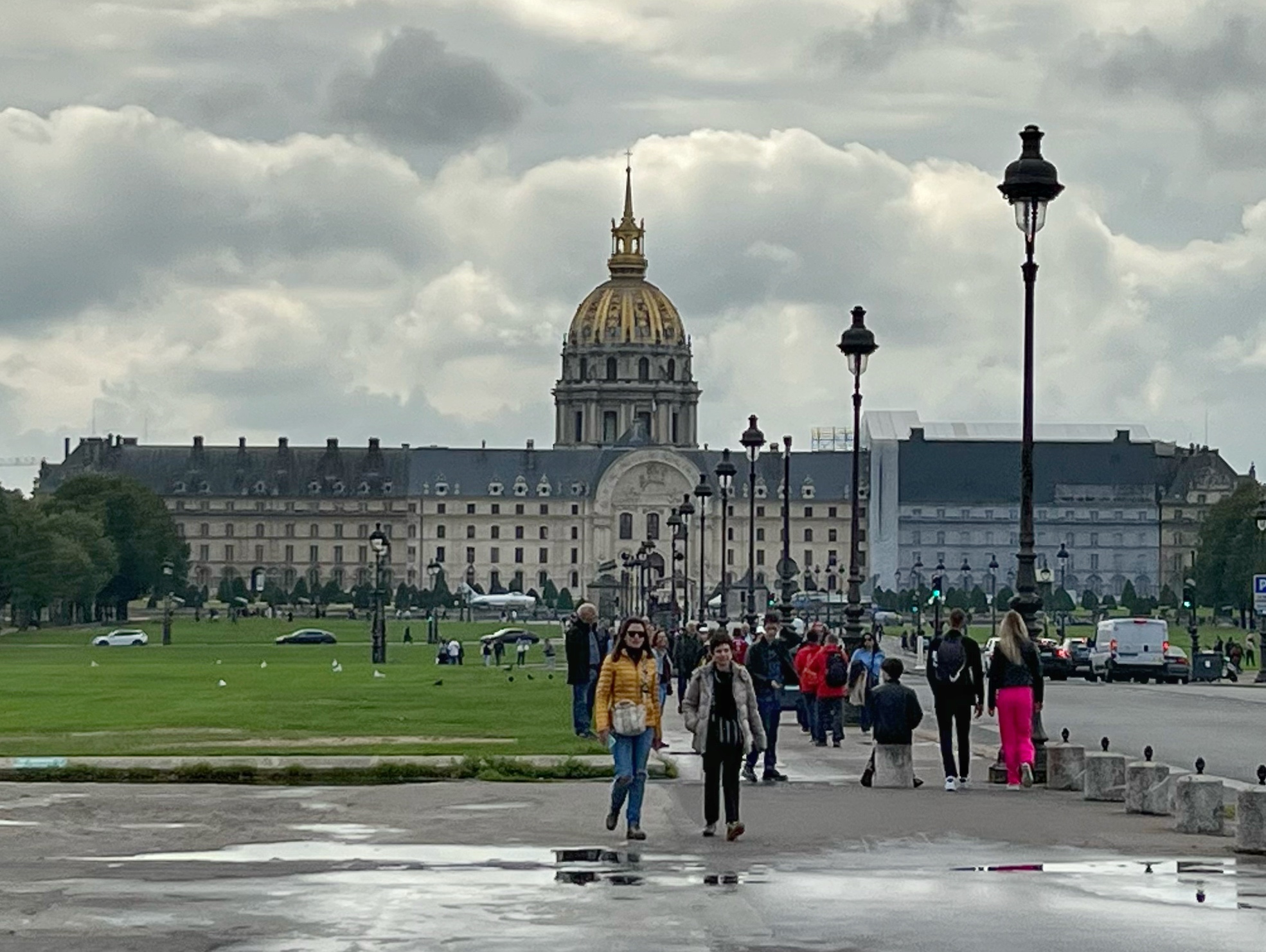
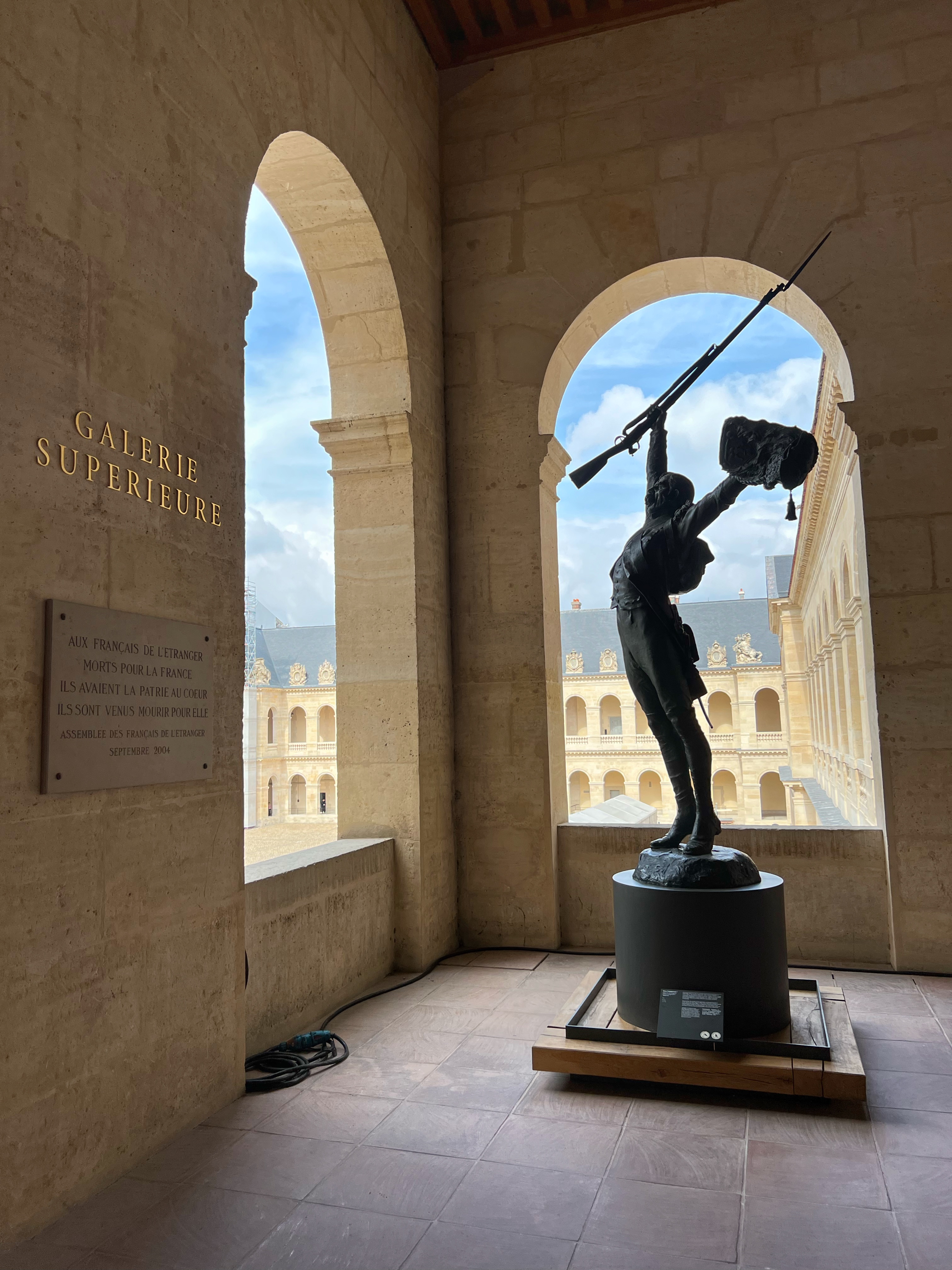

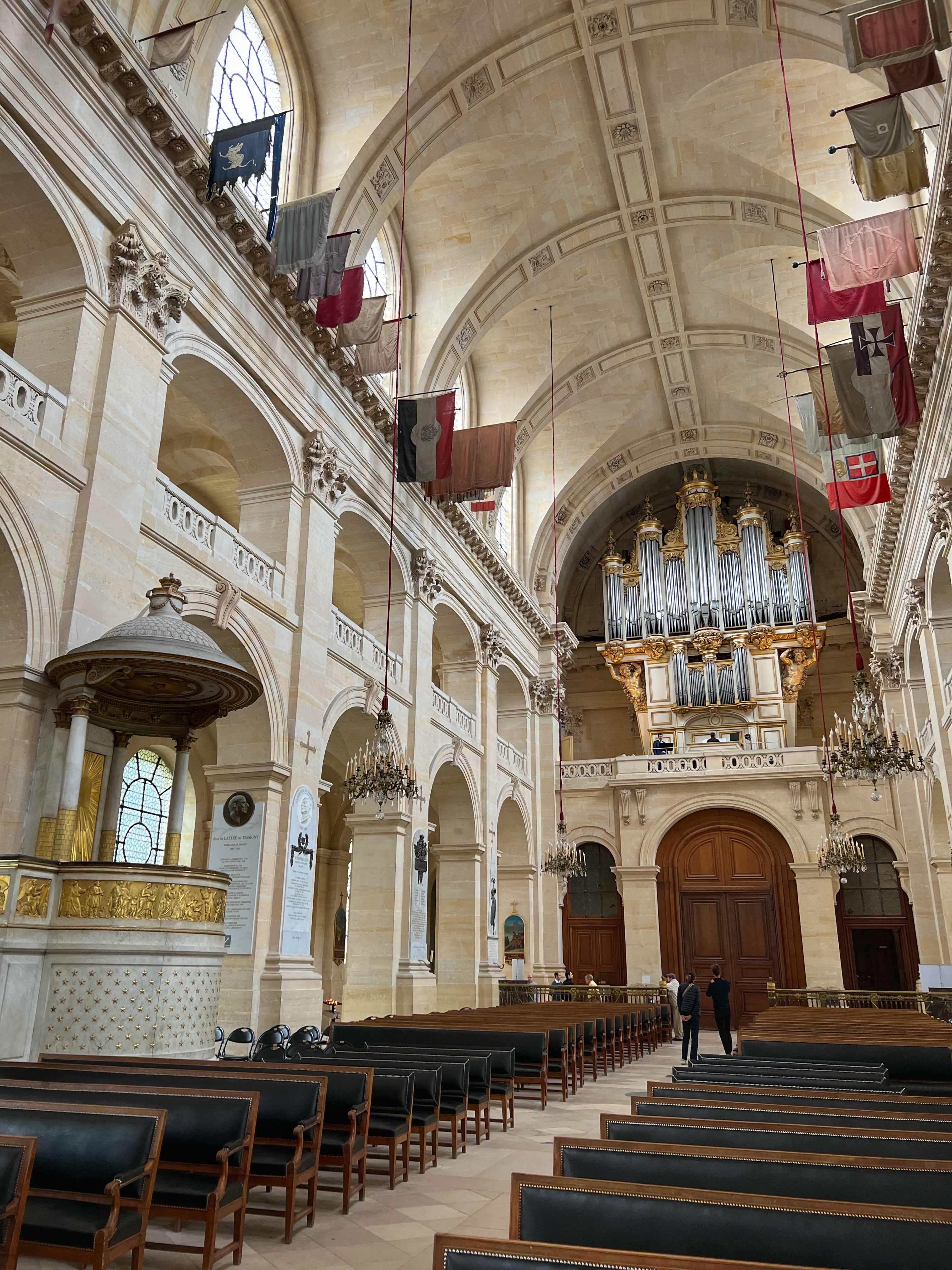
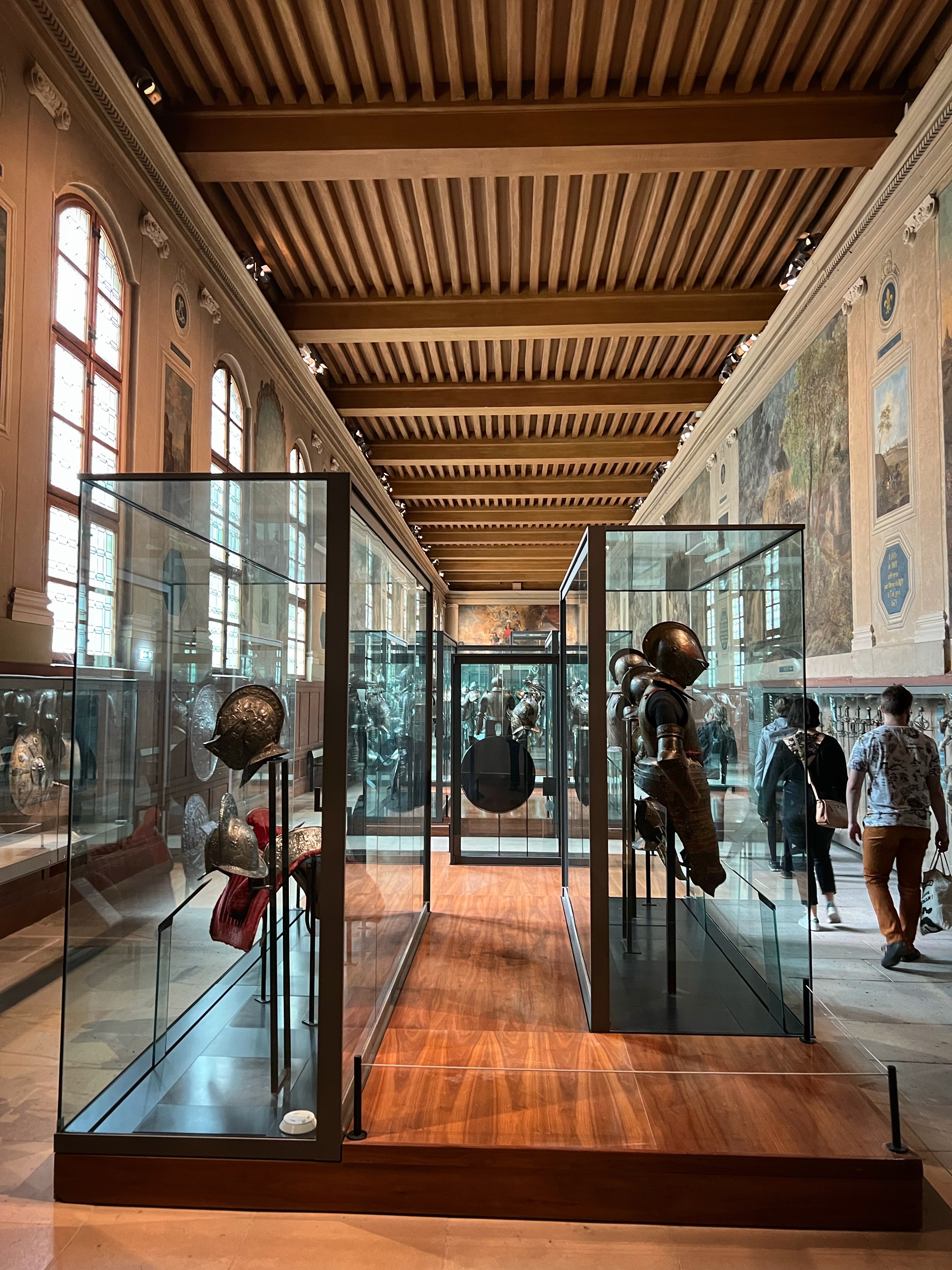

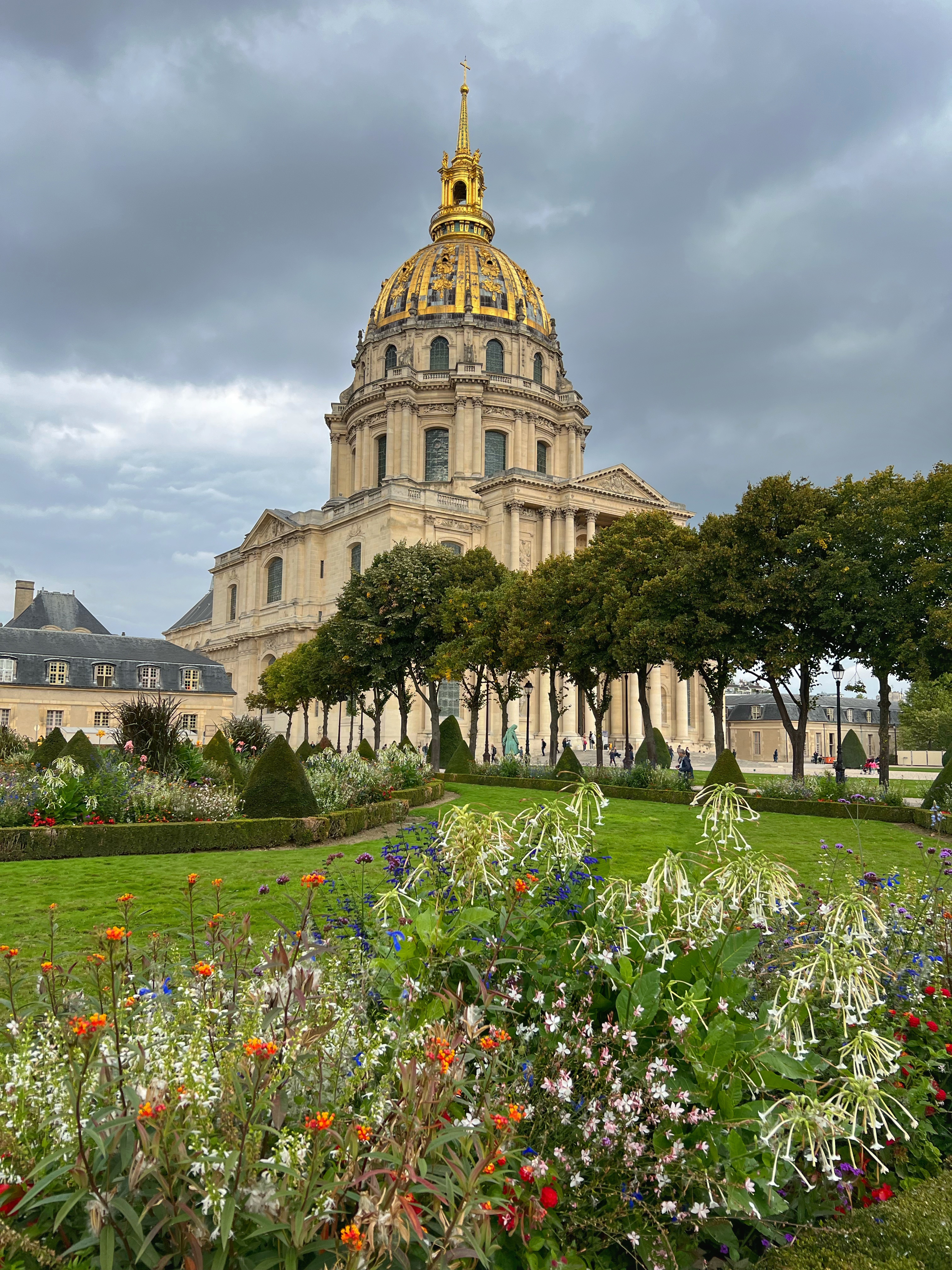
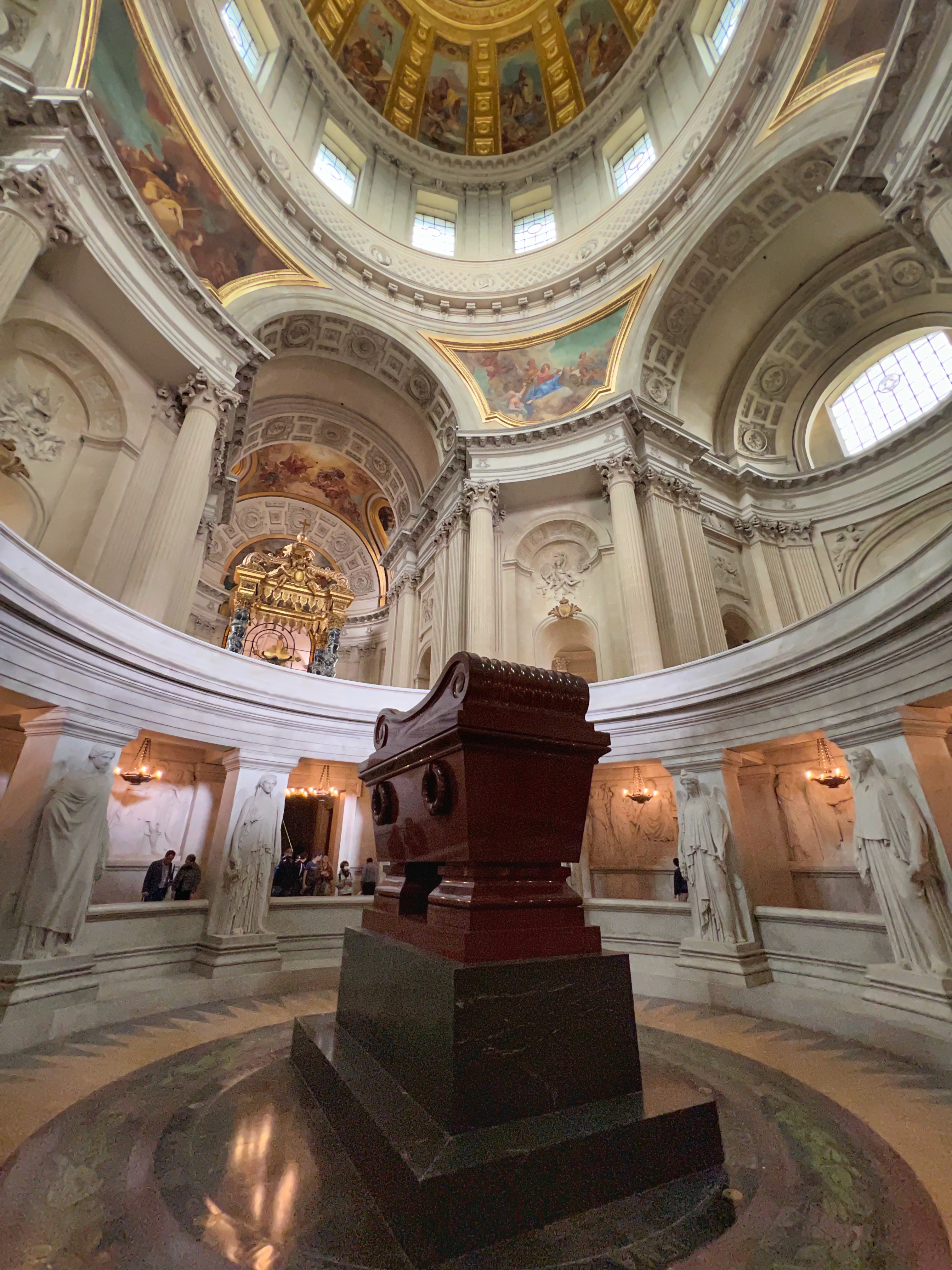
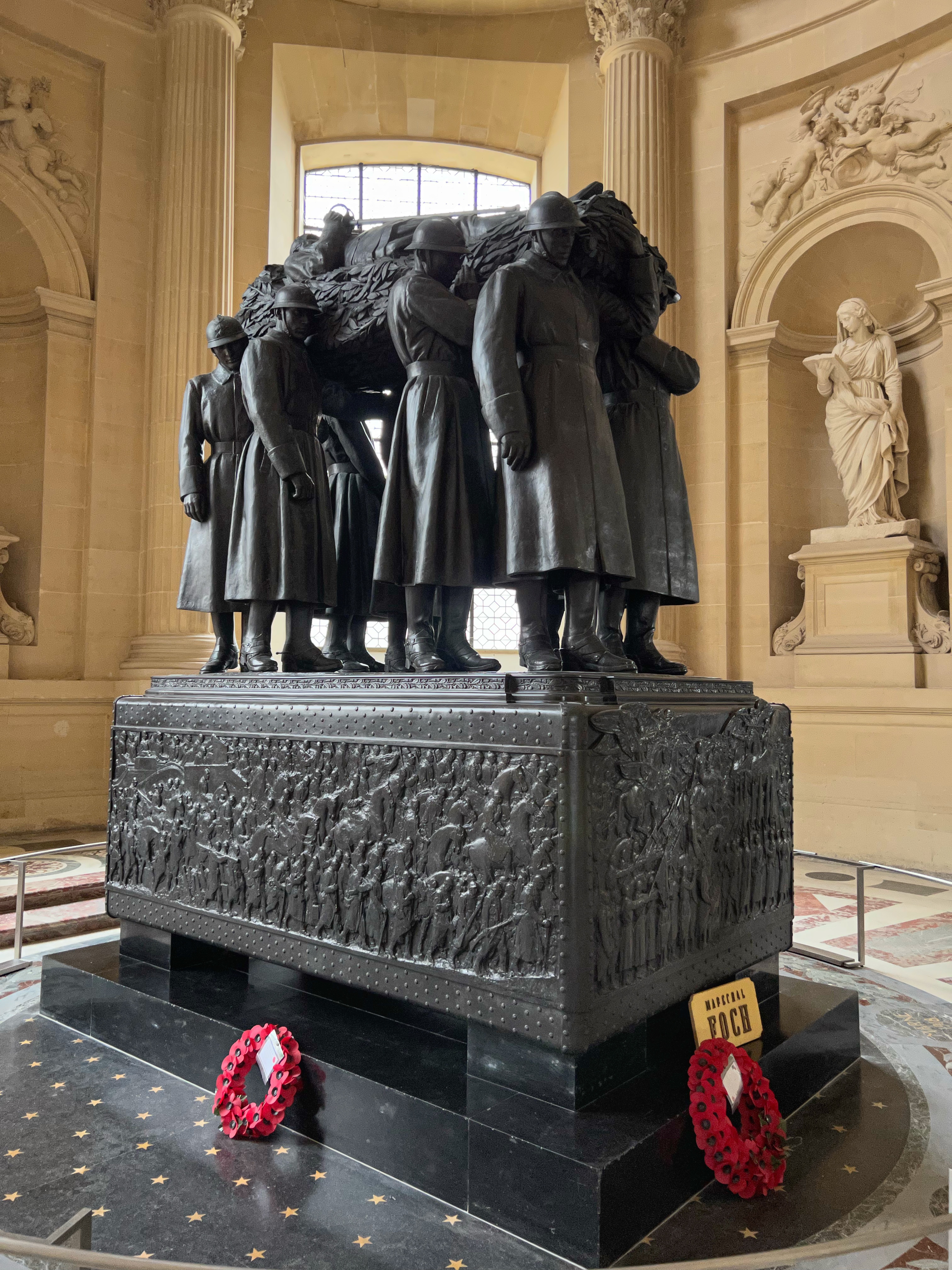
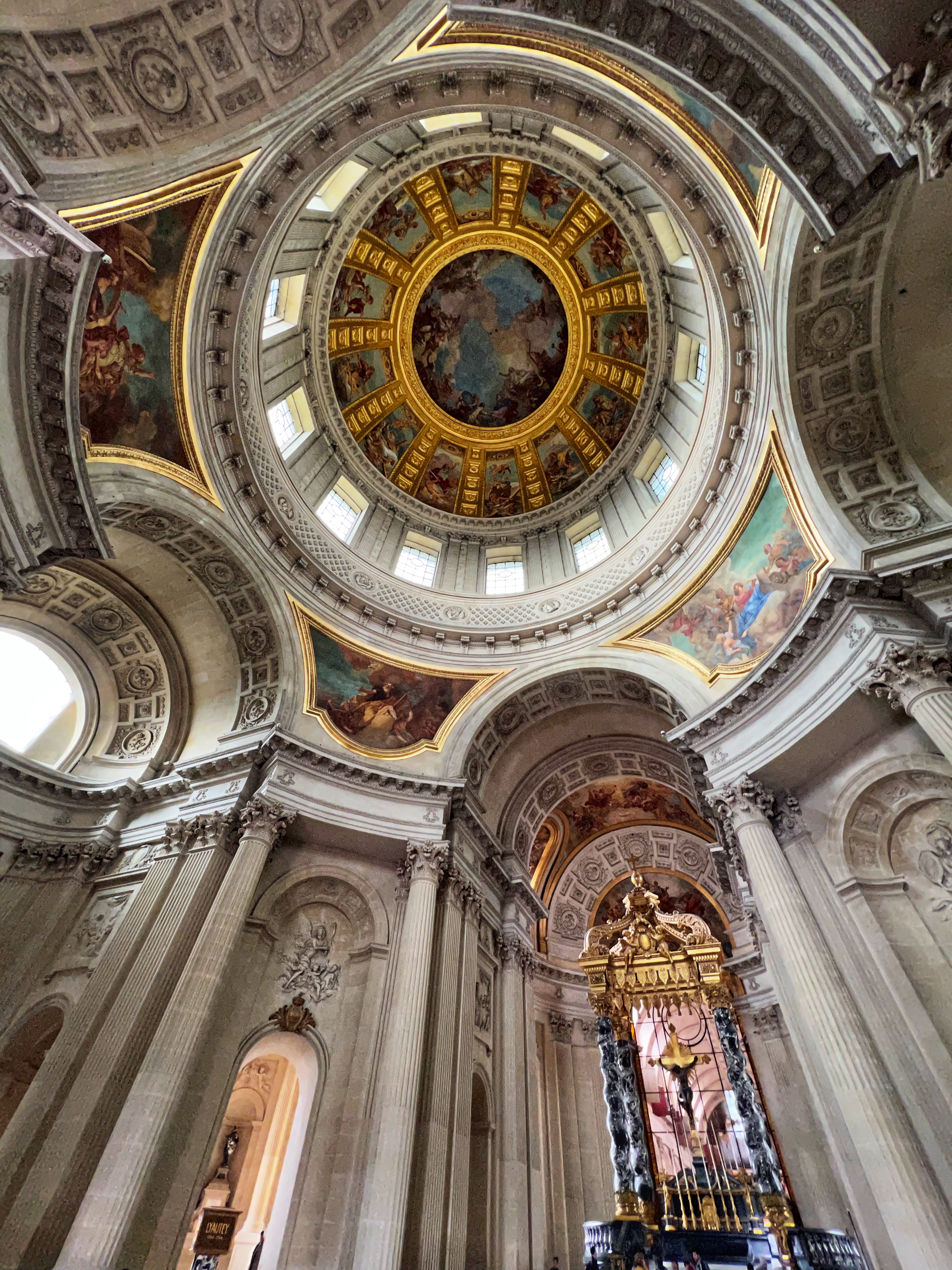
PRACTICAL INFO: Begin your tour by approaching Les Invalides from L’Esplande Les Invalides, the great promenade. From there you can purchase tickets and enter the museums in order before seeing the chapels last. It is possible to purchase a ticket just for the dome church and Napoleon’s tomb, but you will need to enter from Esplanade Jacques Chaban-Delmas. To double check opening times and get more info, click here. Open daily from 10am-6pm, and until 9pm on Tuesdays. Tickets are €14, under 18 free.
Mémorial des Martyrs de la Déportation
This somber site located here is a memorial to the 200,000 people who were deported from France (at the time Vichy France) to the Nazi concentration camps during the second World War. The memorial resembles a crypt and was dedicated in 1962 by President Charles de Gaulle. It is important to know that the inside of this memorial contains actual earth and bones from concentration camps, and many other symbols representing the capture, enslavement, torture and mass murder of the Jews. The space is intended to evoke claustrophobia, eliciting empathy to the onlooker. Inside there are 200,000 glass crystals (see below) with light shining through, each one depicting one deportee, and at the end of the tunnel is a solitary light. Take your time here, taking note of the symbols and noticing all of the feelings that come up as you walk reverently through the site.
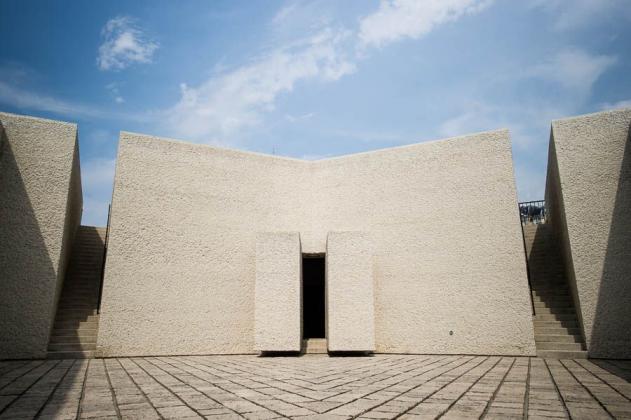
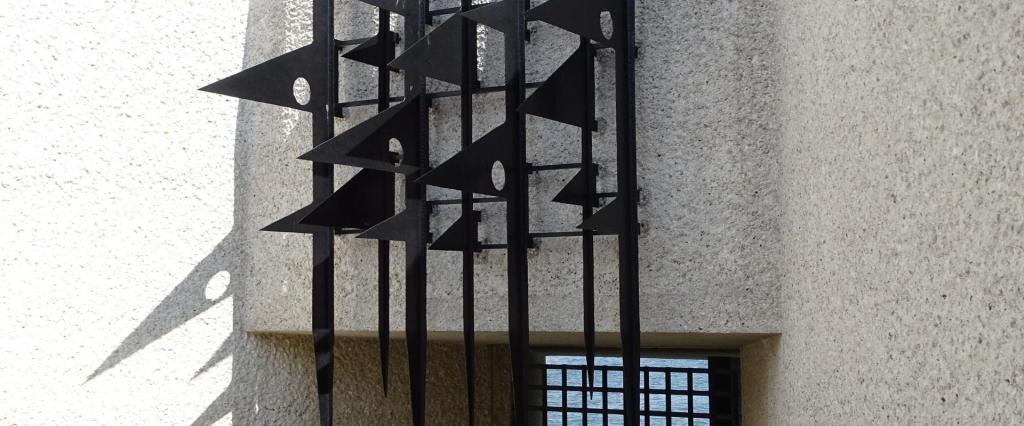
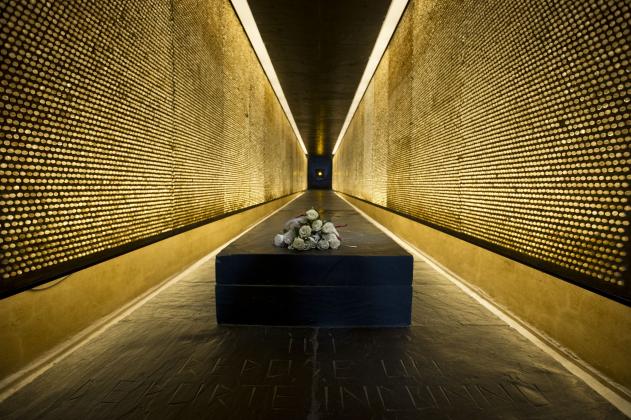
PRACTICAL INFO: The memorial is open daily from 10am – 5pm from October through March, and from 10am – 7pm from April through September. TIP: If you are already at Notre Dame de Paris, this is a very easy stop on the tip of the Île de la Cité, behind the cathedral and adjacent to the Pont Saint-Louis. It is free to visit. Check the website for more info here.
Shoah Memorial
This memorial (located here) is is a museum serving as a “historical atlas, timeline, and multimedia encyclopedia of the Shoah,” or Holocaust in France. There are walls with a list of 76,000 names of French Jews who were deported and murdered by the Nazis during WWII. There is a crypt with ashes from victims of various concentration camps and there are thousands of documents stored here from families targeted by the Third Reich. Take note of the “Wall of the Righteous,” listing names of French people who helped Jews during the war. There are permanent exhibits and temporary exhibits in the museum, as well as memorial and remembrance events that take place here.

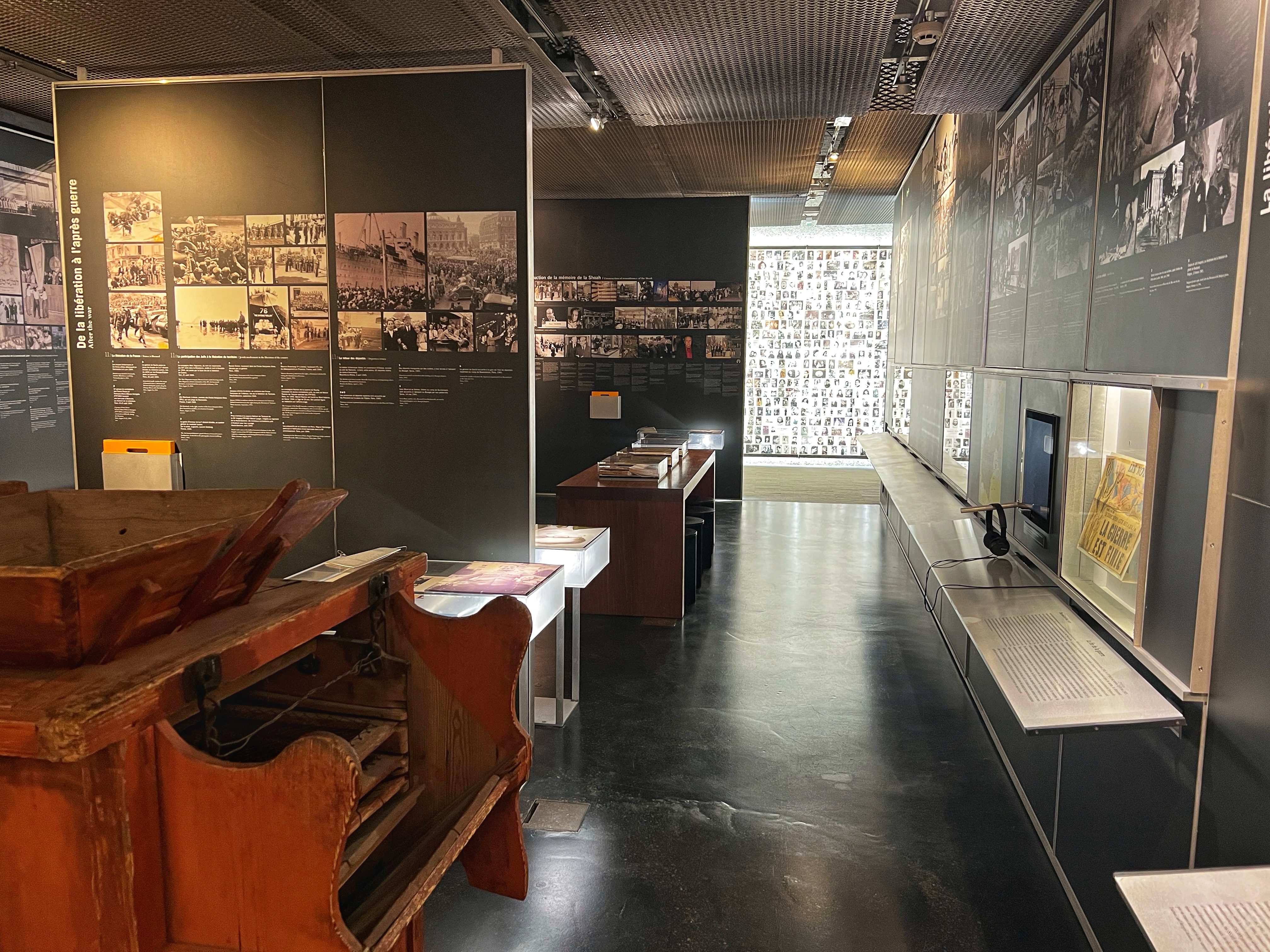
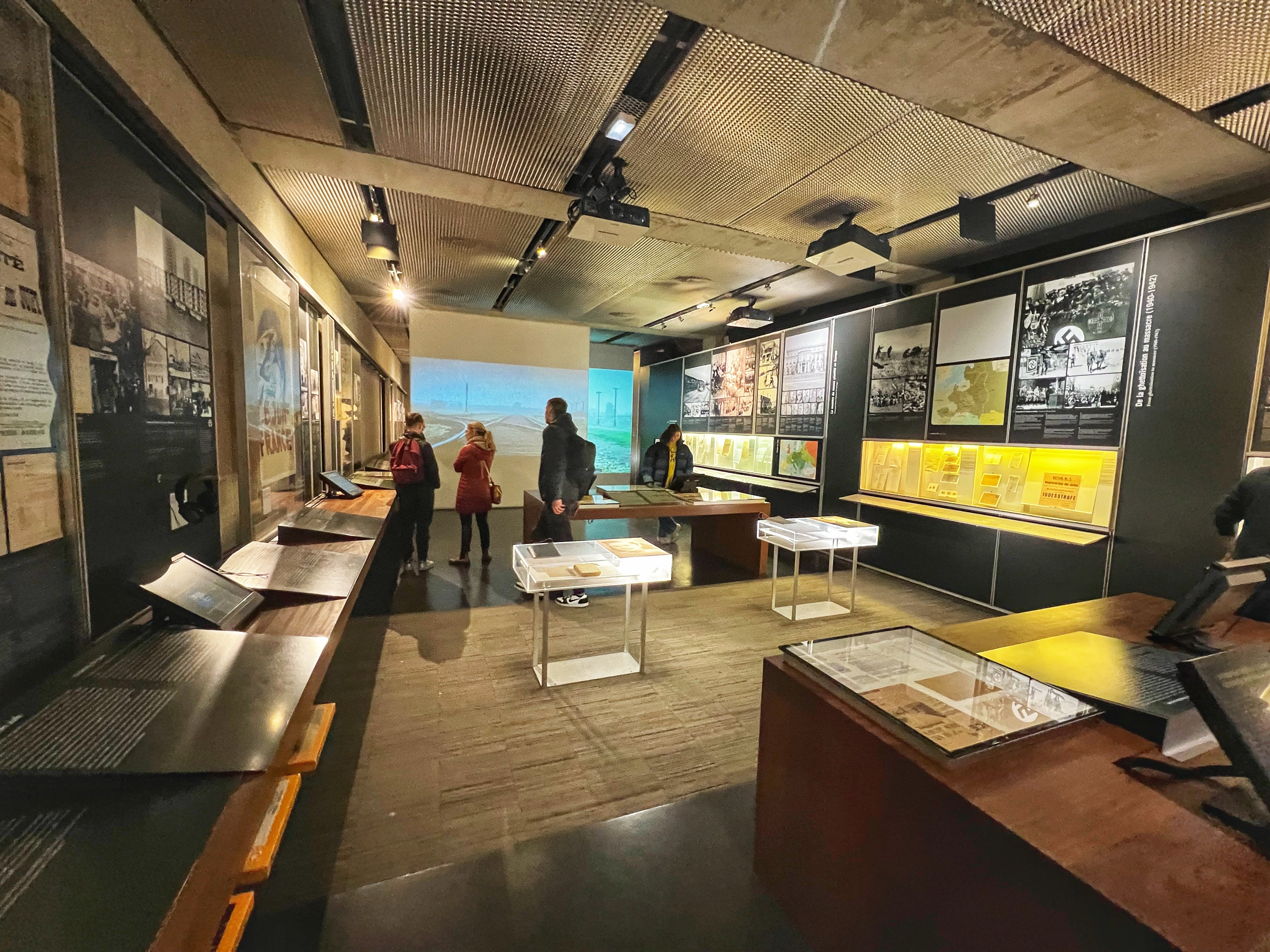

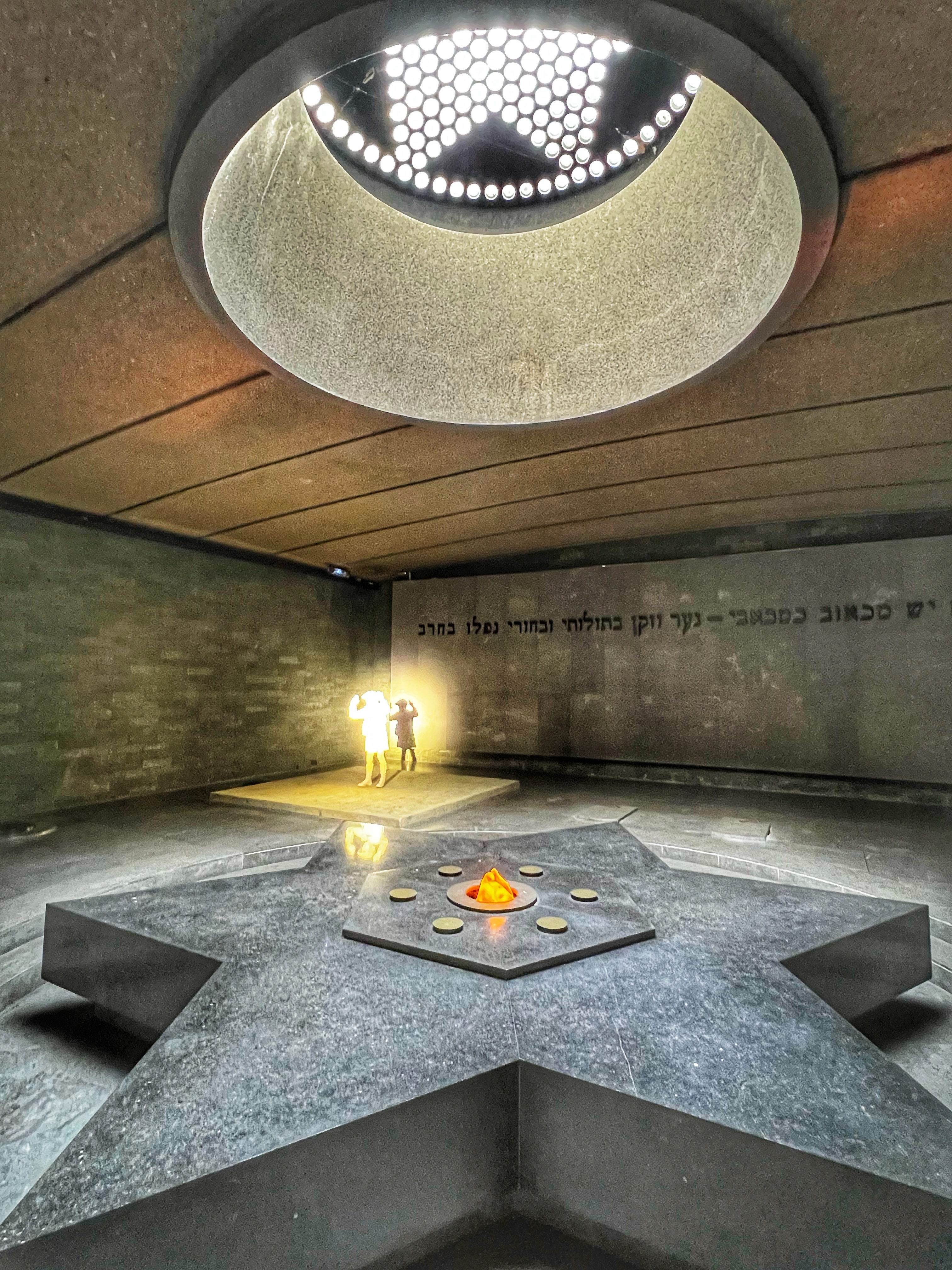


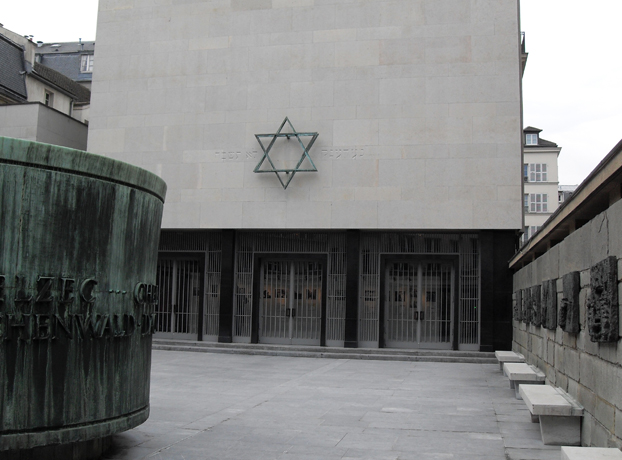

PRACTICAL INFO: Check the website for more info here. Opening hours are from Sunday to Friday from 10 a.m. to 6 p.m. and late night on Thursday until 10 p.m. You can reserve a guided tour for free at the ticket office, or visit every 2nd Sunday of the month, at 3 p.m. for a guided tour of the permanent exhibition in English.
Arc de Triomphe
Among the tallest Arcs in the world (and certainly the largest when it was built), Paris’ Arc de Triomphe is a sight to behold in the 8th arrondissement. (Paris does claim the title of World’s Tallest Arc in La Défense, but that is not technically an “Arc de Triomphe.”) Napoleon Bonaparte commissioned the arc to honor those who fought and died for France in the Revolutionary and Napoleonic wars. Inscribed on the walls of the pillars are names of all French generals and the victories they tallied. In the center of the arc beneath the vault lies a Tomb of the Unknown Soldier from World War I with an eternal flame. Many famous military processions have taken place from or around this arc since its inception. When visiting the arch you ascend 284 steps to the top where there is a gift shop, small exhibit and of course, the “rooftop” viewpoint. Everyone at the top must take a moment to count the streets bursting out from the “etoile” or star at the roundabout – there are 11!
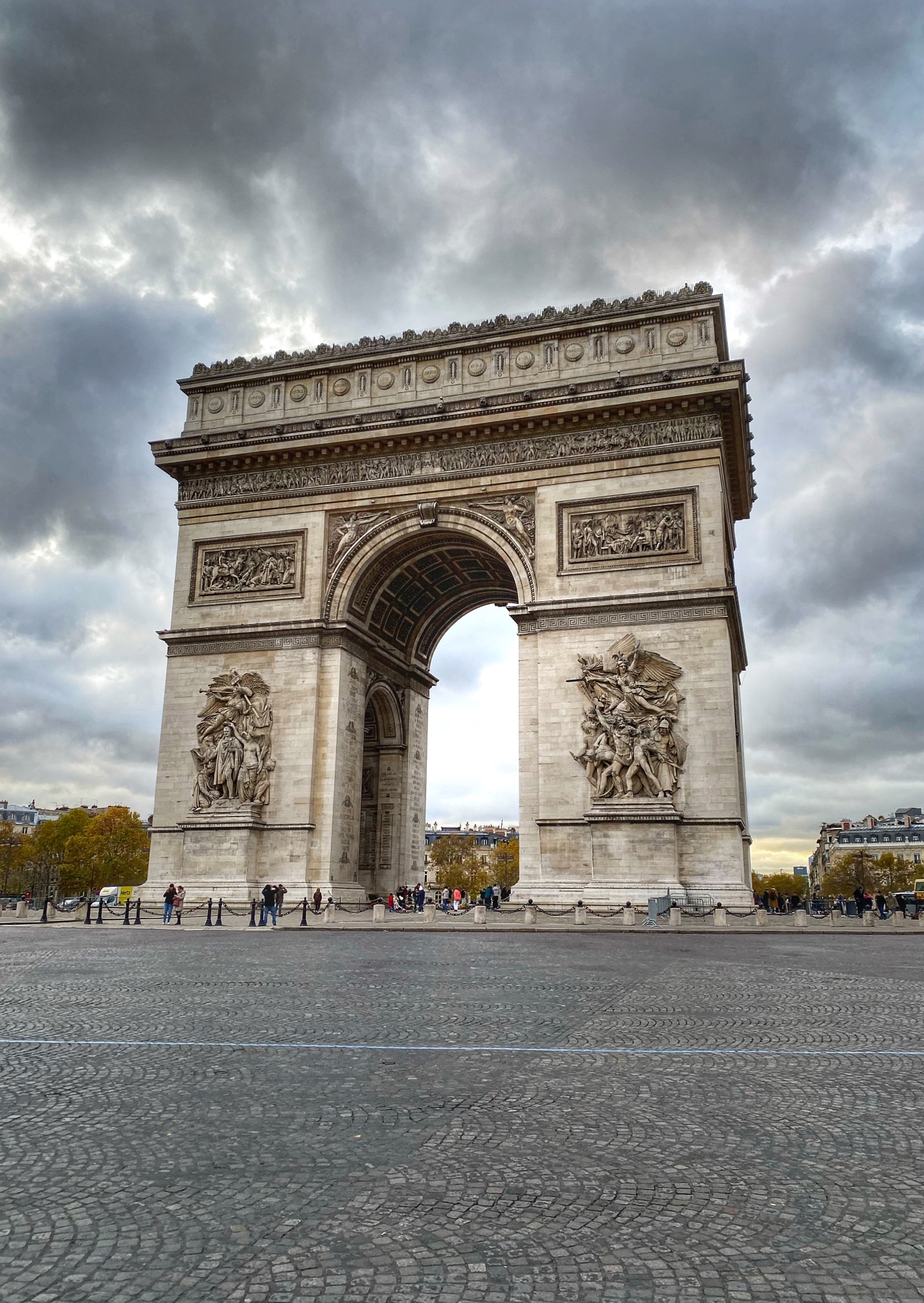
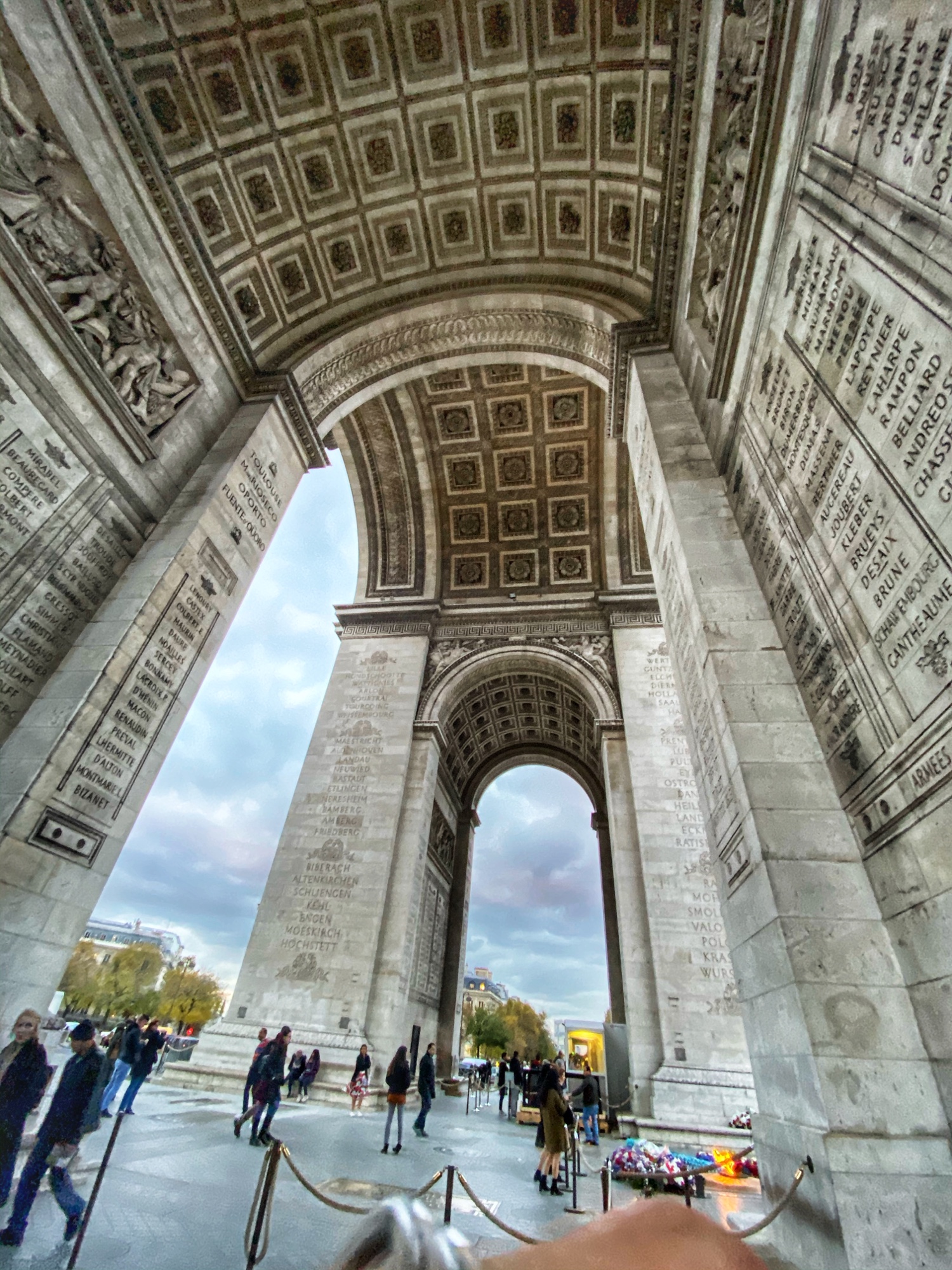
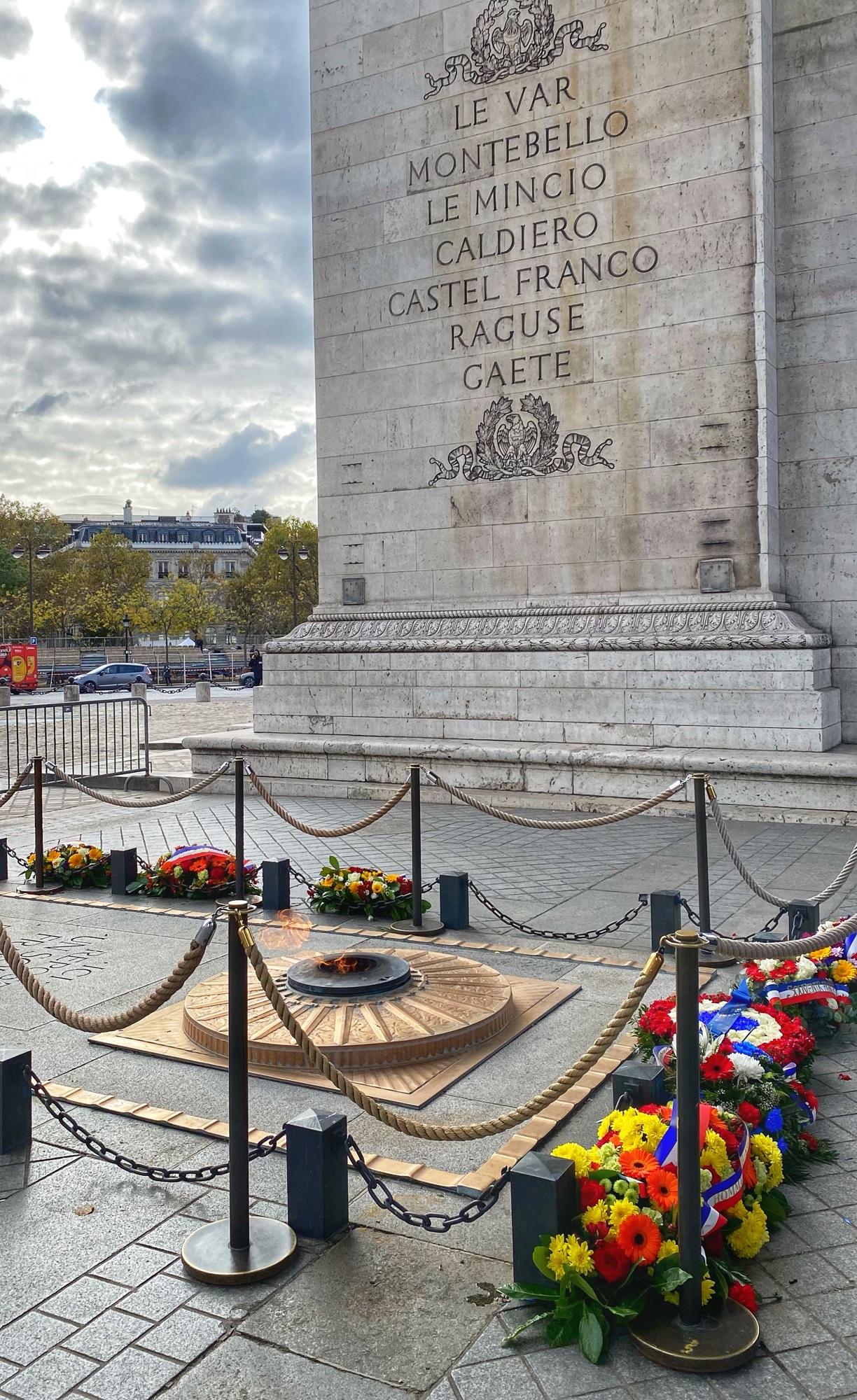
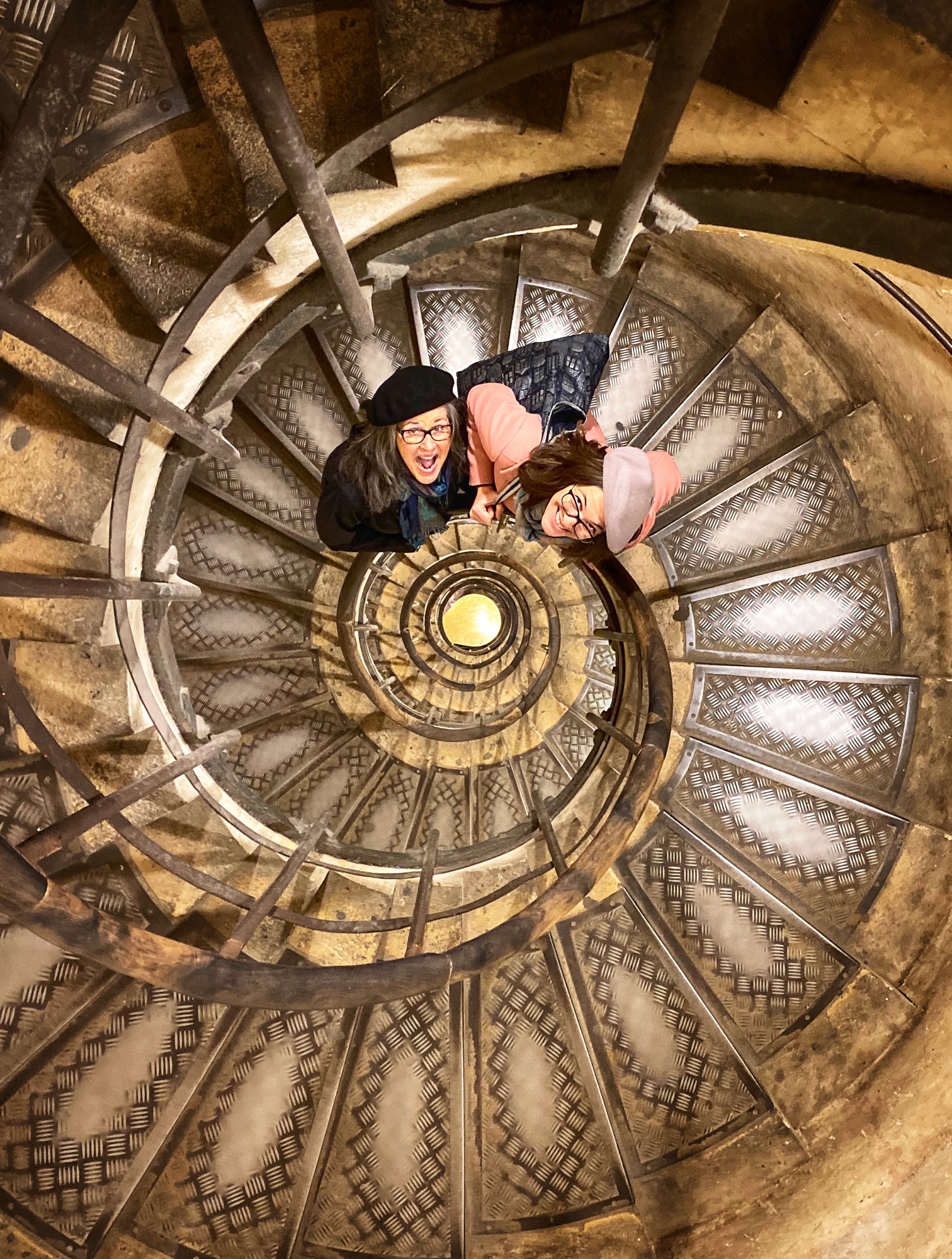
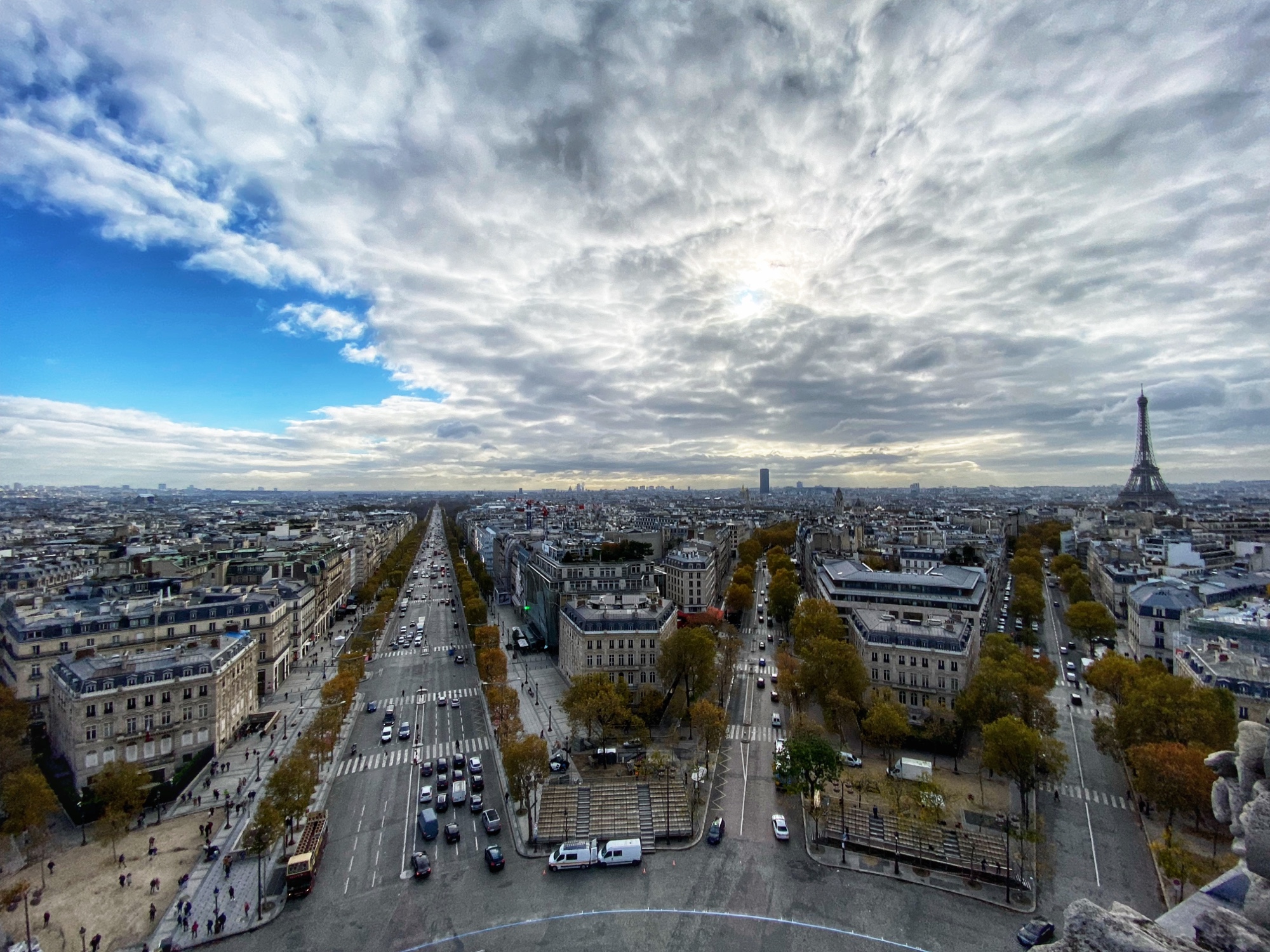
PRACTICAL INFO: To reach the Arc de Triomphe you need to take the underground tunnel located at the Champs Élysées and Avenue de Grand Armée. Do not try to cross the busy roundabout! Be sure to book your tickets ahead with a time slot because you very likely won’t get a ticket otherwise. There are elevators for the mobility impaired, and bathroom facilities but no refreshments. Learn more here.
Père-Lachaise Cemetery
Those who enjoy a somber walk through a cemetery will appreciate this historic graveyard. Père Lachaise Cemetery is massive at 110 acres (44 hectares) and is located in the 20th arrondissement in Paris. The most popular people entombed here are Oscar Wilde, Jim Morrison and Frédéric Chopin. There is also a peculiar grave that received a lot of visitors due to the curious positioning of the copper statue (prone) and apparently large bulge in his pants (see photo center, below). This is the tomb of Victor Noir, and it is considered the “most erotic” in the cemetery. Take a stroll on a nice autumn day (perhaps Halloween or Day of the Dead?) to view the curious, unique tombs and gravestones here. There are many articles written as “treasure hunts” through the cemetery.
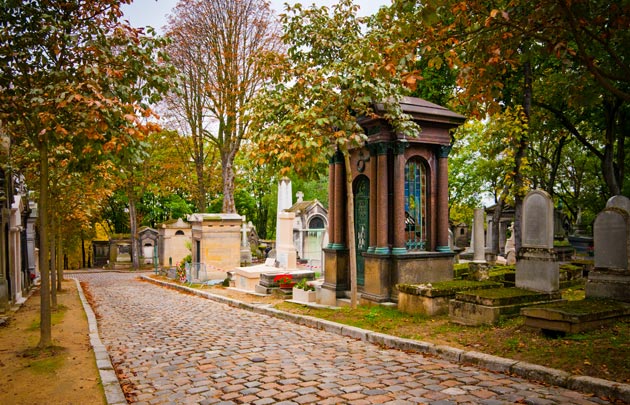
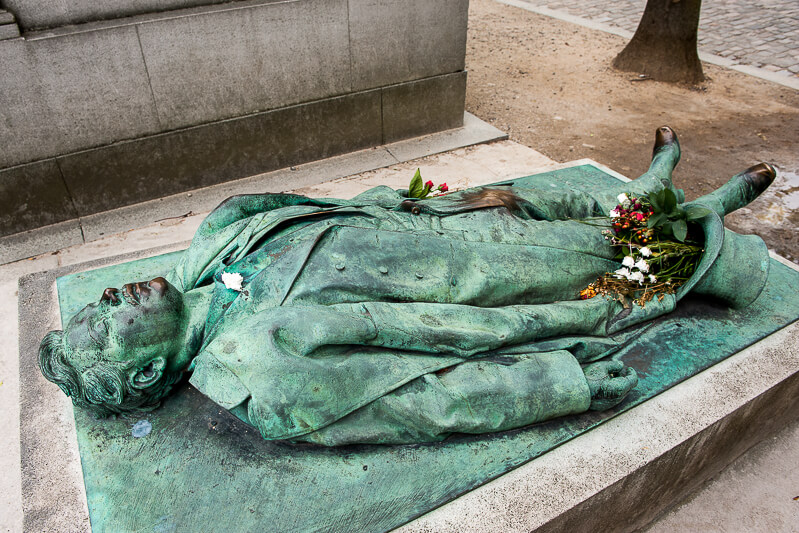
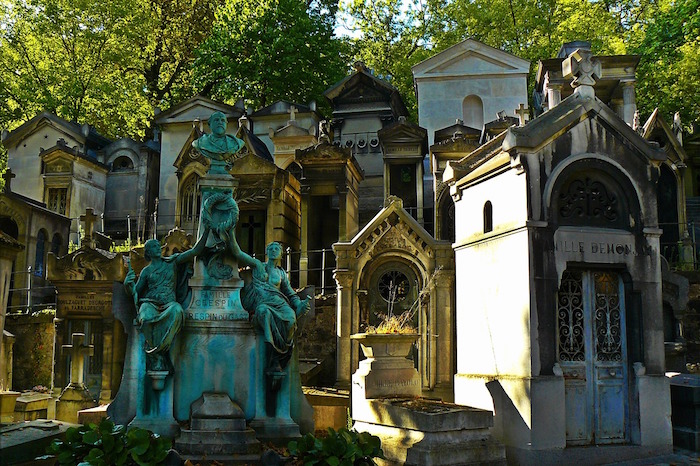
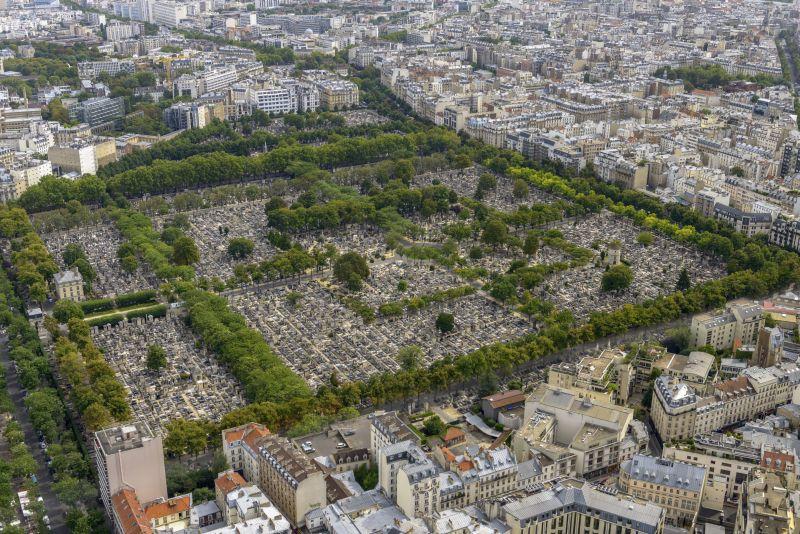
PRACTICAL INFO: It is free to enter Pere Lachaise. Learn more general info about the cemetery here and find out the most famous graves to visit here.
Catacombs
I remember visiting the Catacombs in 1998 and spending hours walking along the dark, dank, underground tunnels. When I visited post covid, they have done considerable upgrades and the tour is only about one hour long. It is very well done and includes an audio guide – but also is the most pricey attraction in Paris now at €29 for adults and €5 for children. I think this is worth seeing once, but be sure to read up on the history as much as possible before touring as it can be overwhelming to see so many skeletons. The tunnels are said to hold the bones of over 6 million people – beginning in the late 1700’s after the Bubonic Plague for 25 years. They were first open to the public in 1809 and have been a fascinating piece of Paris history ever since. There are many stories about the underground tunnels being used for various reasons over the years (including for gatherings and events) but recently they have been better managed for safety and tourism. Take your time on the tour and translate the various poetic verses on plaques throughout the tunnels – it’s a somber place indeed.
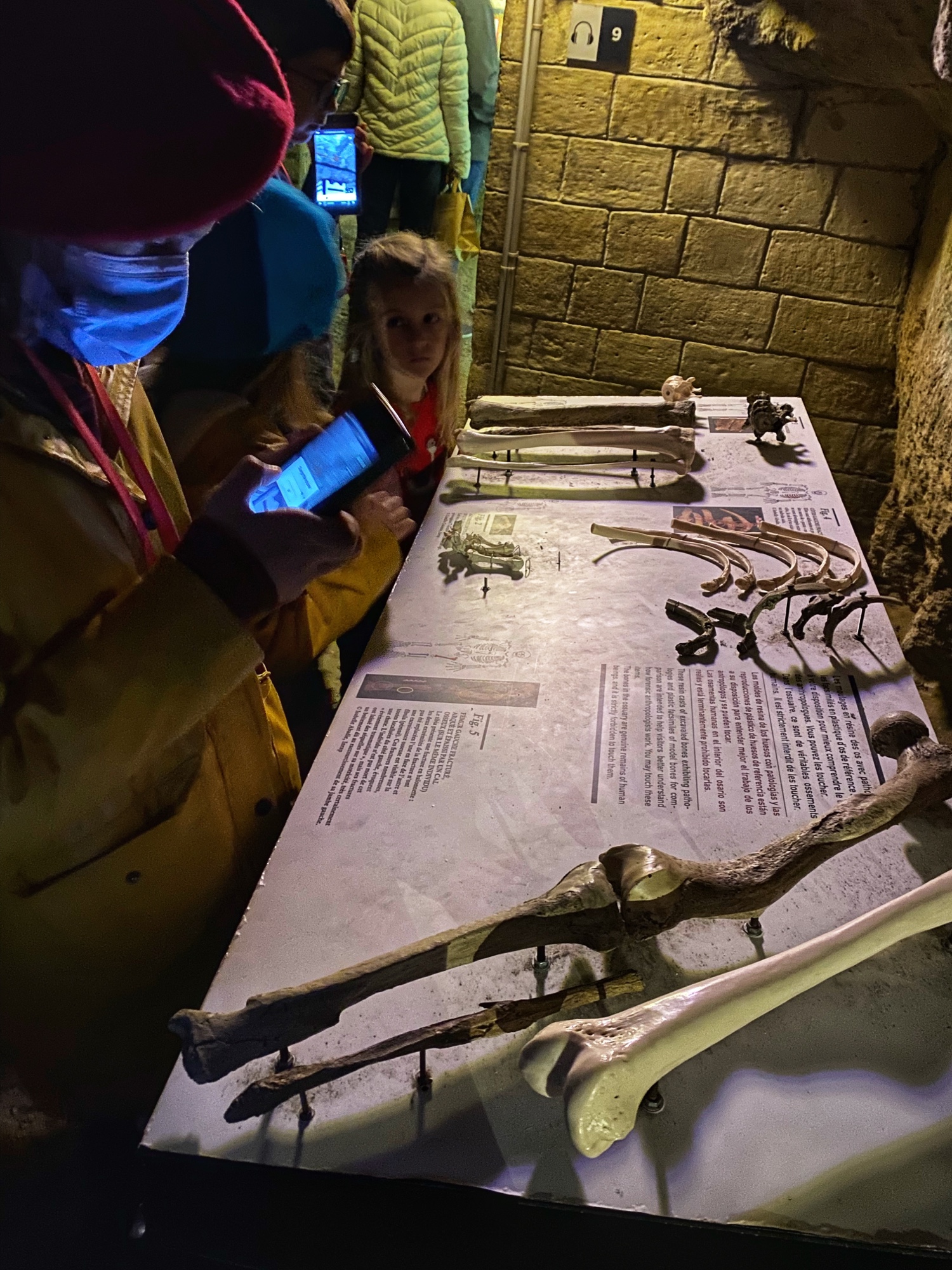
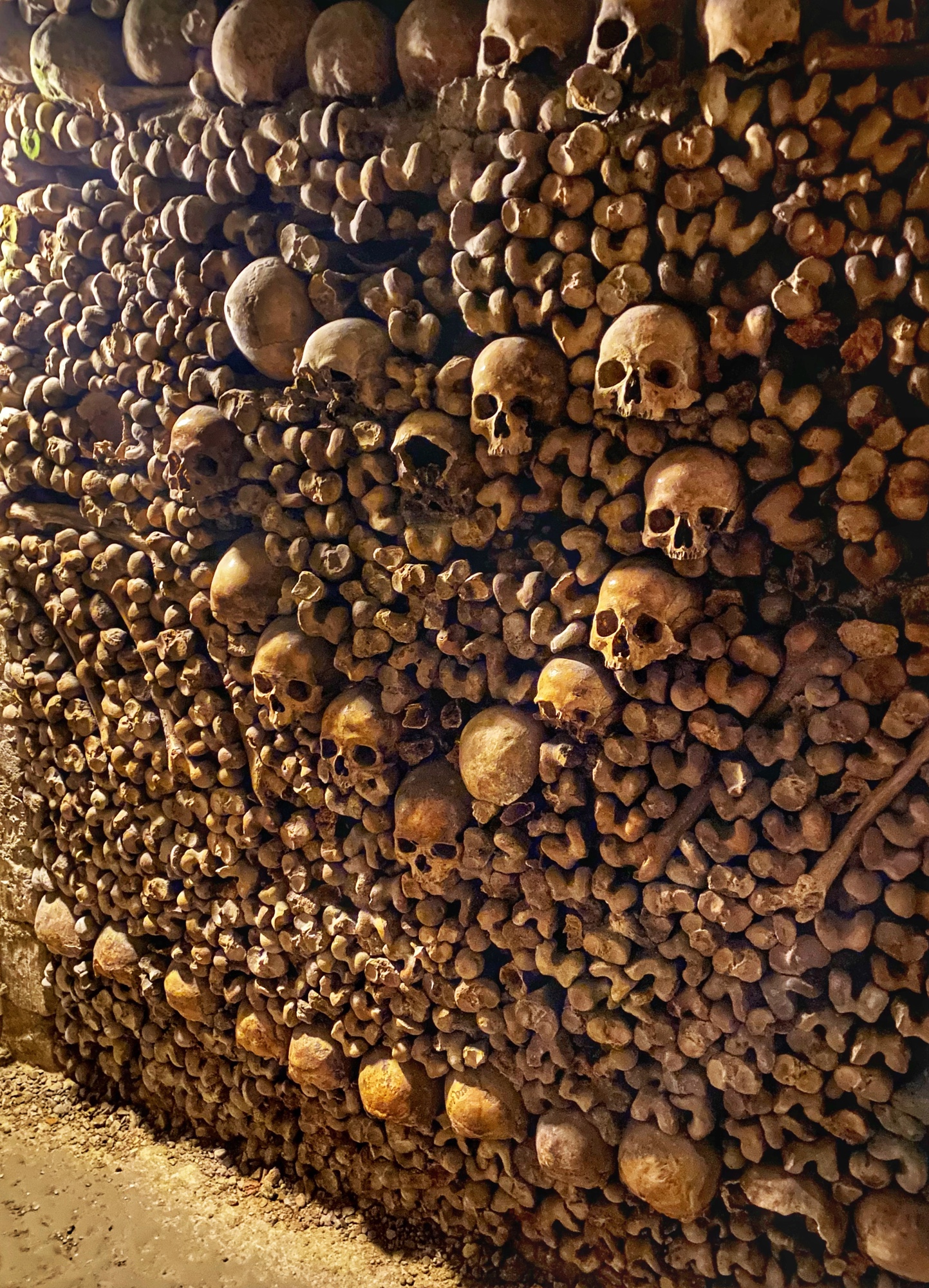
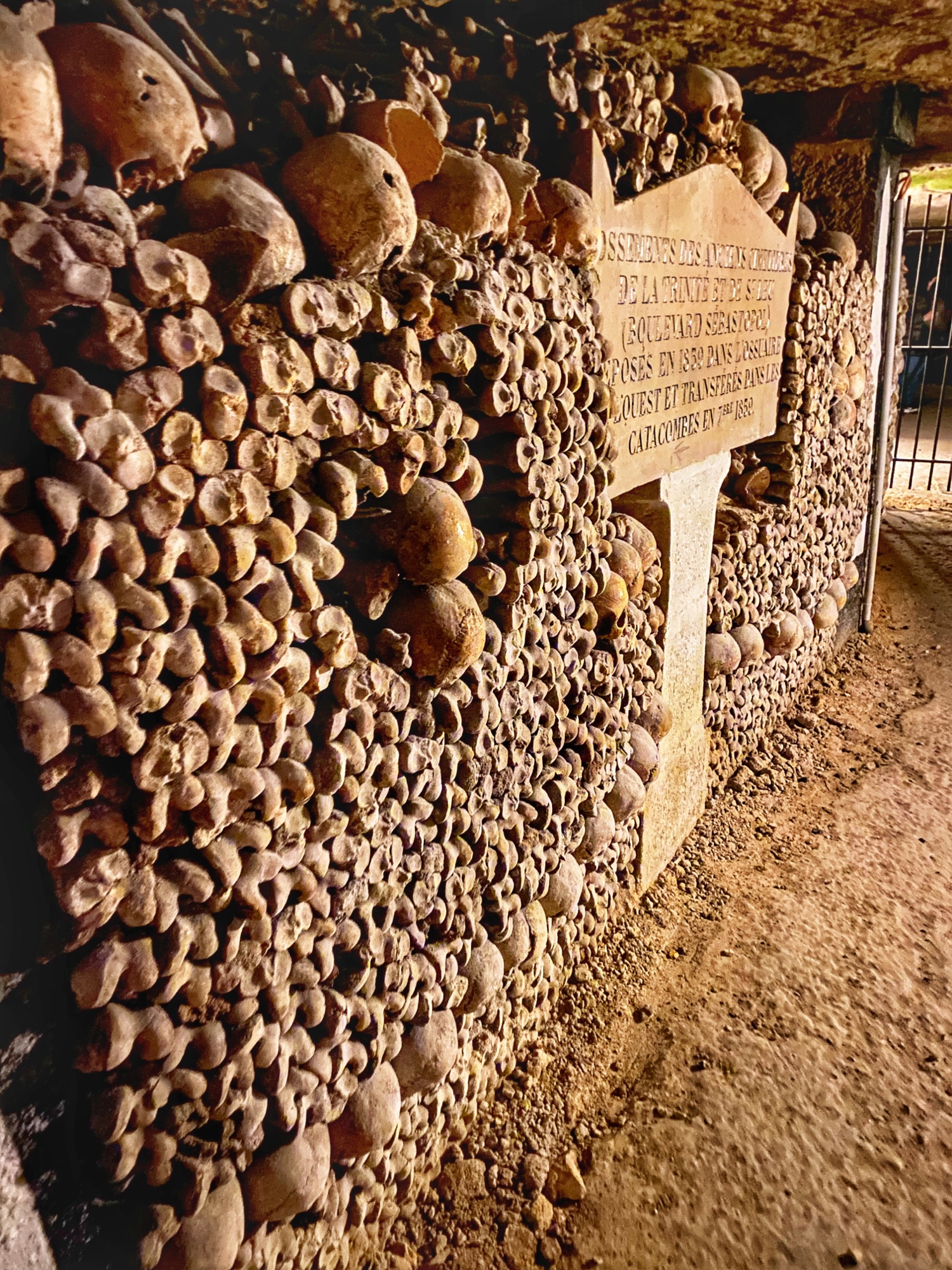
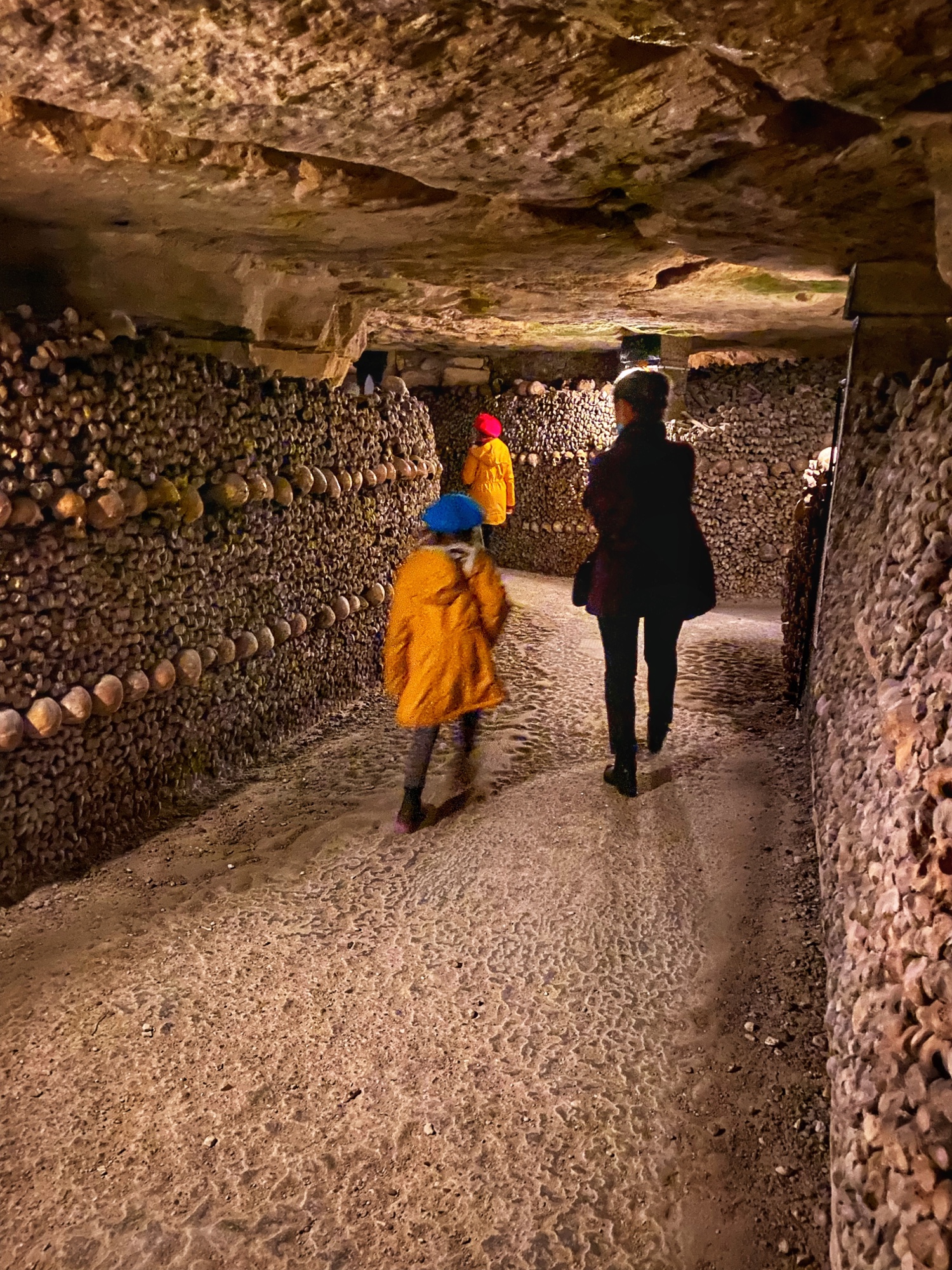

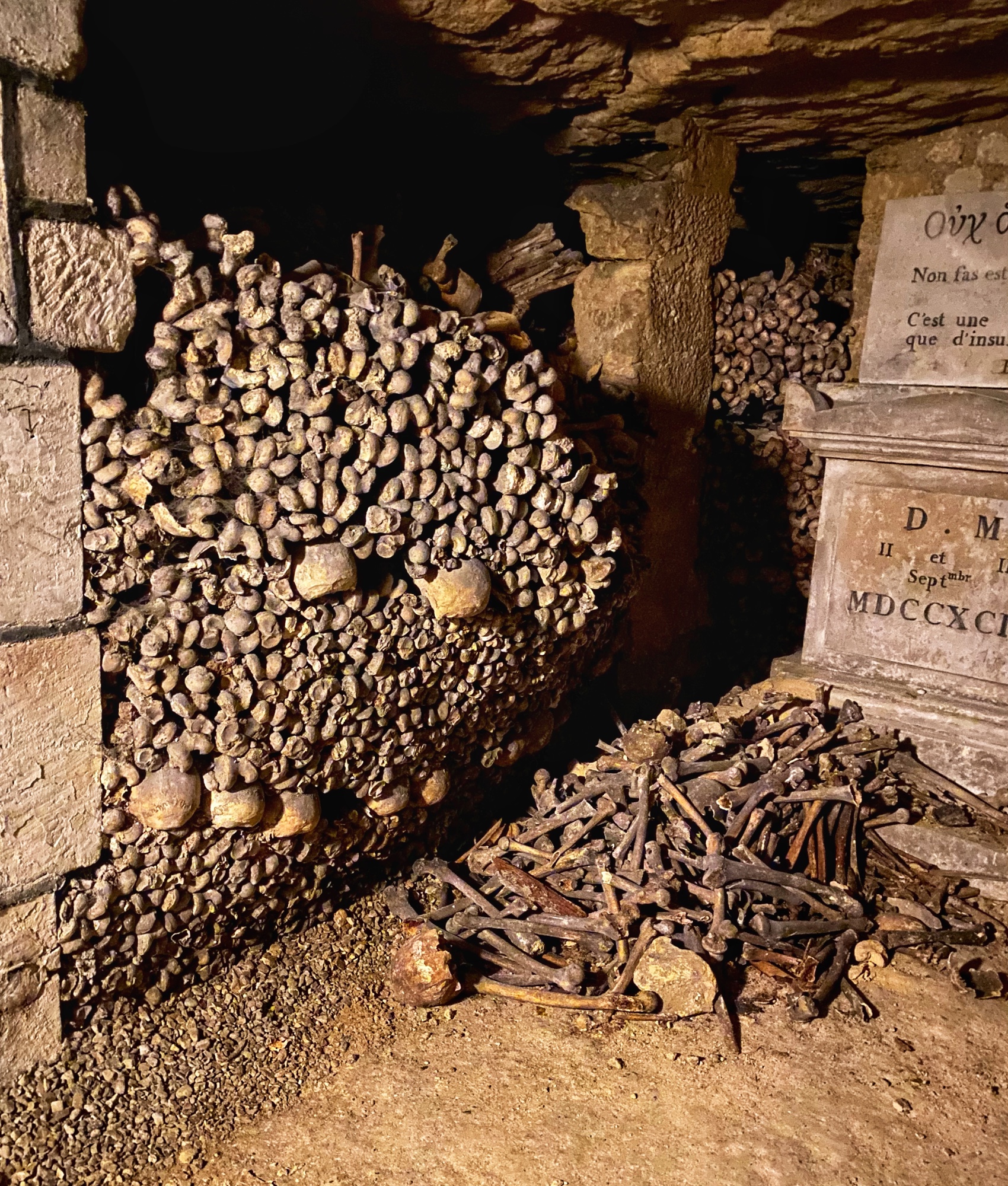
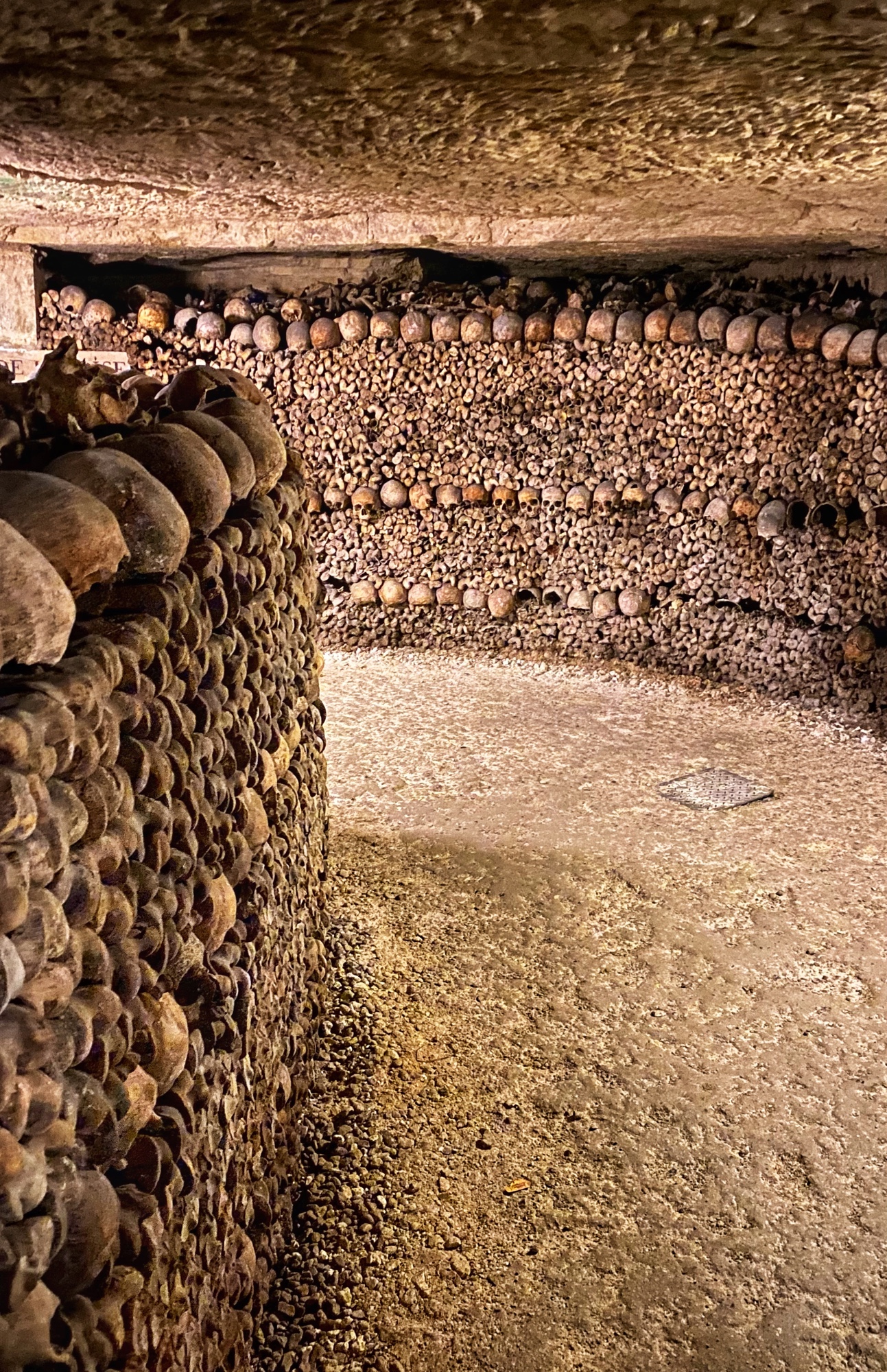
PRACTICAL INFO: Of note, the audioguides are not included with a child’s ticket, so instead we shared and let the kids hold the audioguides. There is a really cool gift shop at the exit of the Catacombs here. Learn more about the Catacombs and book official tickets here.
Paris History
Natural History Museums
Ok, you got me! This series of museums really doesn’t have anything to do with Paris History, but I would be remiss if I didn’t mention them. They’re a fabulous collection including 10 museums, 5 Gardens, 3 Zoos and 2 Libraries! They are as follows: the Museum of Human, the Paris Zoological Park, Grand Gallery of Evolution, Garden of Plants (free), Menagerie & Garden of Plants Zoo, Gallery of Paleontology and Comparative Anatomy, Great Greenhouses of le Jardin de Plantes, Geology & Mineralogy Gallery, Museum Children’s Gallery, Marinarium of Concarneau, Haute-Touche Zoological Reserve, Arboretum Versailles, Val Rahmeh Menton Botanical Garden, libraries, paleosites and more! This area feels a lot like the Smithsonian, but for Natural History. If you want to enjoy a well-rounded experience, visit the National Museum of Natural History on Rue Cuvier, then wander over to the Grand Gallery of Evolution (with children’s gallery) nearby. Then, depending on your interests, check out the Gallery of Mineralogy and Geology or the zoo next door, or head over to the Museum of Mankind in Trocadero before getting a great view of the Eiffel Tower.
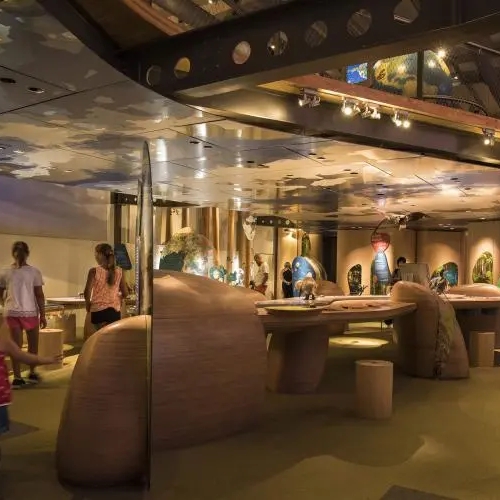


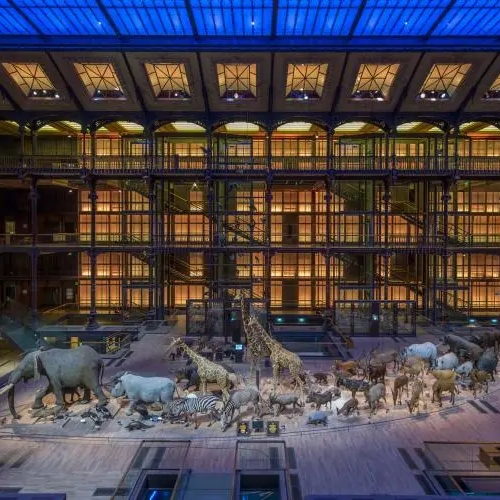
PRACTICAL INFO: Because there are so many options for where to visit in this museum system, be sure to check the website for opening times and ticket prices for each place. Most are free for school age children. Photos above from the following website, click for more info on the museum here.
Museum of Jewish Art & History
This museum, the largest museum of Jewish art and history in France, opened in 1998 adjacent to the Anne Frank garden in Paris in the Marais neighborhood. The building itself (built in the mid 1600’s) was selected for its significance during the Holocaust, as several Jewish families who lived here were arrested and deported. It is located in this neighborhood to pay homage to the Jewish population who lived here both before and after the war. According to the website, “The museum provides areas for temporary exhibitions, educational activities, and research, making it a dynamic and innovative cultural venue.” It was renovated before the turn of the millennium to serve the purposes of the museum and exhibition areas. For anyone interested in seeing France’s greatest collection of Jewish art and artifacts, this is the place. There is a special exhibit dedicated exclusively to the Dreyfus affair (L’affaire) – which is especially unique, and probably not what you think!
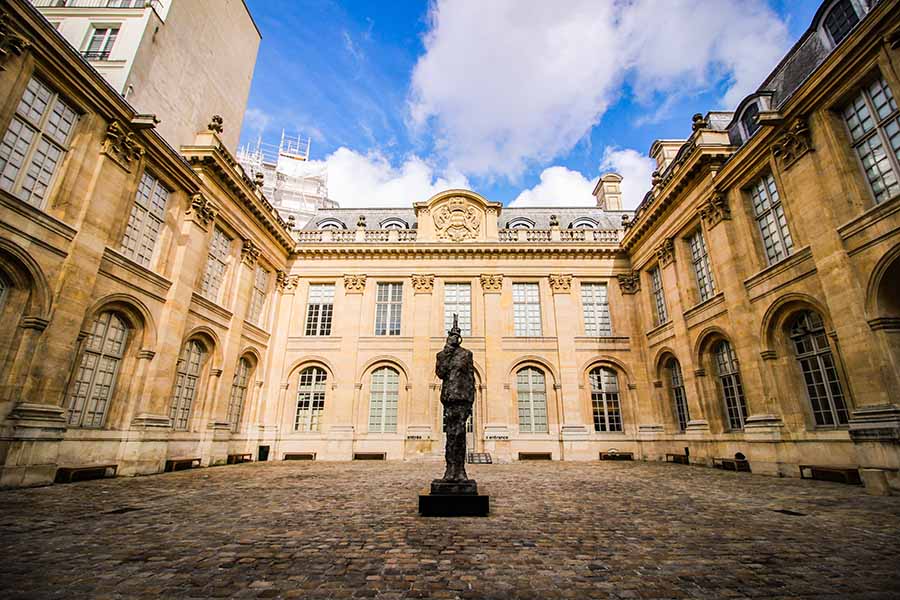
PRACTICAL INFO: Tickets are €10 and include an audioguide (free for under 18). For more information, click here.
Liberation of Paris Museum
This is another unique-to-France museum, encompassing three museums in one: The Liberation of Paris Museum, General Leclerc Museum, and Jean Moulin Museum. Located near the Catacombs int he 14th Arrondissement, this museum is dedicated to the freeing of Paris after WWII. These museums honor the brave resistance movement against the Nazi occupation during WWII. General Leclerc and Jean Moulin were among the leaders of this resistance. Inside the museum lies one of the most interesting exhibits where a mixed reality (hologram) headset can immerse visitors in the experience of being inside an actual shelter the way it was in 1944. This is full immersion at its finest.

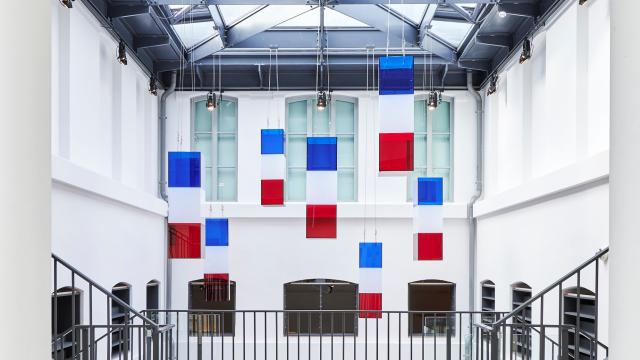

PRACTICAL INFO: This would be a great stop in conjunction with a visit to the Catacombs. It is free to visit, Tuesday to Sunday from 10am-6pm. For €6 you can rent a tablet and play a “family game” to learn more about the French resistance in Paris with riddles and virtual displays. For more information, click here.
Conciergerie
This place, also known as the Palais de la Cité, is so fascinating to behold, whether you visit inside or not. I have always been intrigued by the story of Louis XVI and Marie Antoinette (and the whole French Revolution), but it’s one thing to to know about it, and another thing to see the place where it all went down. Since you can no longer visit the Bastille Prison (it was demolished during the French Revolution as a symbol of the monarchy and oppression and only small ruins remain today) – the place Parisians stormed, signaling the beginning of the French Revolution – you can at least visit the place where at least one member of royalty was held awaiting trail. Interesting note: King Louis XVI was held at the “Temple Prison,” built by the Knights Templar in the 1200’s, but since demolished and turned into a square called “Square du Temple” in the 3rd arr. in Paris. What else can be found in this small green space that formerly held a king before his execution? A statue of the Jewish Holocaust survivor and legendary author, Elie Wiesel! So who was held in the Conciergerie? Why, Marie Antoinette of course! She spent her final 44 days here awaiting trail before her execution (until then she was also held at the Temple prison for almost a year to ensure she wasn’t pregnant), by beheading with the infamous guillotine. You can’t see the guillotine today, but it’s possible to visit where it used to live in Paris – at the center of Place de la Concorde is a giant gold-tipped obelisk in its place, the Luxor Obelisk. It would be rather tongue-in-cheek to say the least to visit these sites around Bastille Day holiday, commemorating the French Revolution.
According to the official website, the Conciergerie (part of the Palais de Justice) originated as a “Salle des Gardes (Guards Room) and the immense Salle des Gens d’armes (Hall of the soldiers), built under King Philip the Fair,” which can still be viewed today along with the medieval kitchens built under King John the Good. Later it moved from Royal Residence to Palace of Justice when “the Kings of France abandoned the palace at the end of the 14th century to settle in the Louvre and in Vincennes. It then took on a judicial role, and part of the palace was converted into prison cells.” Finally, “the Conciergerie became one of the principal places of detention during the French Revolution, with the installation of the Revolutionary Court. Its most famous prisoner was Marie-Antoinette. During the Restoration, a commemorative chapel was erected on the site of her cell.” Today you can view all of these things with a visit to the Conciergerie.
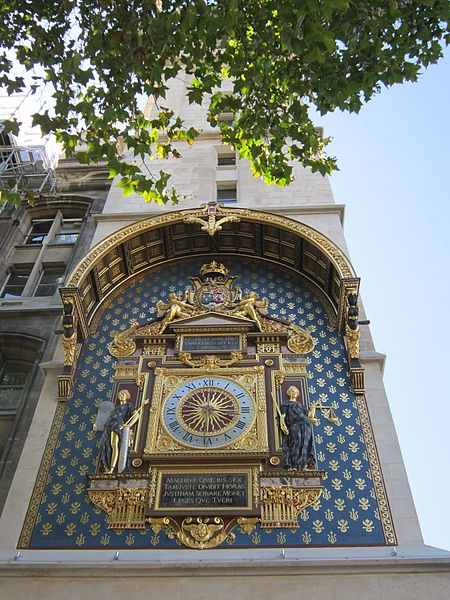
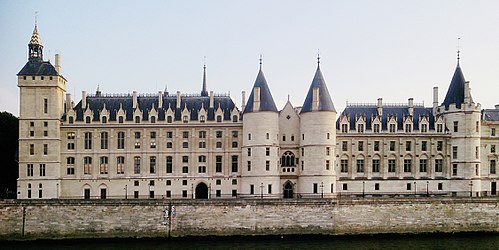
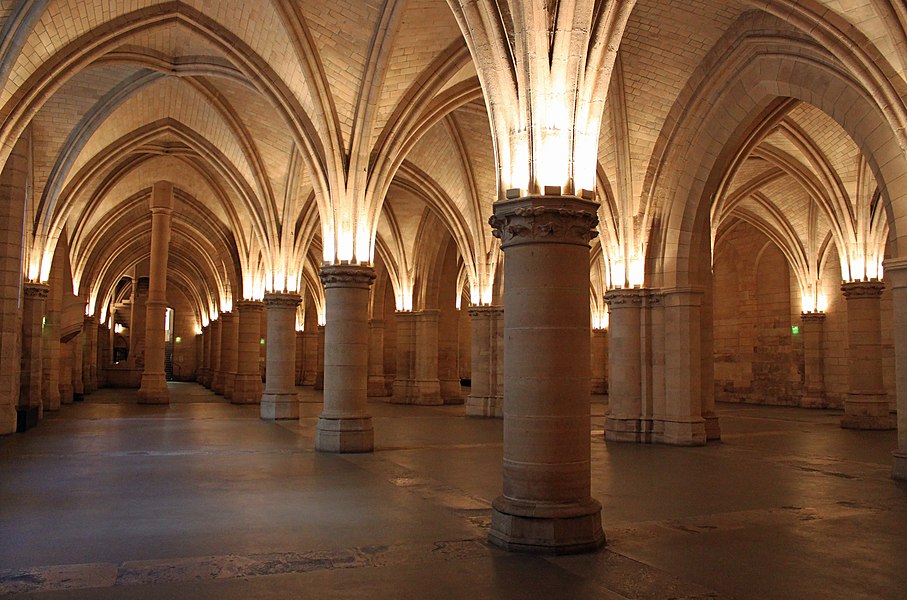
Images: wikipedia
PRACTICAL INFO: The Conciergerie is open every day except 1 May and 25 December from 9:30am-6pm. €11.50 is the price for admission, with children under 18 free to enter (reservations always required, book online). If you want a bargain, purchase a combined ticket to Sainte Chapelle (beautiful stained glass – a must see) for €18.50, and visit the chapel next door. A histopad is included with your visit. Learn more here.
Maison de Victor Hugo/Place de Vosges
One of the most famous writers and Parisian treasures is Victor Hugo. Exiled during the reign of Napoleon, he still was able to publish masterpieces such as The Hunchback of Notre Dame and Les Misérables. This apartment (which he rented before his exile) is full of artifacts including furniture, writings, objects, and works of art that influenced Victor. This is a must see for anyone who is a fan of Hugo’s life and works!
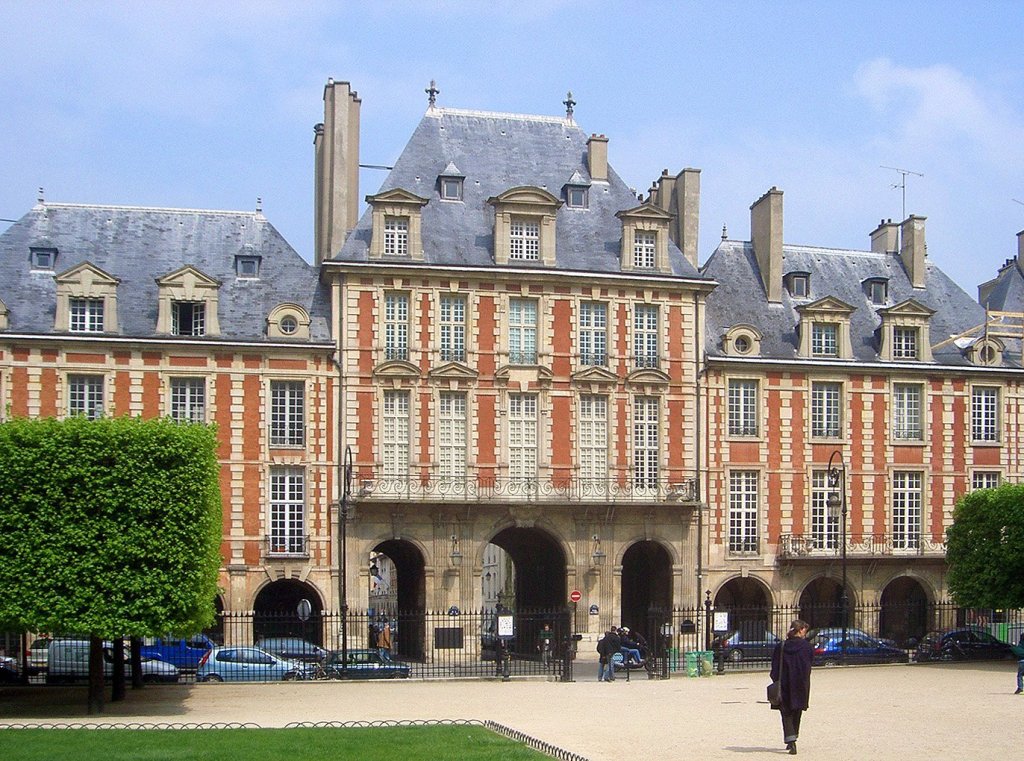
PRACTICAL INFO: The Place de Vosges (Victor Hugo’s home in Paris) is free to visit. It is open from Tuesday to Sunday, 10am-6pm and closed 1 Jan, 1 May and 25 Dec. For more information, click here.
Sorbonne & Latin Quarter
I’m just going to throw this out here because the Sorbonne is one of the most impressive (3rd oldest) universities in France, next to the University of Paris (which is the 4th oldest in the WORLD), and it is situated in the Latin Quarter, a hip cultural hub of Paris with a history of cultural and political student movements. The Sorbonne opened its doors in 1257 and has remained a prestigious institution for over 750 years in the fields of culture, science and art. Important decisions were made from here including the trial of Joan of Arc in the 15th century, and influential Catholic debates related to the “Great Schism” and excommunication of the Jesuit order. The only part of the university that remains original to its founding is the Saint Ursula chapel, where Cardinal Richelieu was laid to rest. The remaining buildings were rebuilt and renovated during the time of Napoleon. Today it boasts “ambitious international policy of education and research with a high social impact.” It’s worth visiting just to see the buildings as you wander through the Latin Quarter. Be sure to stop at the Pantheon, too!
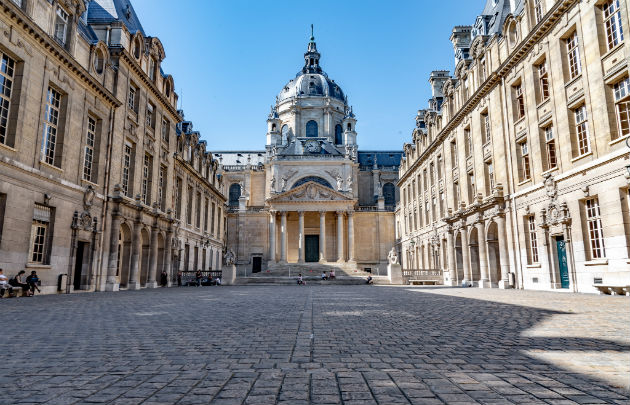
Learn more about the history and significance here.
HÔtel de Ville
Nearly every city in France has a “Hôtel de Ville” or City Hall, and most of them are worth viewing, at least from the outside. The Hôtel de Ville in Paris is no exception. Built in the early 1500’s by the famous King François I, this city hall building served as the “headquarters of the municipality of Paris” since before the building existed, in 1357 (when it was just a “house of pillars”). Although it’s not necessary to tour this city government building to gain an appreciation for it, it is possible by arranging for a private tour (see below). Otherwise, just keep an eye out for it as you walk along the Seine or gaze over to the banks from Ile de la Cité. Many important and noteworthy events happened from this place including the proclamation of the French Third Republic in 1870 and a speech by Charles de Gaulle on 25 August 1944 during the Liberation of Paris.
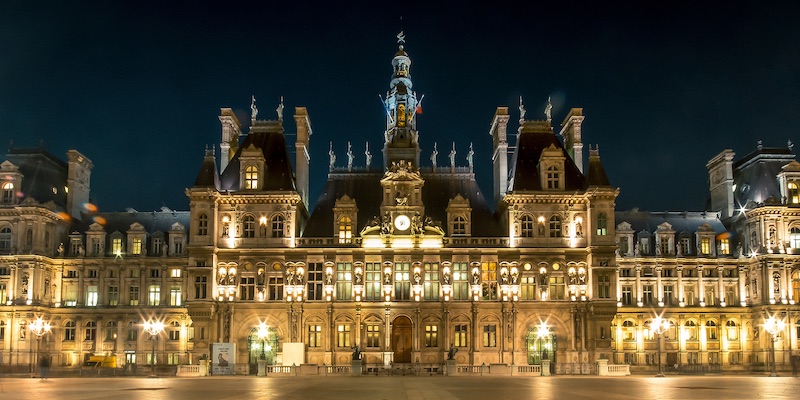
For more information or if you wish to organize a private tour, click here.
Haute Society
If historic architecture is your thing, Paris has some of the most impressive buildings in the world. It’s a real treat to visit the various famous landmarks in in the City of Lights and appreciate the varying styles across the centuries. Many of these great erections have been renovated or restored over the years – read on to learn more and how to visit each one!
Grand Palais
The Grand Palais was built in the late 1897 in preparation for the Universal Exposition in Paris in 1900. Two buildings were erected for this event (see Petit Palais below) and were meant as a grand exhibition and event hall. During WWI it was used as a military hospital, and during the Nazi occupation of WWII, it was used as a truck depot and then propaganda rally space. During the liberation of Paris, a great fire broke out amidst the fighting, but the building was central for the resistance and served as a headquarters for Parisians and the allies. After the war it was used for various functions including museum exhibits. It is currently being renovated to be ready for the 2024 Olympics as it will be used as a fencing and taekwondo venue. In 2025 it will be reopened to the public for expositions, shows, and museum exhibits. This building is certainly grand (hence the name) and is worth a peek when in Paris, even if its just a walk by. Pay attention to the art nouveau detailing!


Images: Time Out Pairs & Wikipedia
PRACTICAL INFO: There are currently no entrance times. For info on current events at the Grand Palais, click here. For information on the Grand Palais renovations due to be complete before the 2024 Paris Olympics, click here.
Opera Garnier
This incredible Opera house is one of the most prestigious in the world! If you have heard of The Phantom of the Opera, well, this is the infamous opera house where it took place. Built during Napoleon’s reign (finished in 1875), it is a symbol of incredible opulence and can seat nearly 2,000 people. The “traditional Napoleonic style” overlaps Baroque and Renaissance architecture to create something exclusively Parisian. You can visit this stunning opera house for a show (these days it’s used mostly for ballet), or you can tour the building during the day. See below for details!
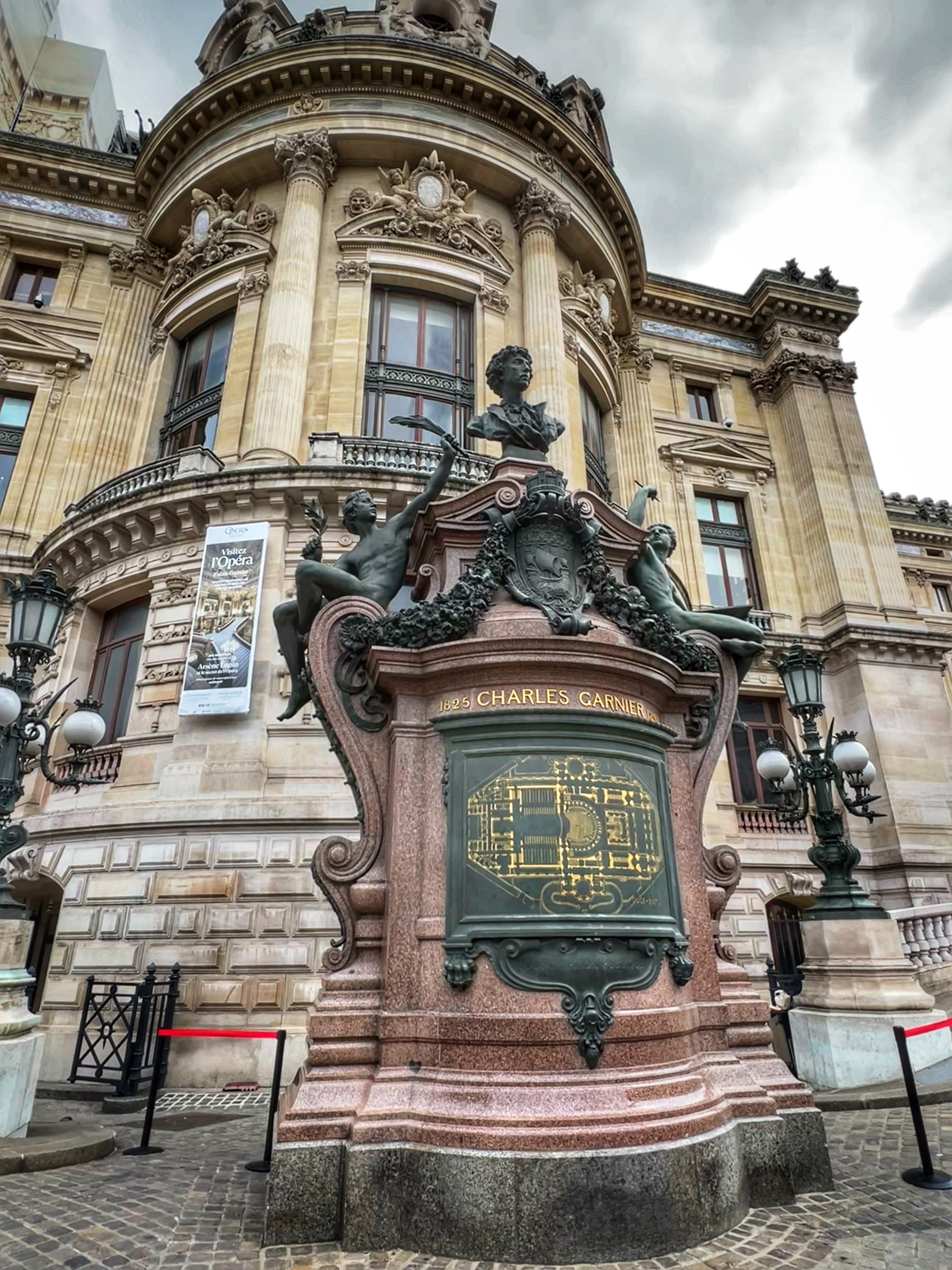

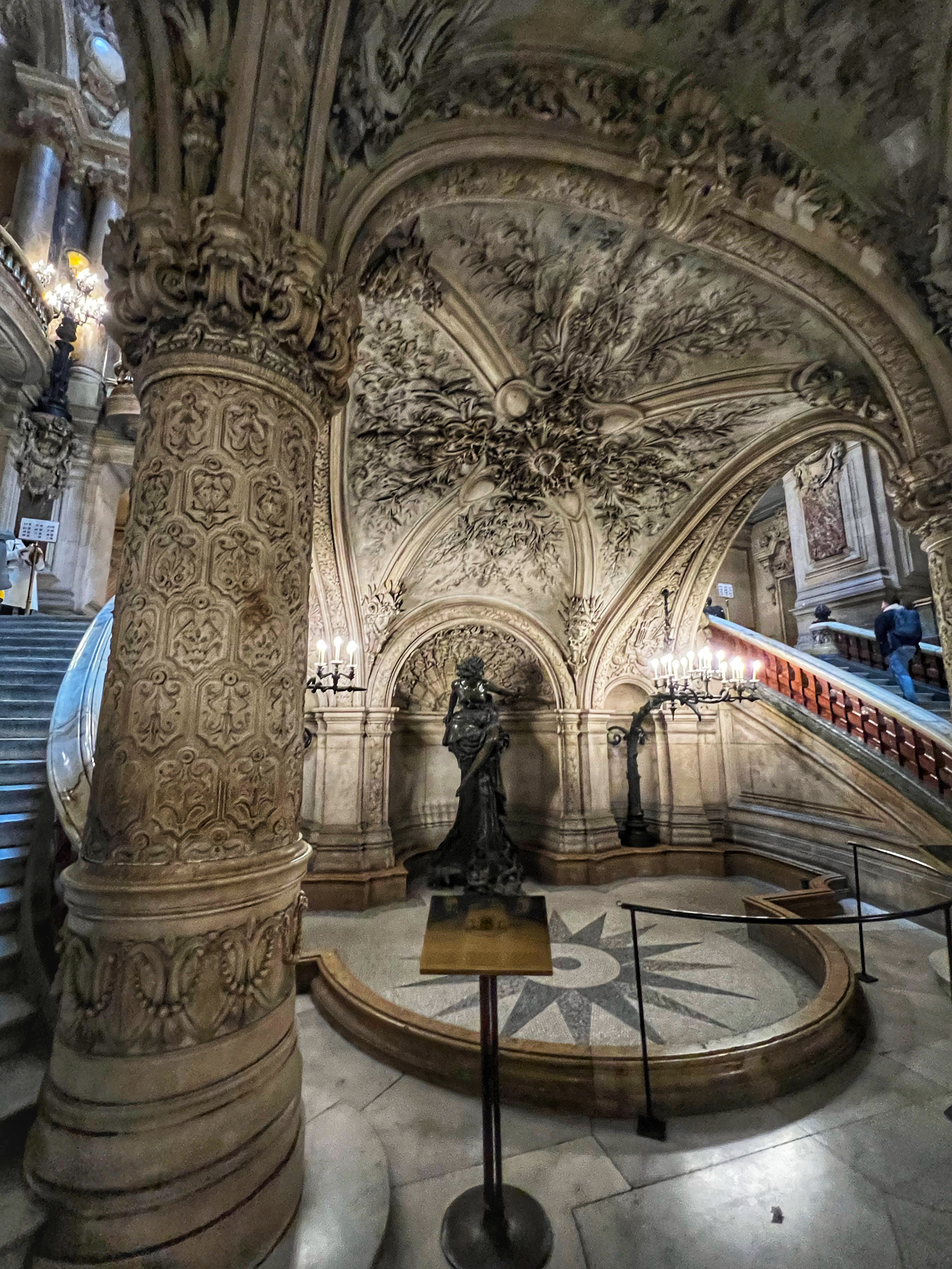
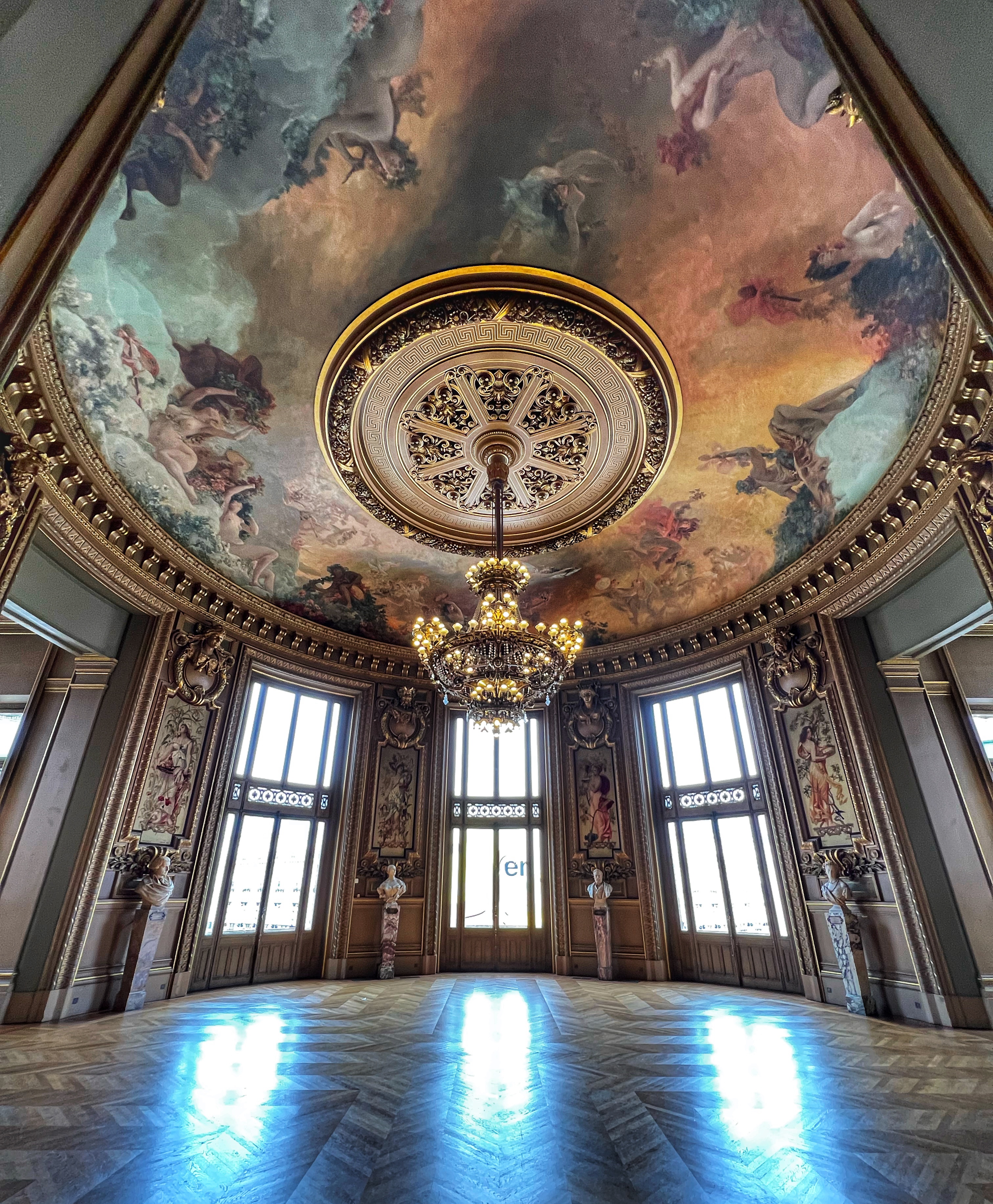

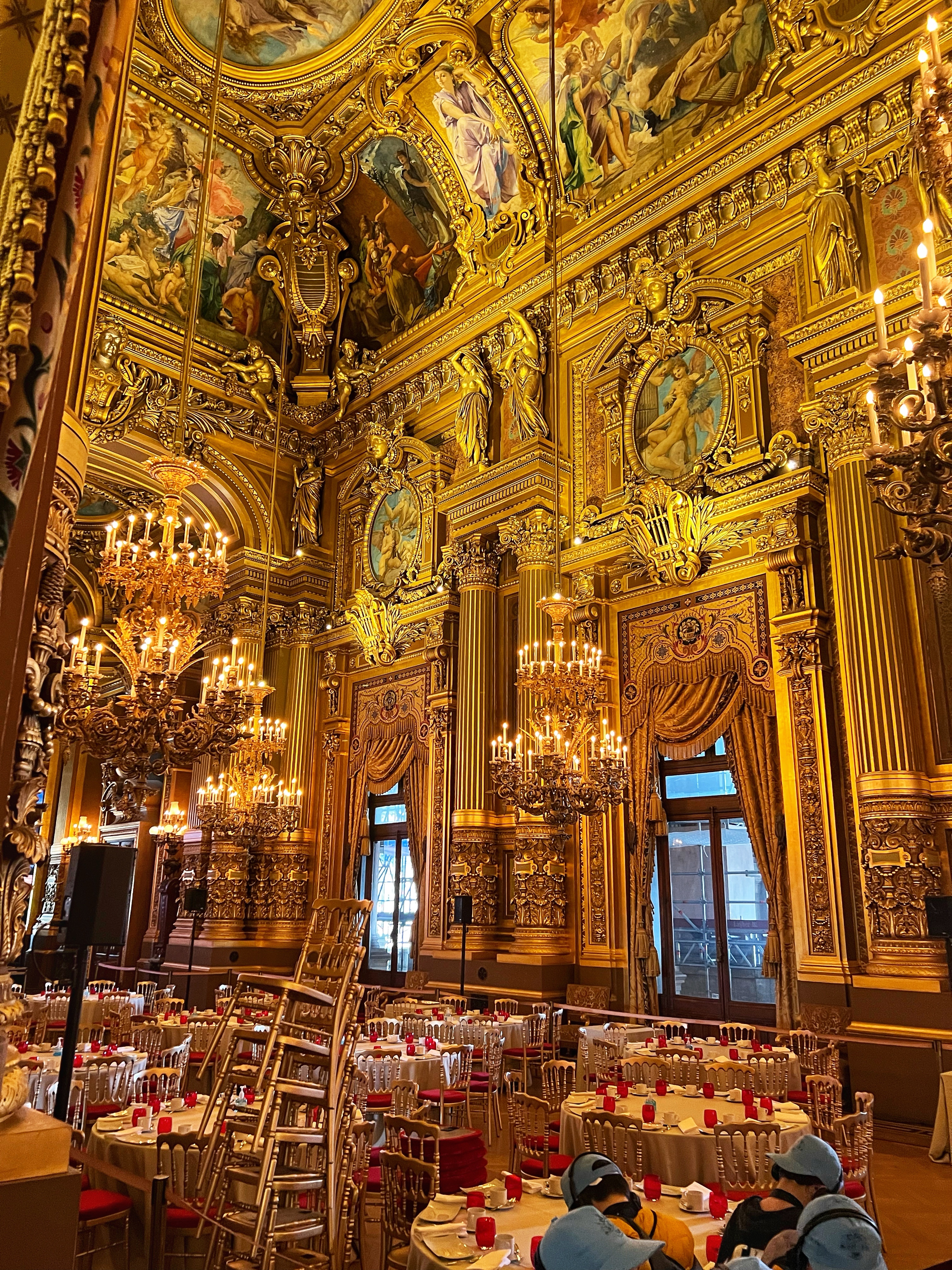
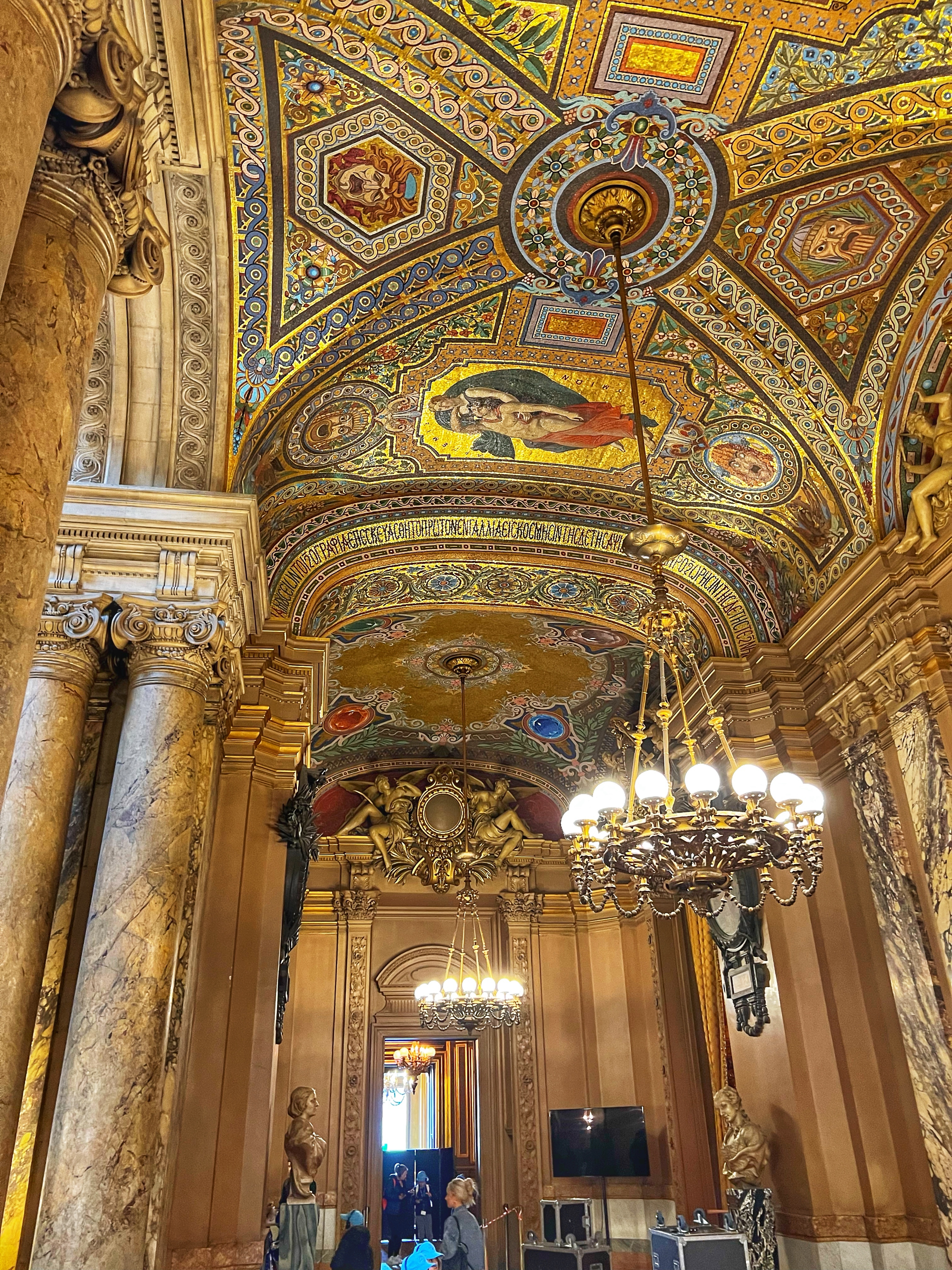
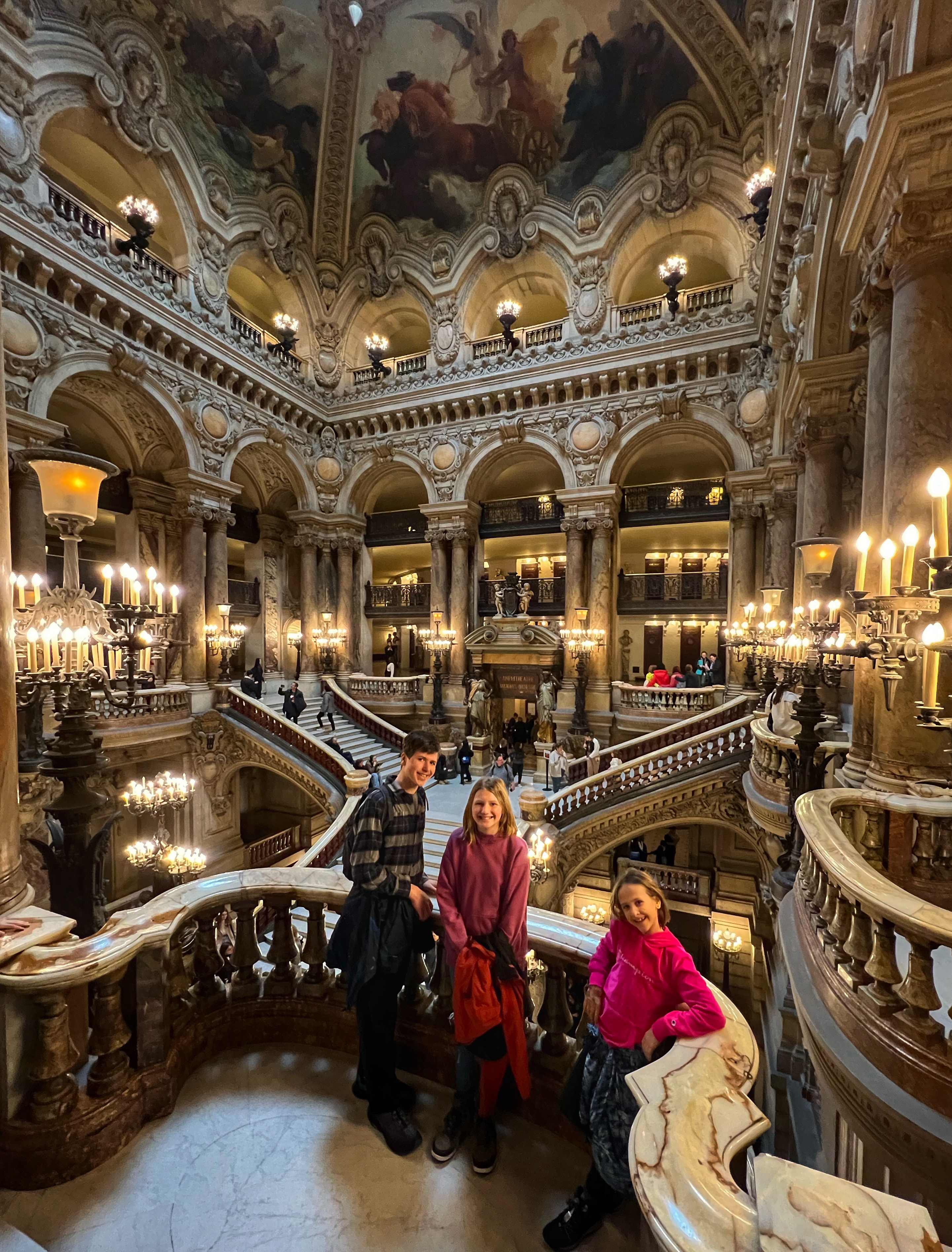

PRACTICAL INFO: The opera house is open daily from 10am-5pm, and self guided tour tickets are €14 or free under age 12. For more information, click here.
CHÂTEAU DE Versailles
Ahhh, Versailles. This is the one historic “Parisian” destination that is a must-see for anyone fond of French history. It has 15 million annual visitors, making it one of the most popular tourist attractions in the world! Originally a small hunting lodge in the 1600’s, it was expanded into a grand palace by King Louis XIV when he found the Louvre to be too cramped for his style. The Sun King (who’s 72 year reign is the longest of any sovereign in history) built Versailles and lived here for many years. He was followed by successors King Louis XV and Louis XVI who expanded it further and added Marie Antoinette‘s Hamlet, then eventually lost it all in the French Revolution. Napoleon lived here during the summers of his reign as well, but never restored it. Over the years, the palace was used to sign treaties (the Paris Peace Treaties ending the American Revolution, then the Treaty of Versailles ending the Great War) and is today a well restored museum of sorts, chronicling the rise and fall of the French monarchy and Napoleonic empire. It was designated a UNESCO World Heritage Site in 1979 and is worth at least a half day if not a full day visit from Paris. Must see locations inside Versailles include the Hall of Mirrors, Royal Chapel, Royal Opera, Museum of the History of France (especially fascinating collection of massive army murals), Royal apartments, musical gardens and Marie Antoinette’s Hamlet (my favorite).
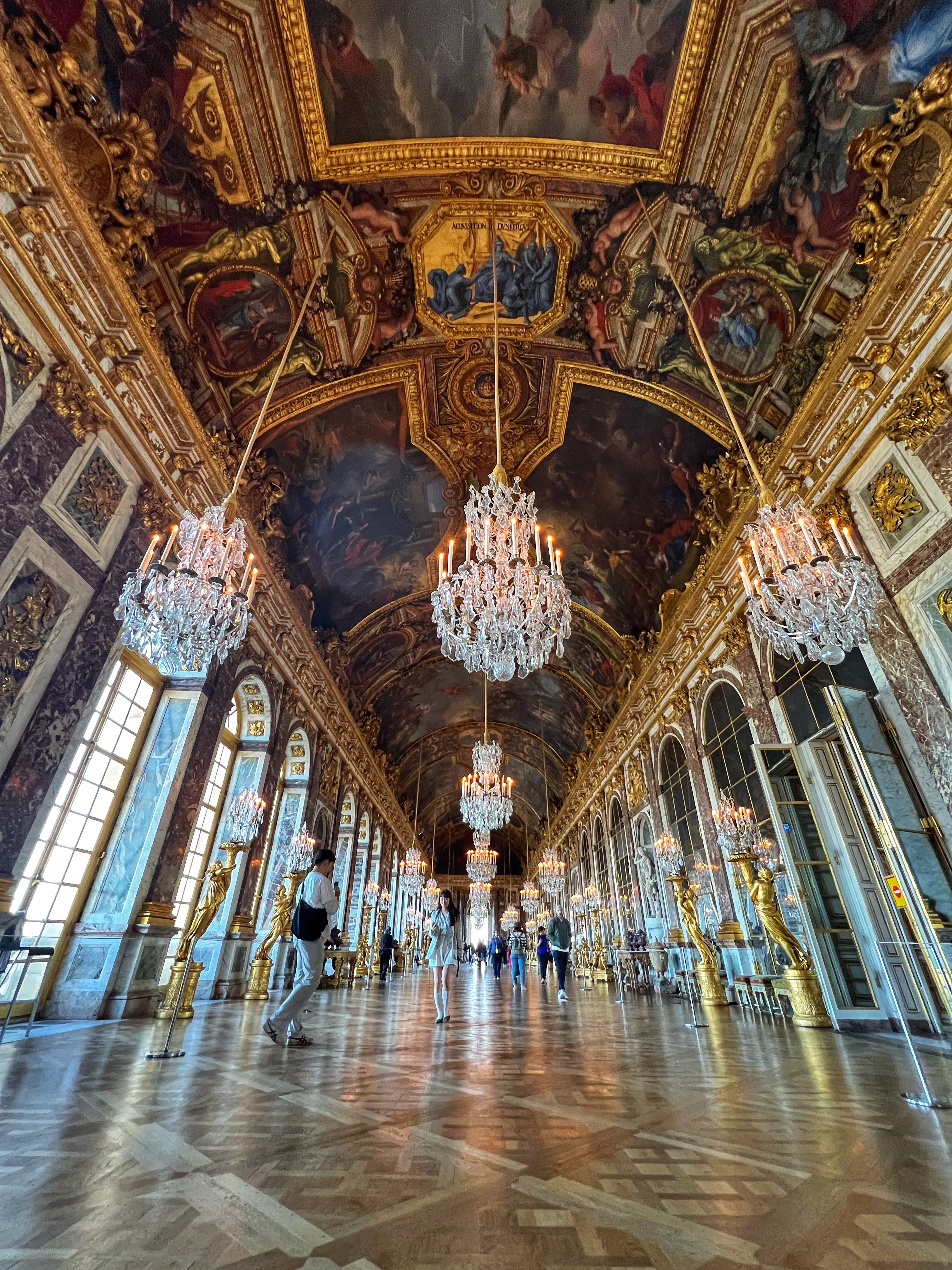



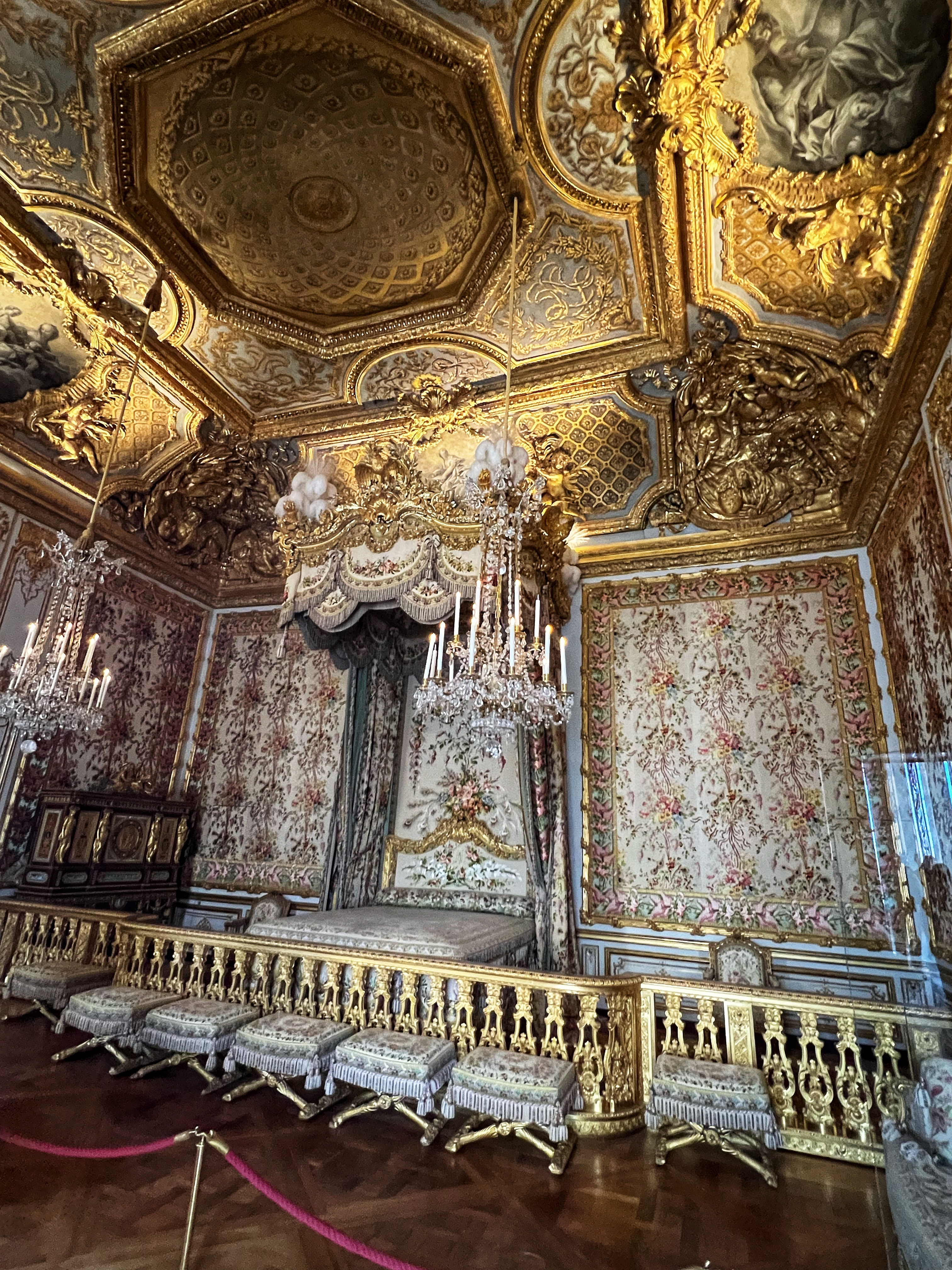

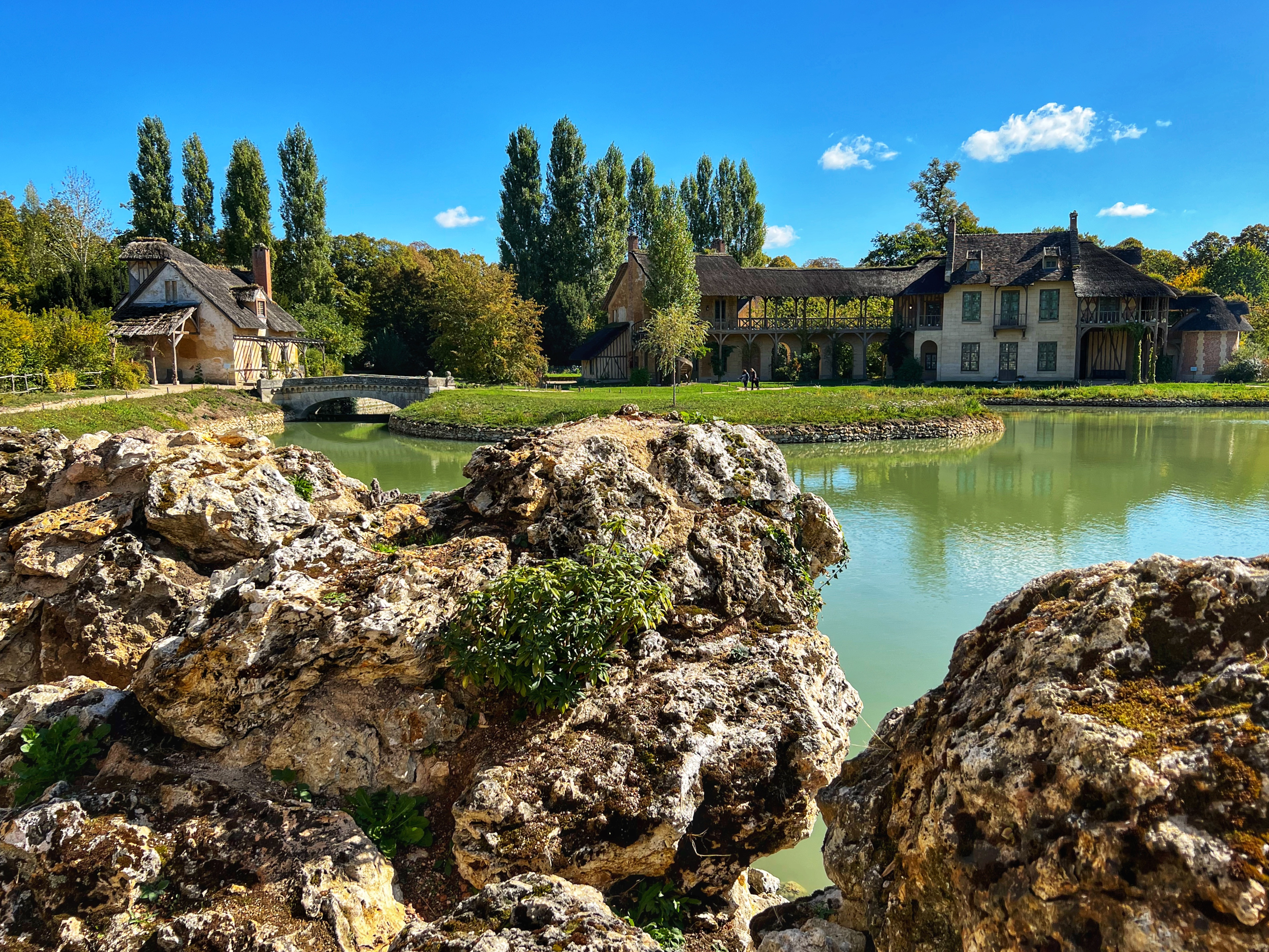
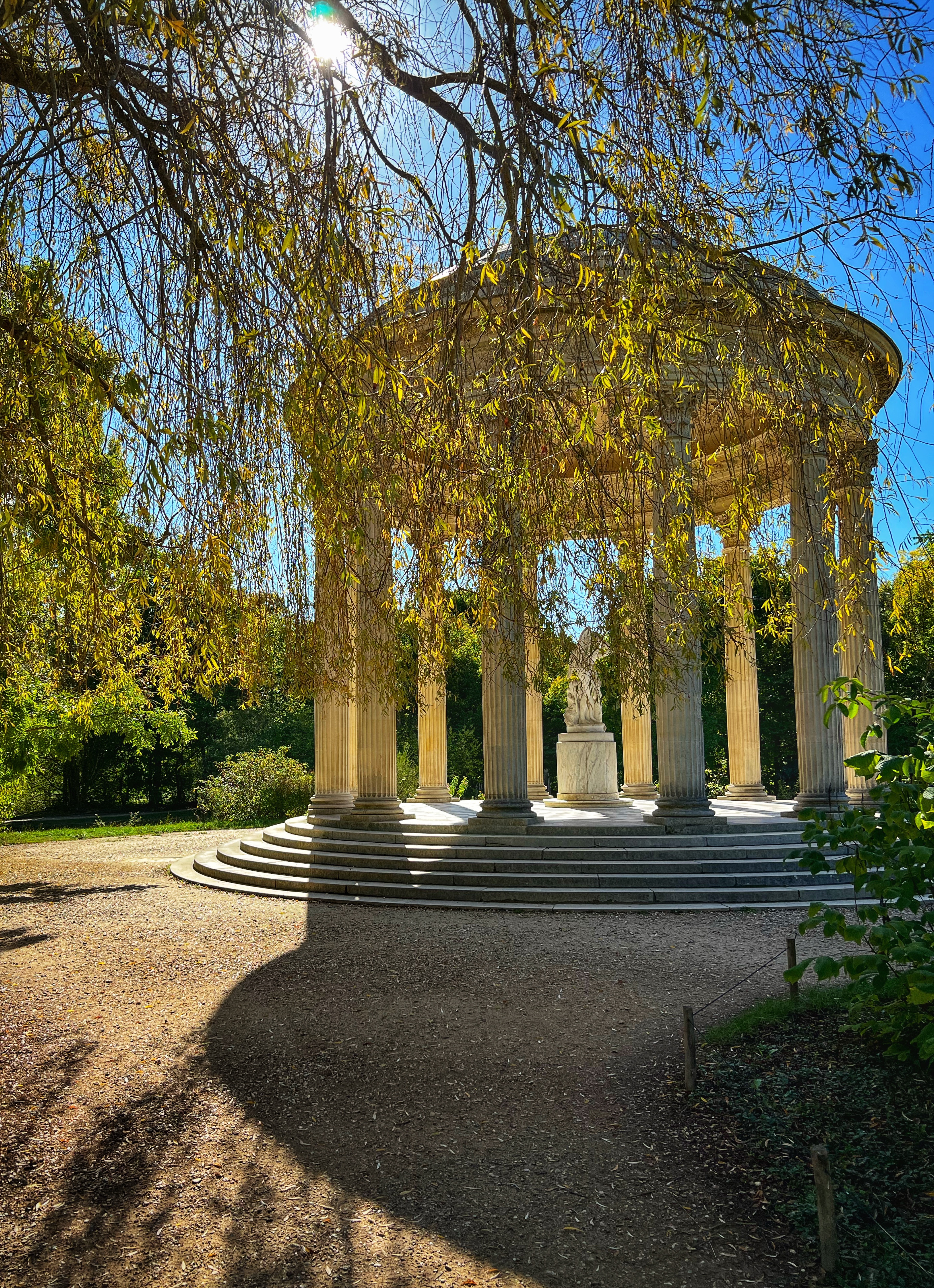

PRACTICAL INFO: Versailles palace can only be visited with a timed entrance ticket. Decide ahead of time if you want to visit the gardens and Marie Antoinette’s Hamlet and plan accordingly, as the Hamlet doesn’t open until noon. Download the free Versailles app here to save time and money – it’s the same as the audioguide inside and even better. For more information, click here. It is possible to rent bicycles to bike around the gardens, or rent a golf cart for ease of getting around to the Petit Trianon and Hamlet.
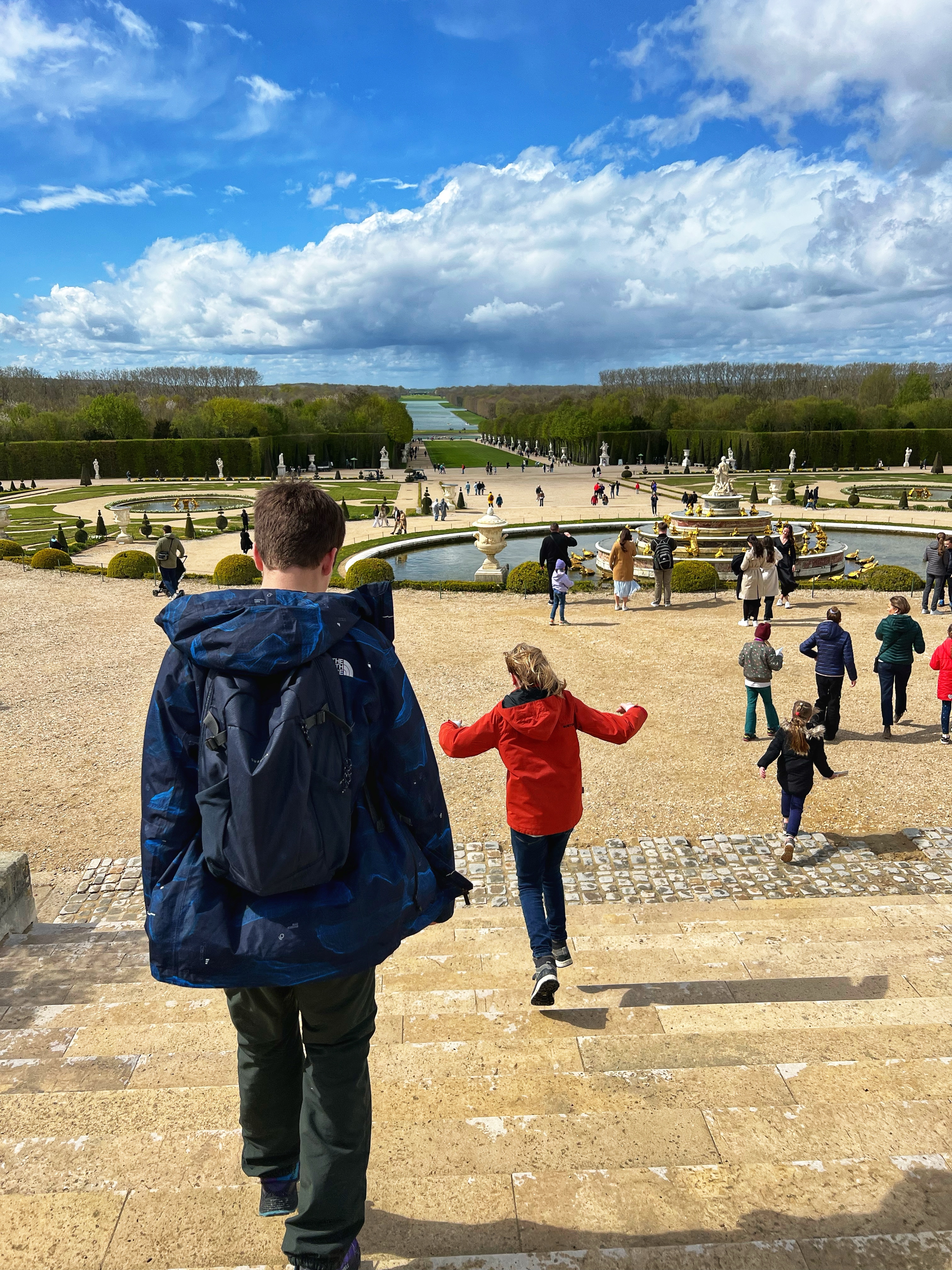
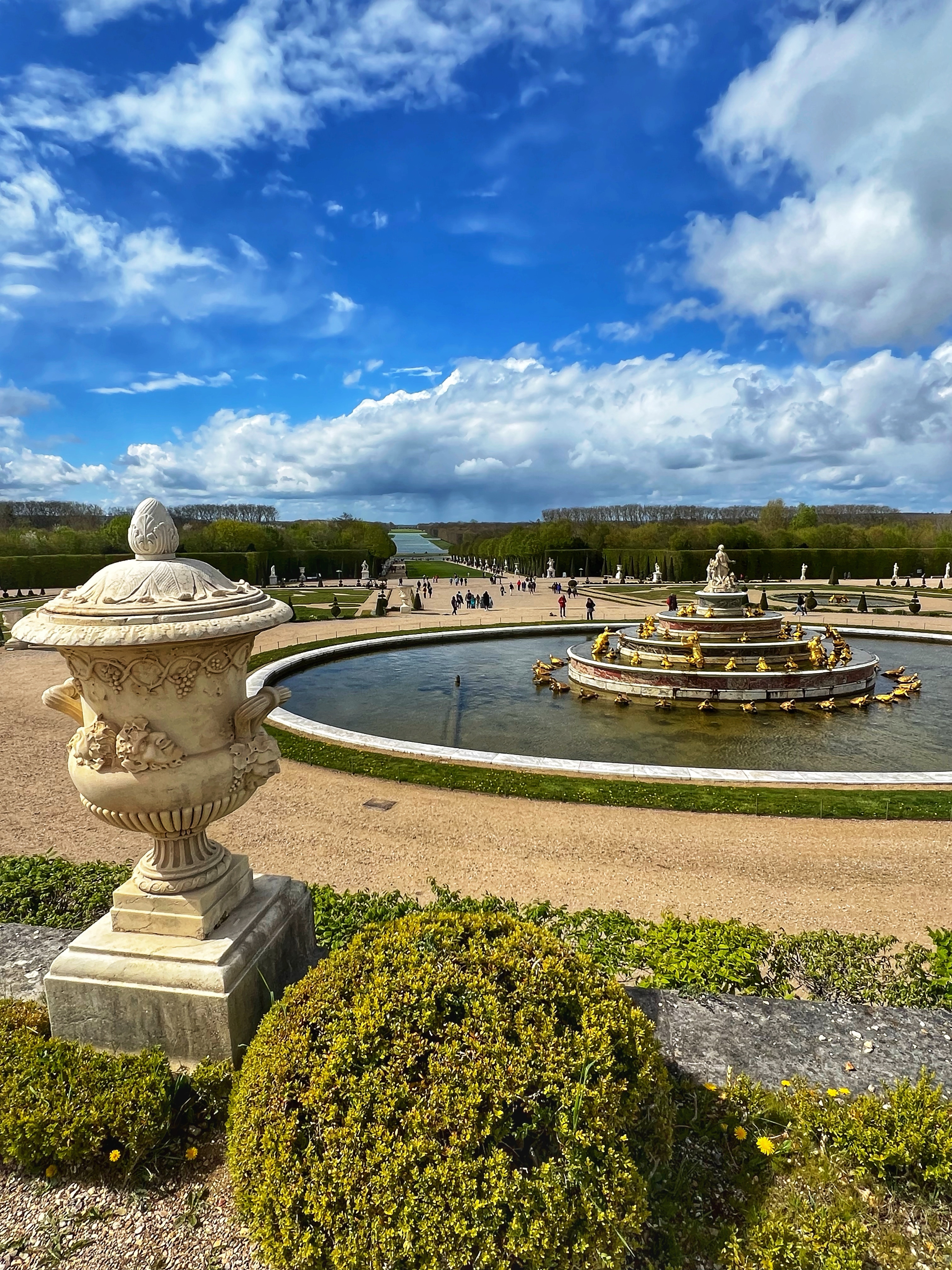
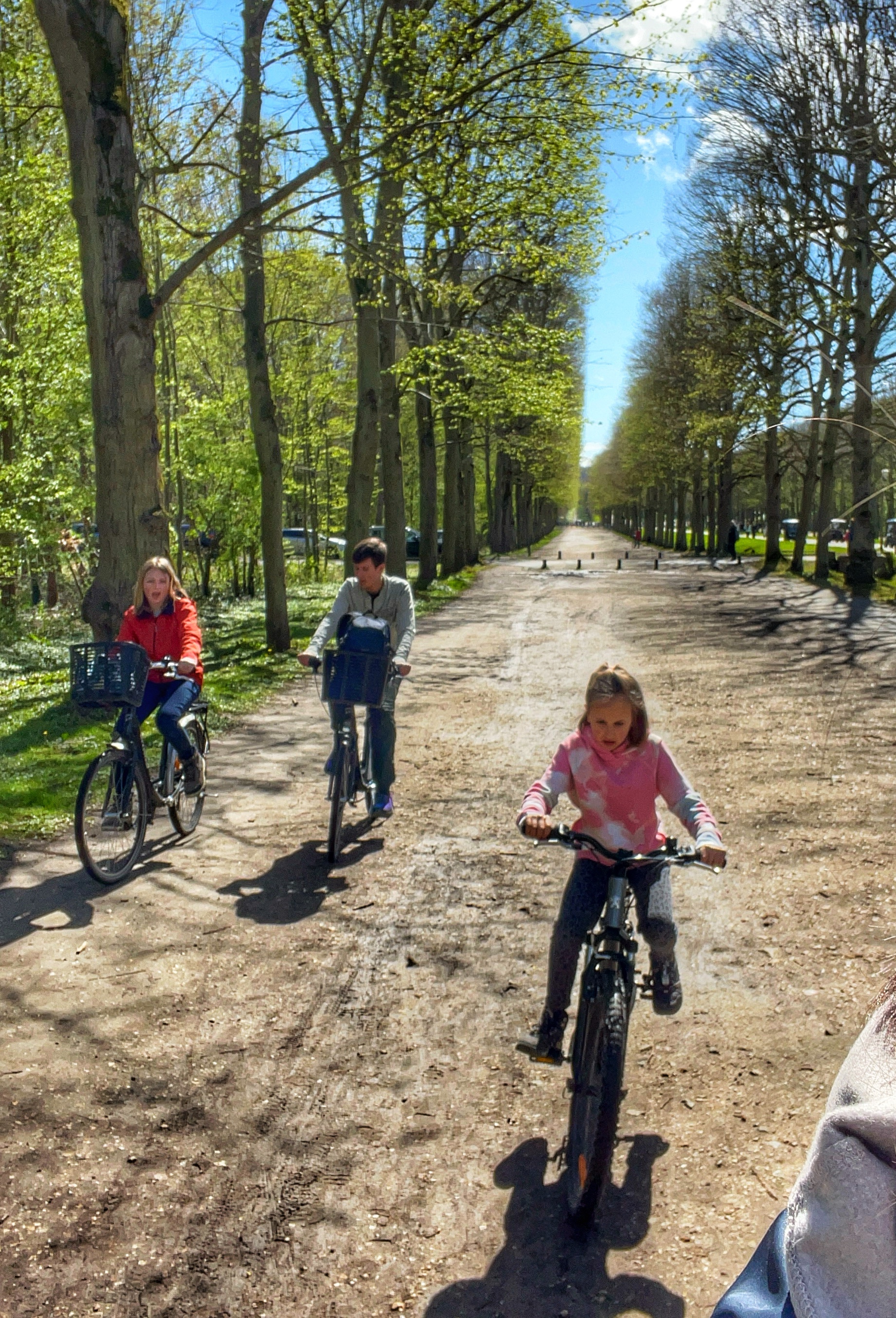
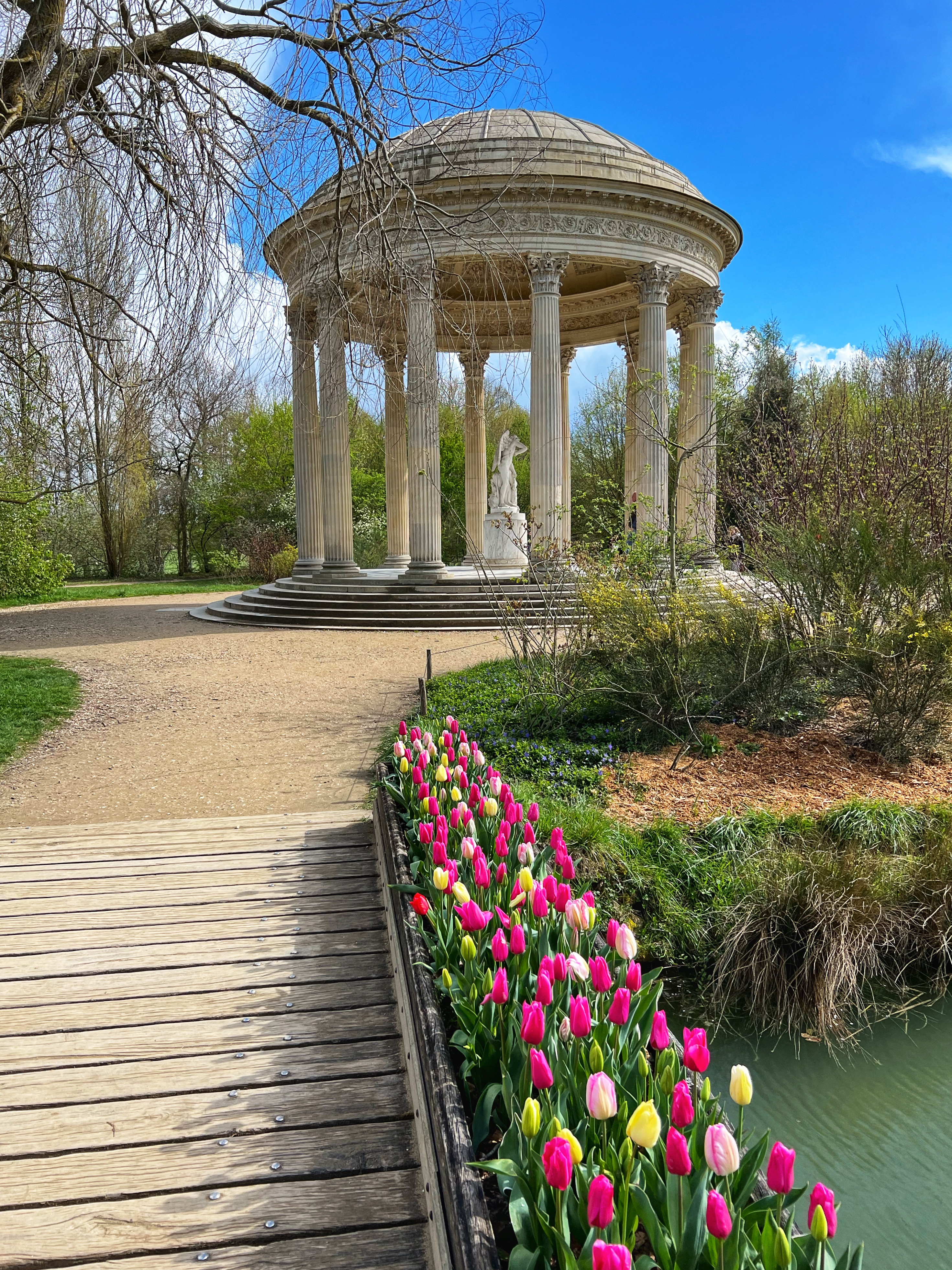

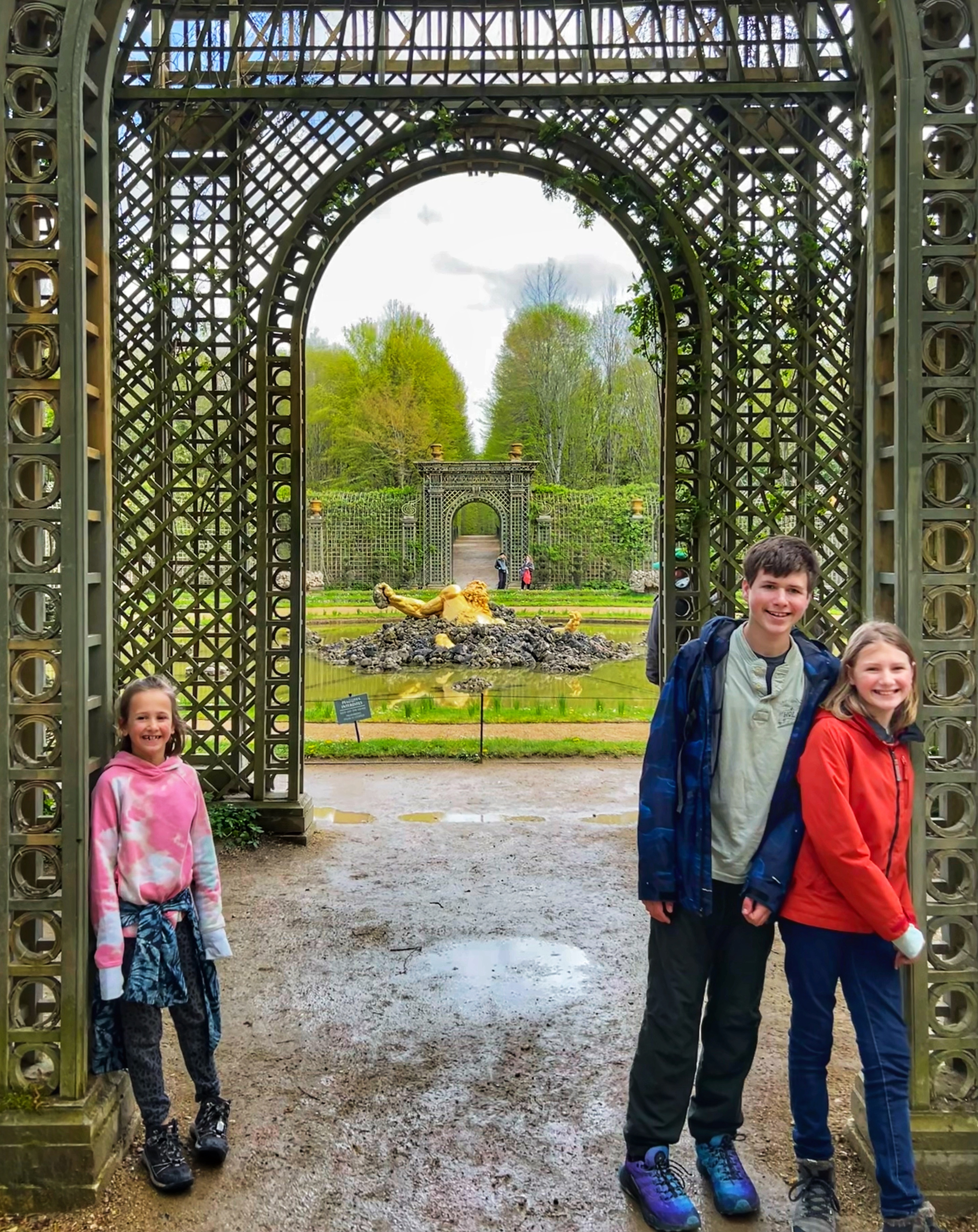
Louvre
You are going to louuuvre the LOUVRE Museum! There is a reason it is the world’s most visited museum – it has 38,000 works of art that would take over 200 days to see if you wanted to view each one. Not only is the museum full of incredible works of art, but the building itself is a historical masterpiece. What once began as a fortress (built in 1190) along the Seine River, in 1546 it was transformed into a palace for French kings by François I. It was expanded many times and inhabited by all the French kings until 1682, when Louis XIV moved the primary royal residence to the Palace of Versailles (see above). From that point on, the Louvre served as a building to house and display the royal collection, and then eventually a museum for the public since the time of the French Revolution.
Of course many visitors flock to the Louvre to see Leonardo Da Vinci’s Mona Lisa…but my favorite by far is the Winged Victory, a statue without a head or arms that dates back to 200 B.C. An incredibly detailed sculpture – it’s hard to believe it sat on the bow of a ship! I also loved the many Renaissance-era paintings and incredibly ornate ceilings in each room. The most impressive room to me (that is often not very busy) is Napoleon Bonaparte III’s lavish apartment – so much opulent detail and so well preserved! Other popular works in the Louvre include Liberty Leading the People (a painting representing the French Revolution), the glass pyramids built in 1989 that can be viewed outside in the courtyard without tickets, the Venus DeMilo (sculpted between 150-125 BC), the Egyptian collection, Ain Ghazal and the Code of Hammurabi.

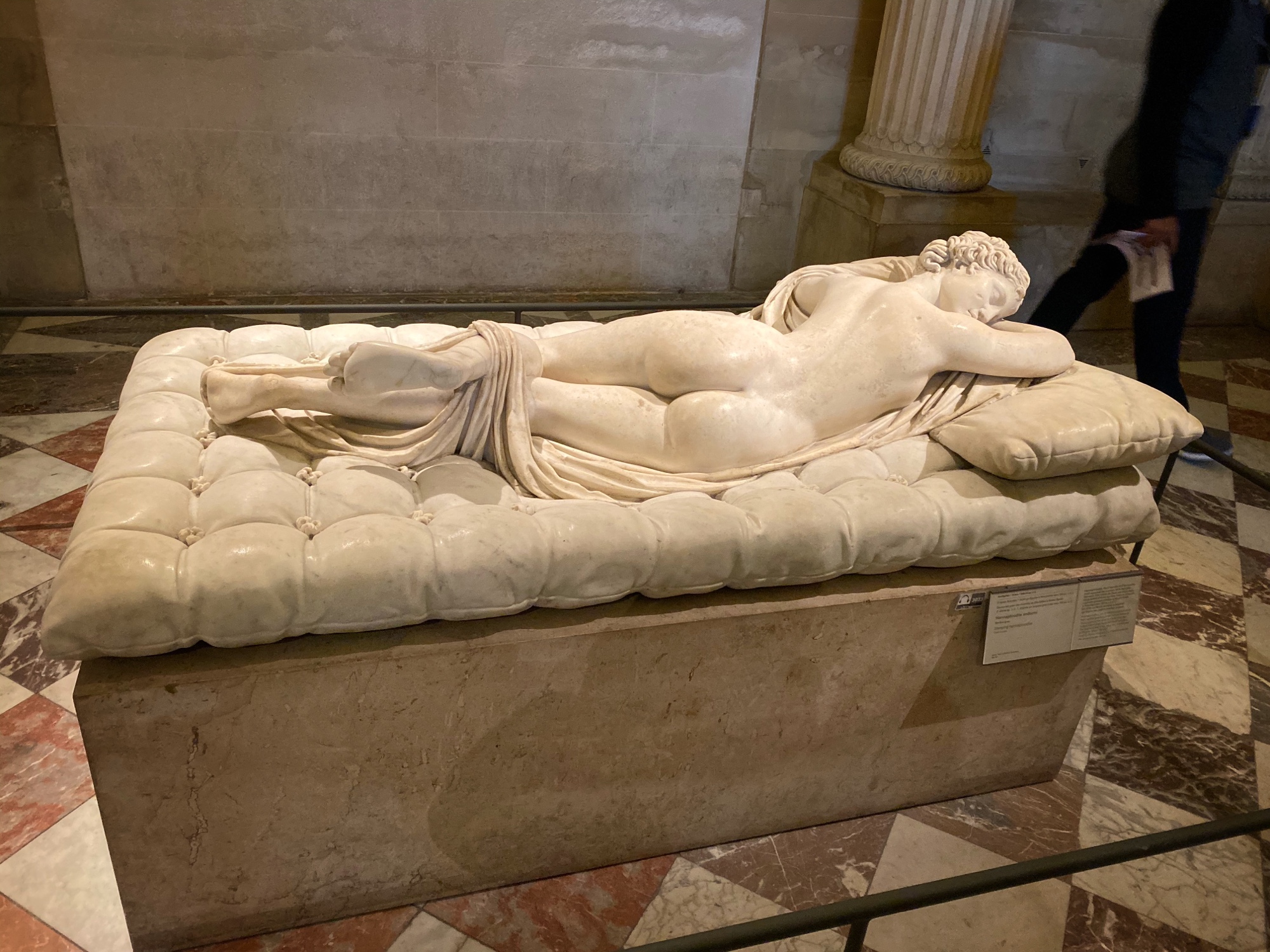

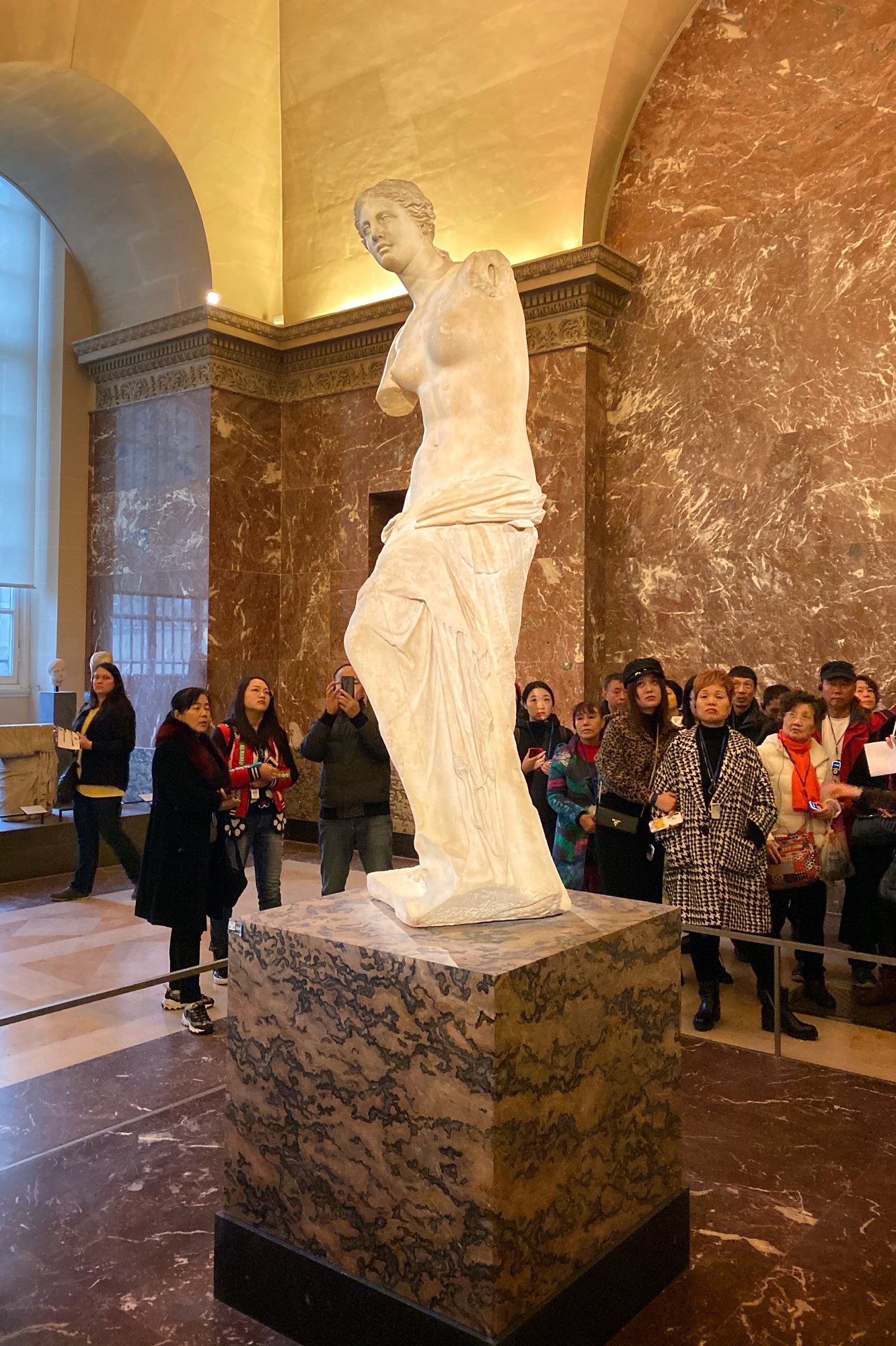
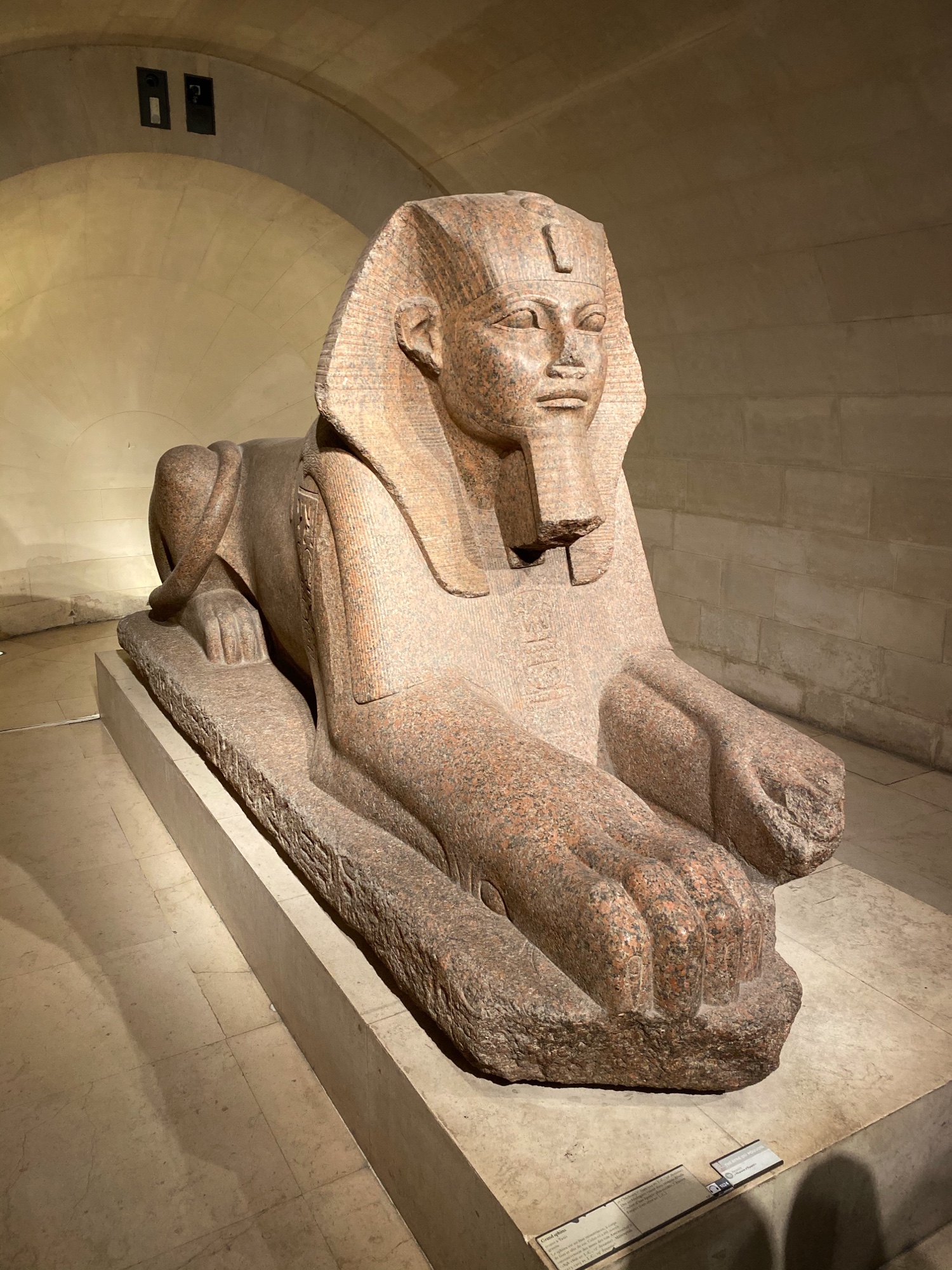
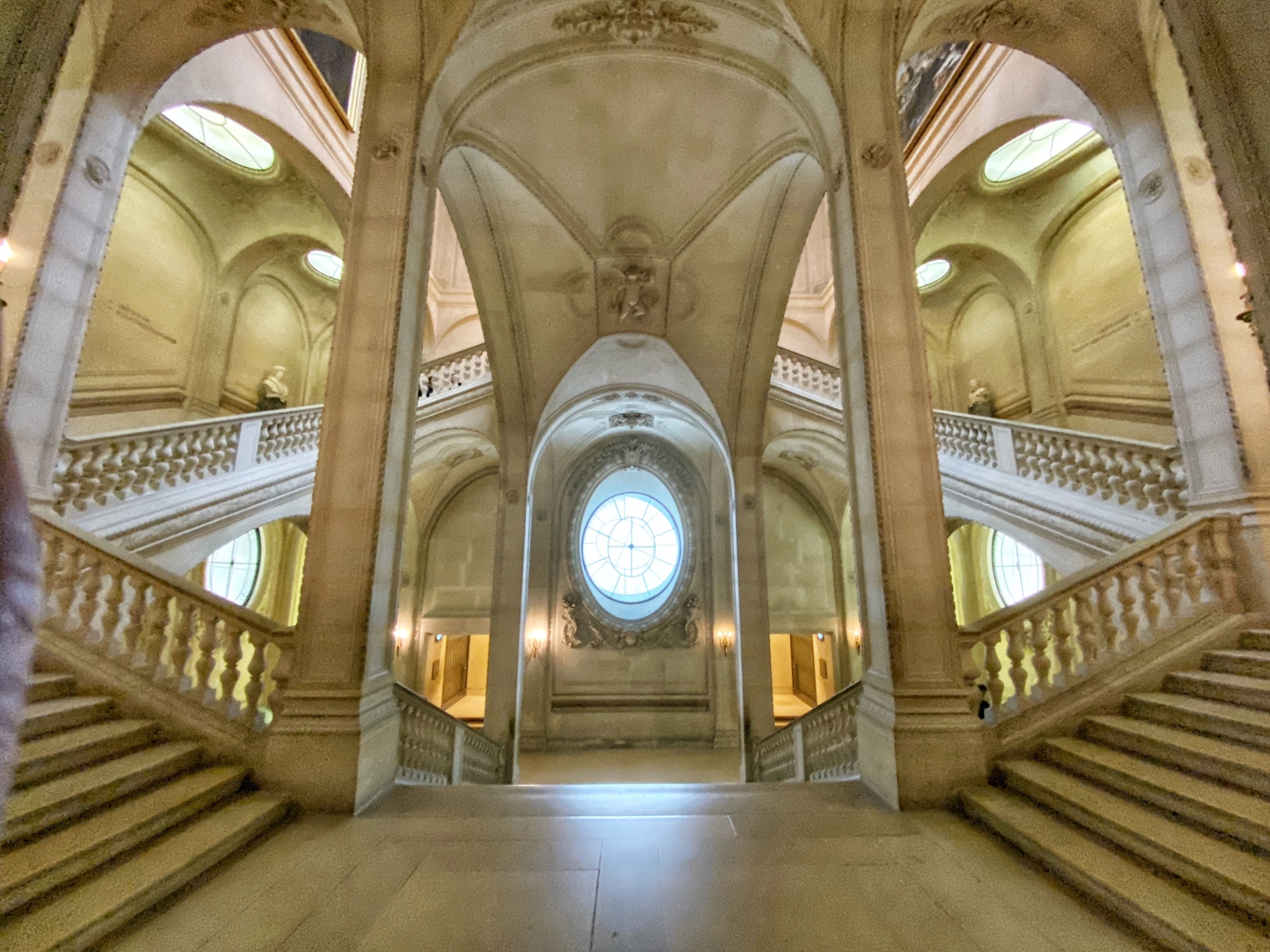
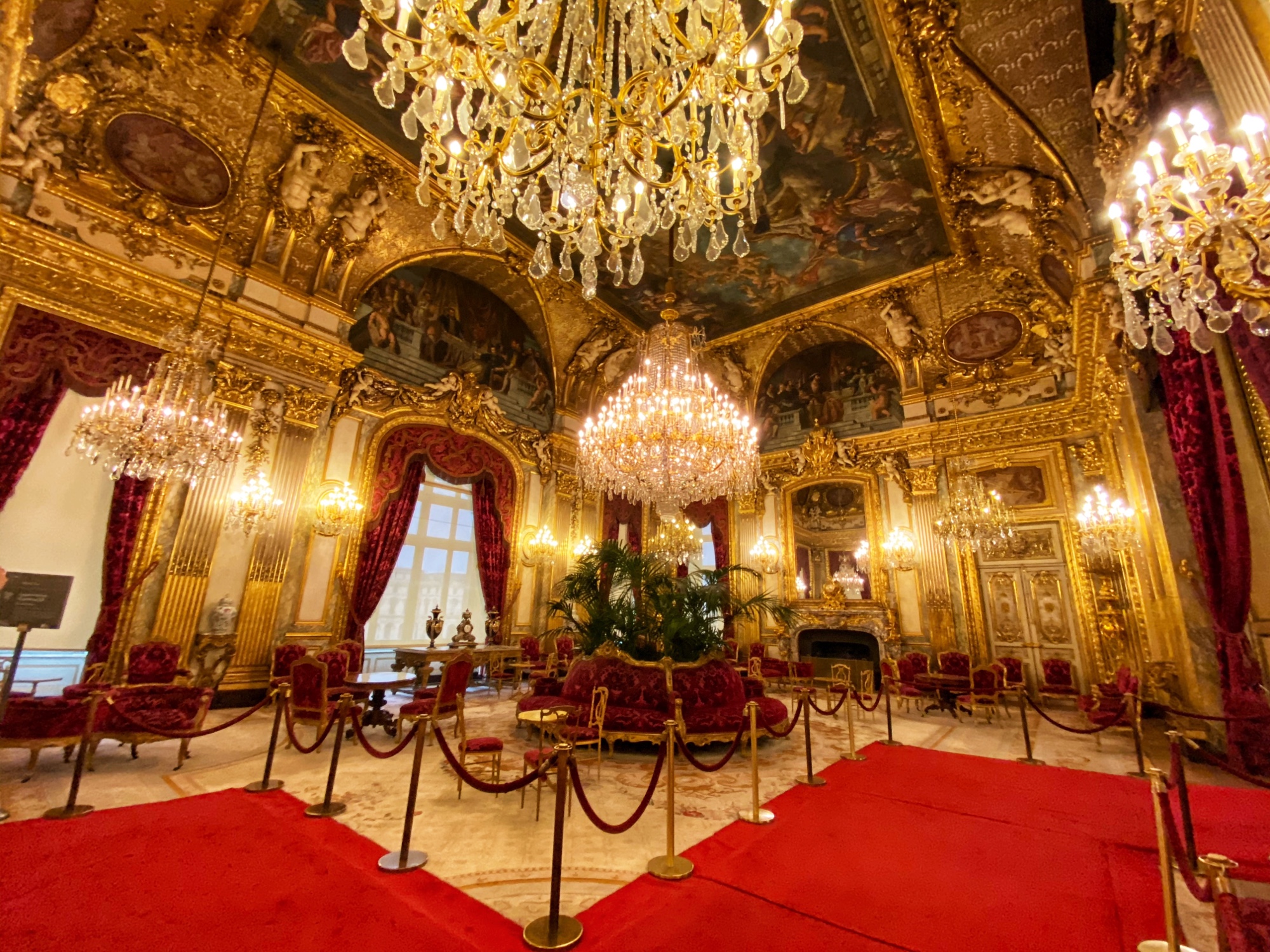
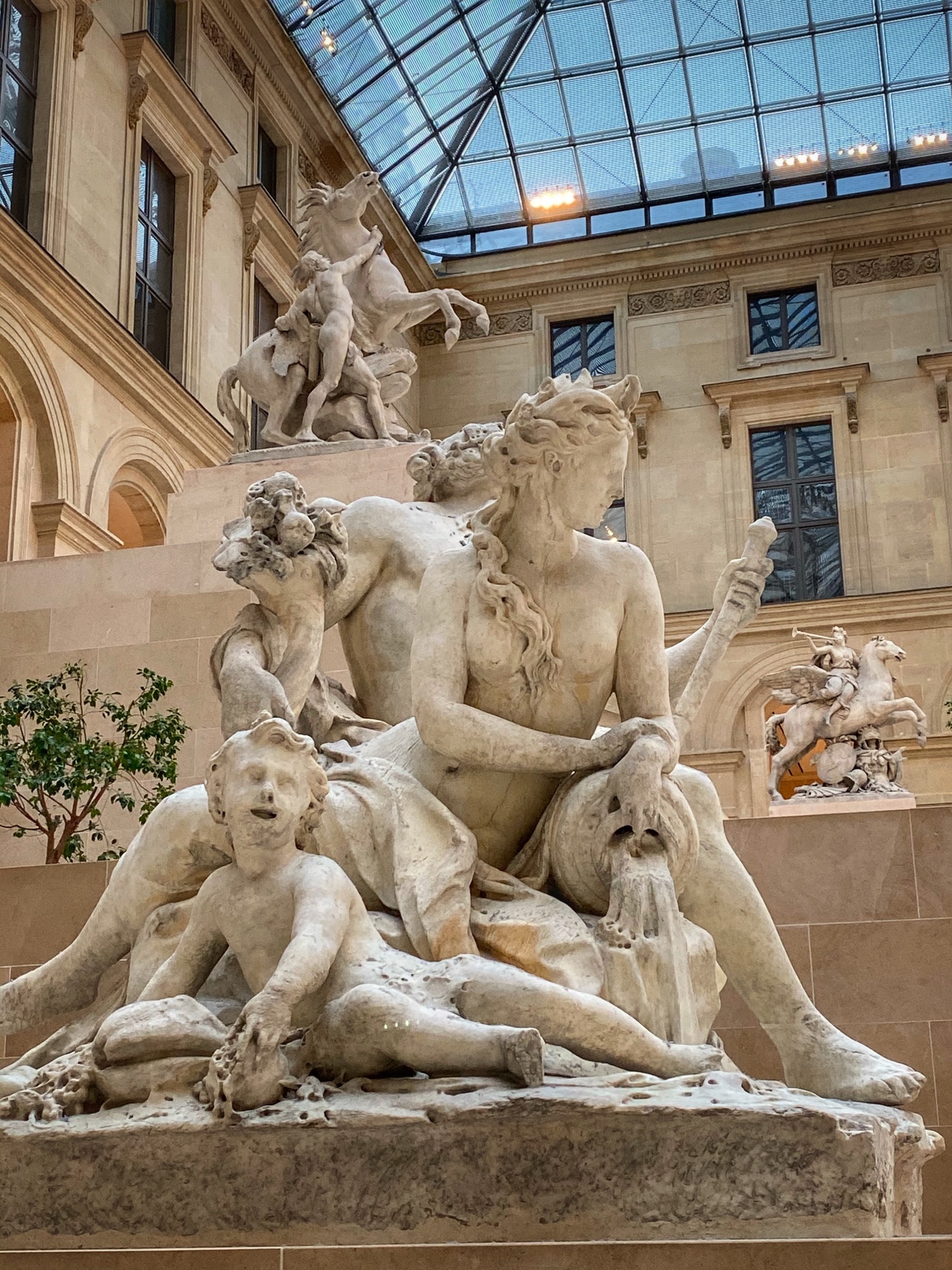
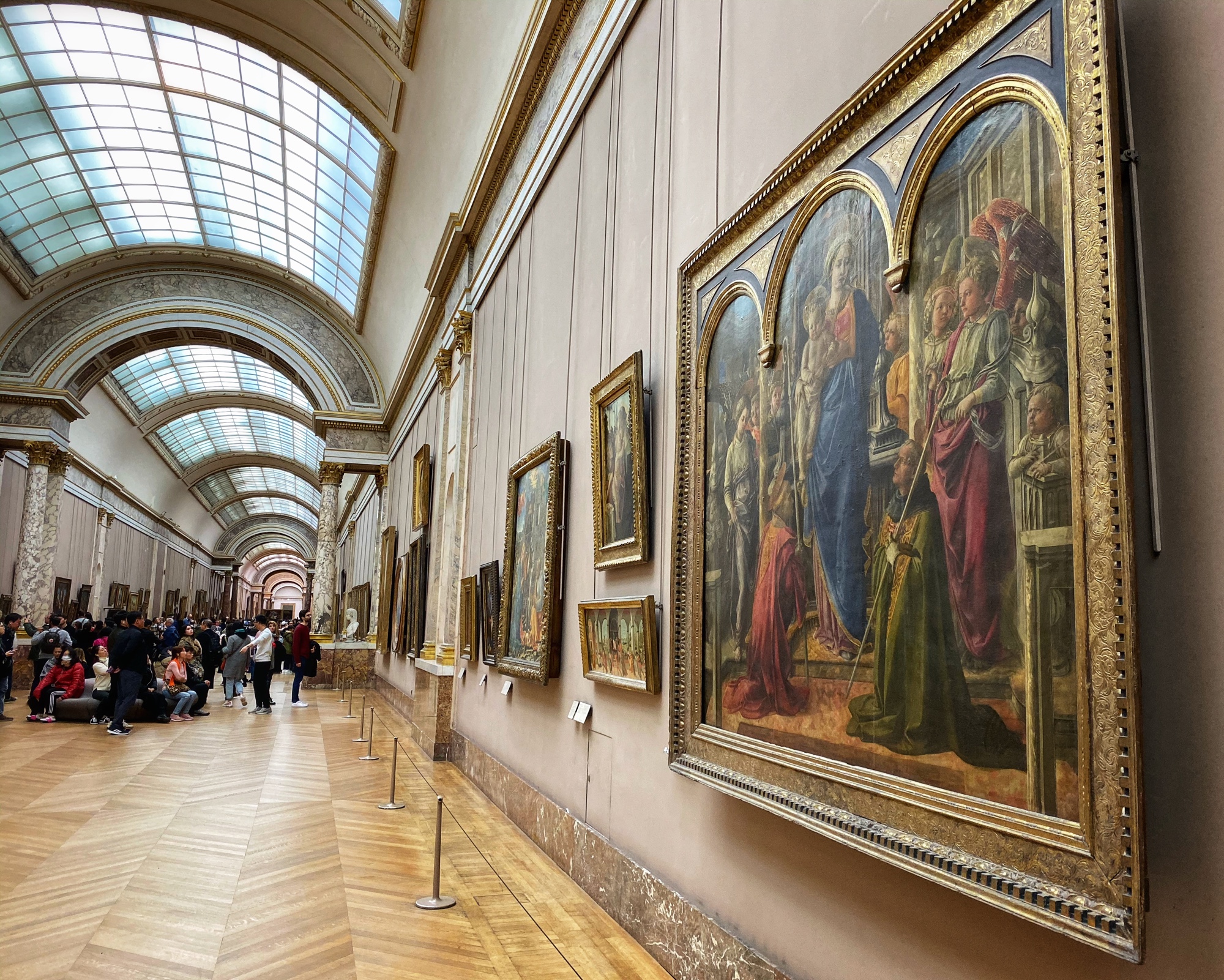
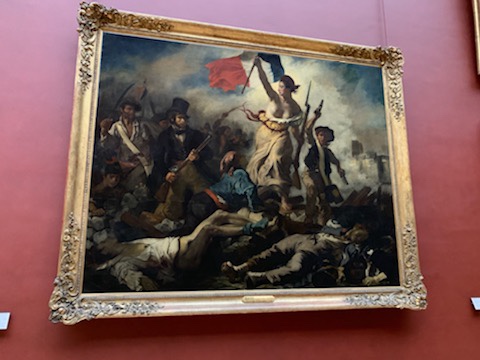
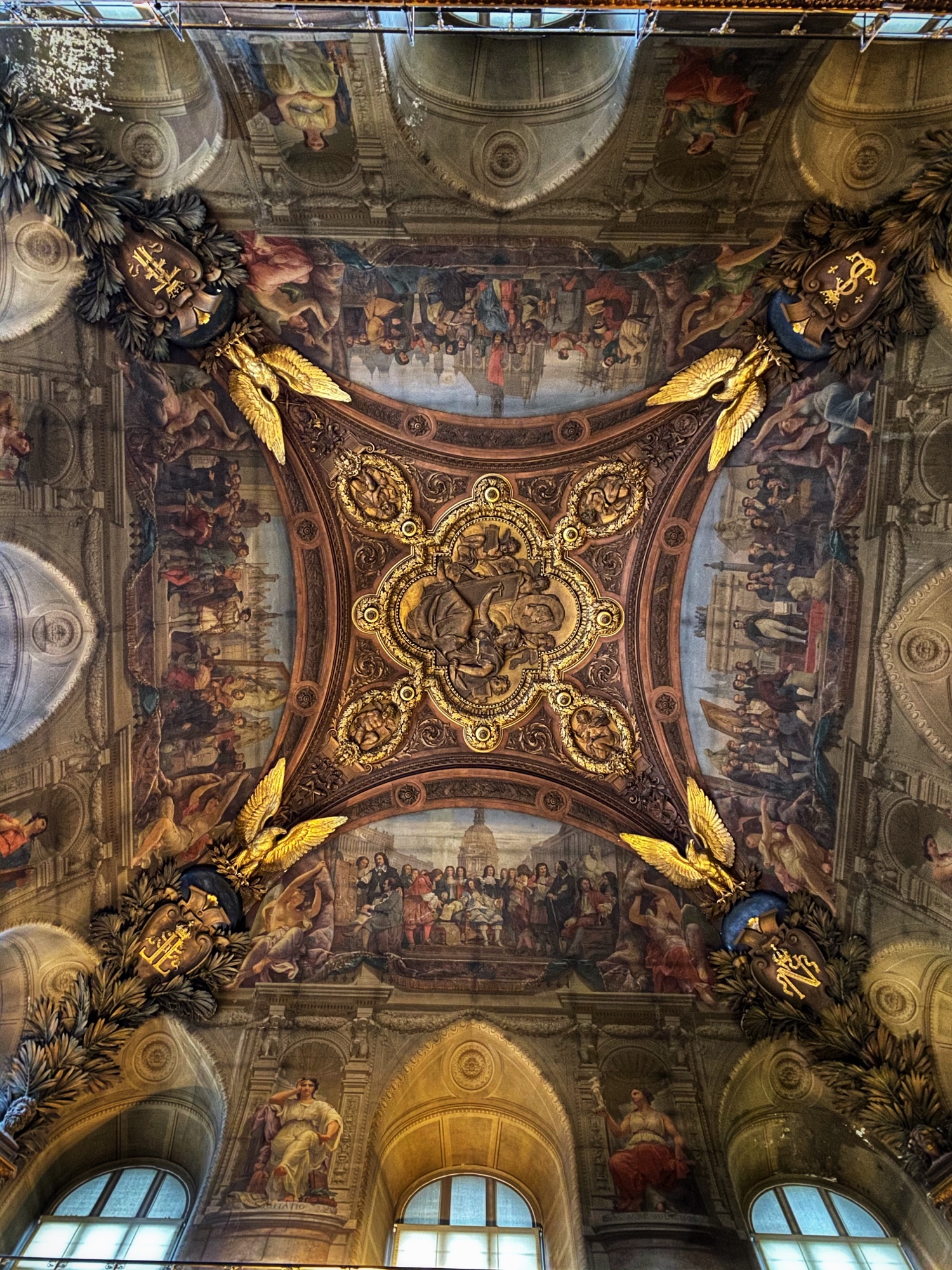
PRACTICAL INFO: The Louvre is open every day except Tuesday from 9am-6pm, and until 9:45pm on Fridays. Tickets are €17 for adults and under 18 are free. If you need to use the bathroom but do not have tickets to the Louvre, you can still enter the pyramid without tickets and visit the shops, bathrooms, and cafes inside the rotunda. You can also visit this area underneath the pyramids from the Carrousel de Louvre entrance – again, without a ticket. A free app for the Louvre can be downloaded here. For more info on the Louvre and book your tickets, click here.
Petit Palais
Situated across the street from the Grand Palais, this smaller (hence the name “petit”) palace was built at the same time (finished in 1900) for the World Exposition in Paris. This period of expansion in Paris was post revolution and seen as a way to rebuild and amplify the reputation of the city for the glory of France to welcome the world for the expo. The architecture was especially well received by King Leopold II of Belgium, who commissioned architect Girault to build several buildings in Belgium including the famous Arcade du Cinquantenaire in Brussels. The Petit Palais housed the History of Art (an exhibit for the expo) from the beginning until the present era, and today is a vast museum of art throughout the ages including famous works by Cézanne, Gauguin, Degas, Monet, Fragonard, Rembrandt, Rodin, and more.
Photos below from parisinfo.com
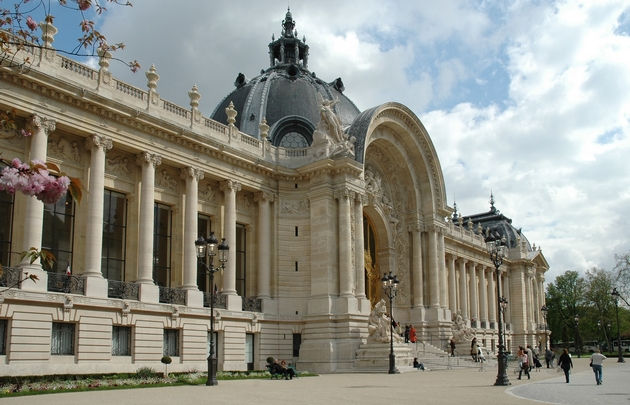
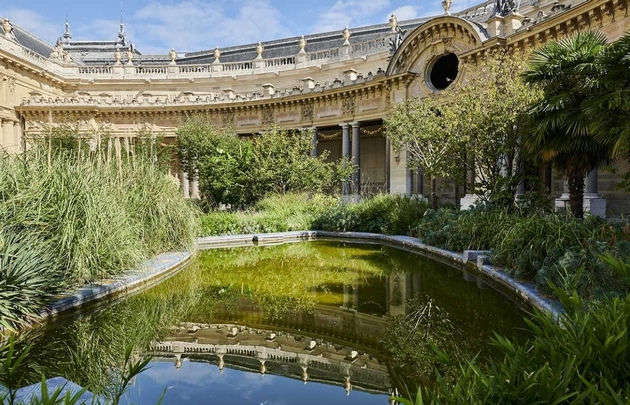
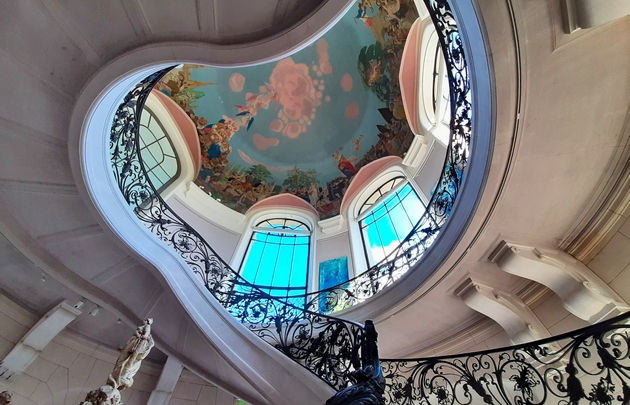
PRACTICAL INFO: Petit Palais is open 10am-6pm Tuesday through Sunday. It is free to visit the permanent collection in Petit Palais, but rotating temporary exhibits have varying entrance fees. For more information, click here.
Palais Royal
Because Paris didn’t have enough enormous dwellings in the 17th century, the Palais Royal was built in 1633 for Cardinal Richelieu and was originally called the Palais Cardinal on is behalf. Richelieu, you may remember, was heavily involved in politics and academia, influencing Kings and serving as head master at the College of Sorbonne. By now you may be thinking, “holy crap! Everything in Paris is connected!” and you’d be right. The sun king Louis XIV spent part of his childhood here before taking the throne, and a great speech was made here inspiring the storming of the Bastille and igniting the French Revolution. Today the gardens are the most popular site here to visit as well as Les Deux Plateaux, an art instillation made of striped columns that takes up the entire courtyard. I recommend wandering the galleries of the Palais Royale to see the shops and take a walk through time, imagining what it was like here during the French Revolution. This is one of those places I consider a “hidden gem,” because if you don’t know to look for it, it is easy to miss!
Images below from ParisPerfect.com
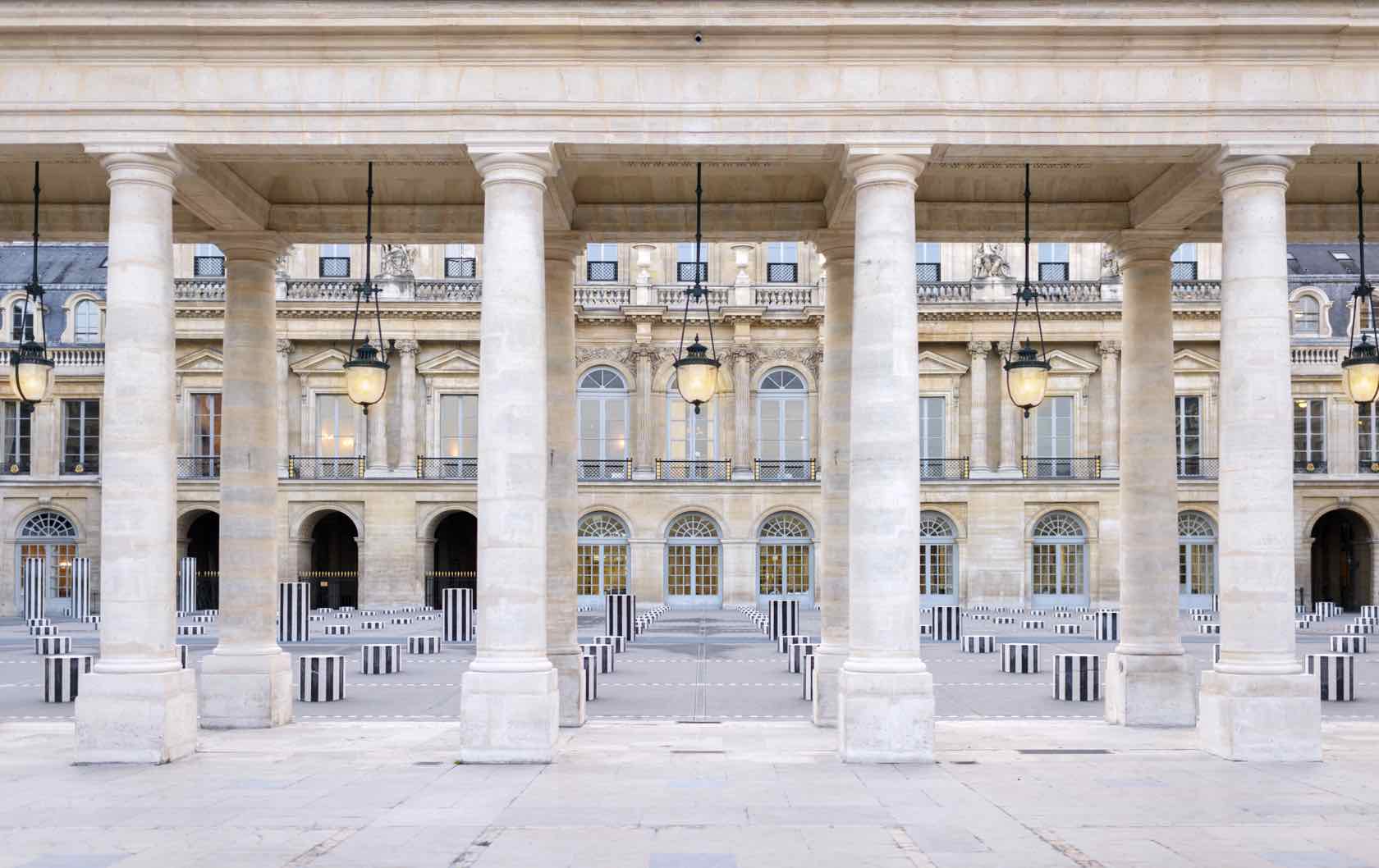

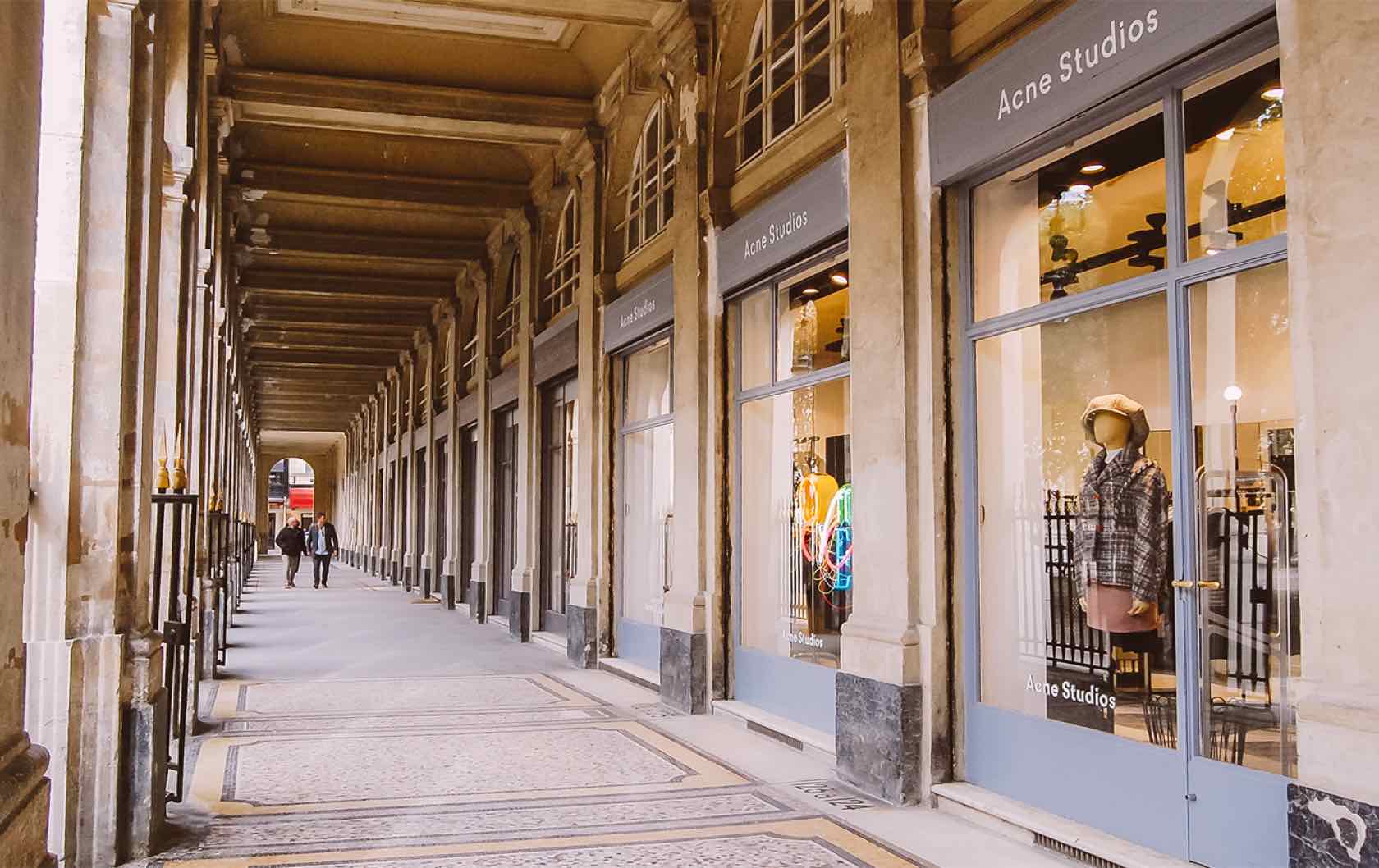
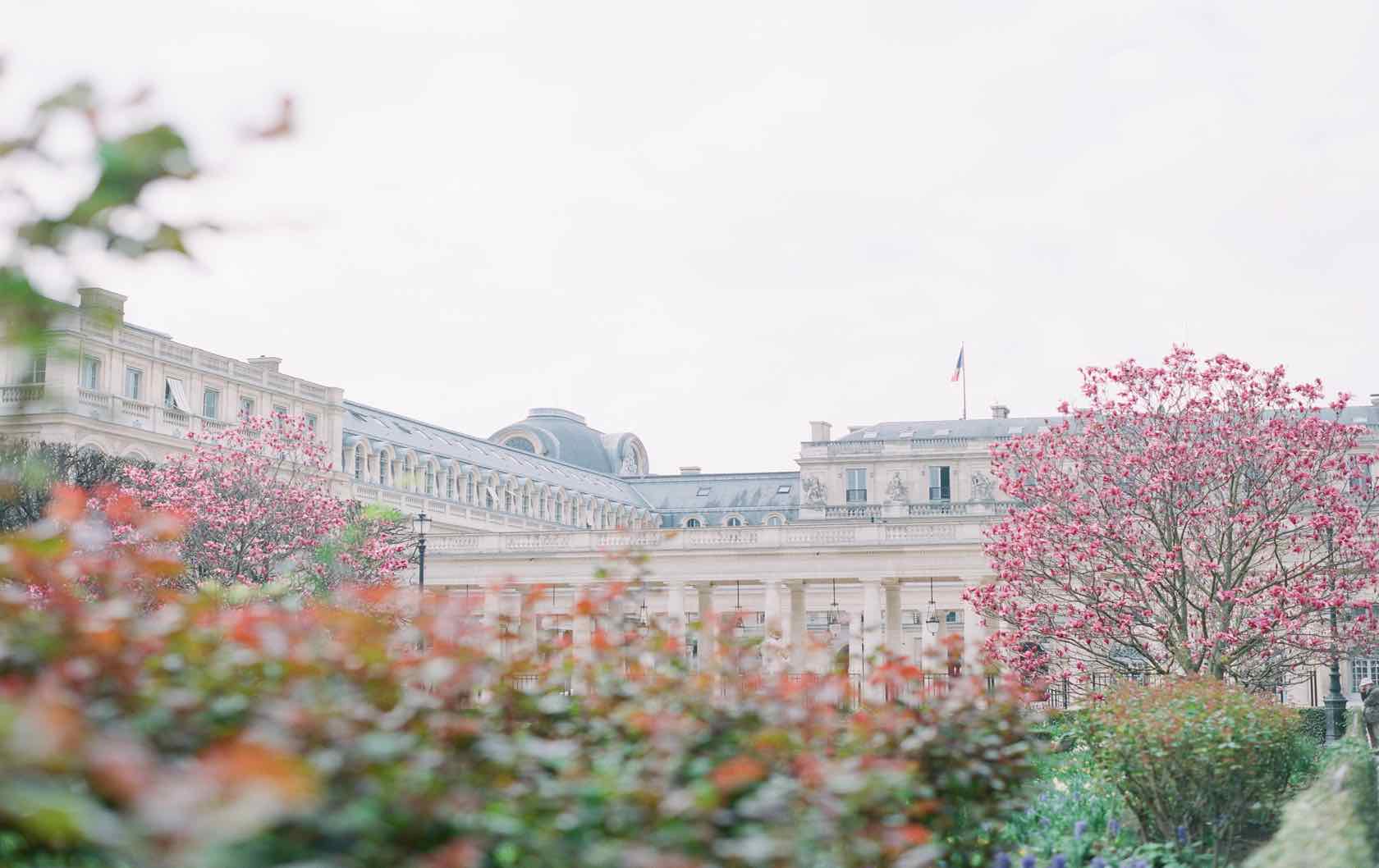
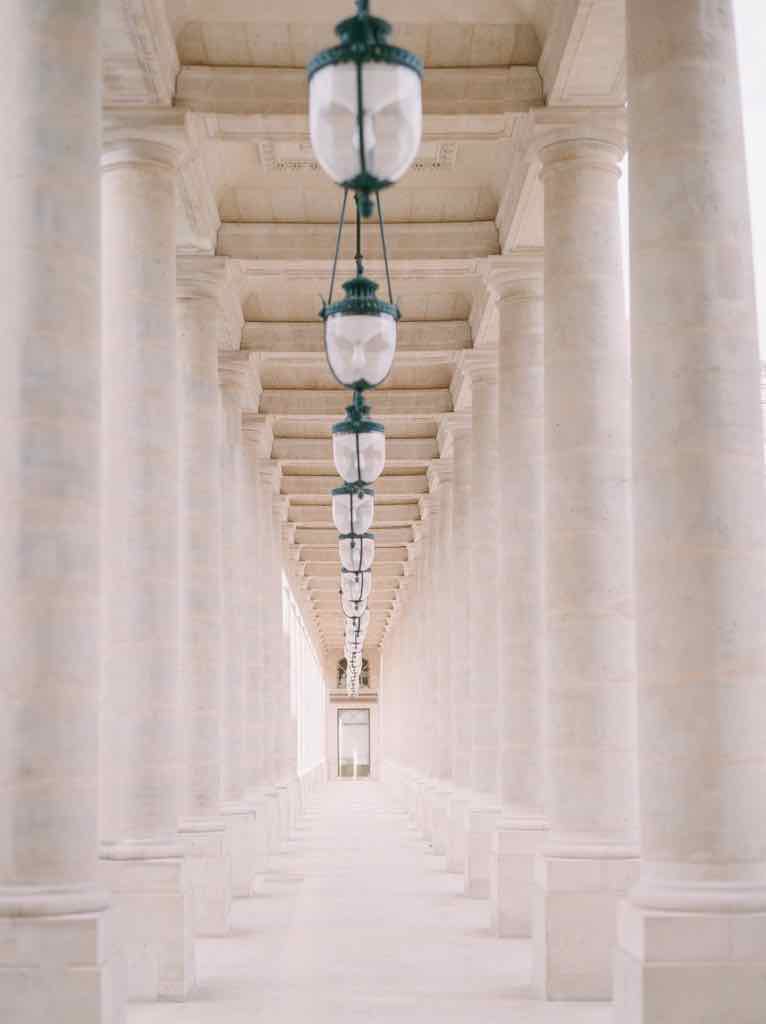
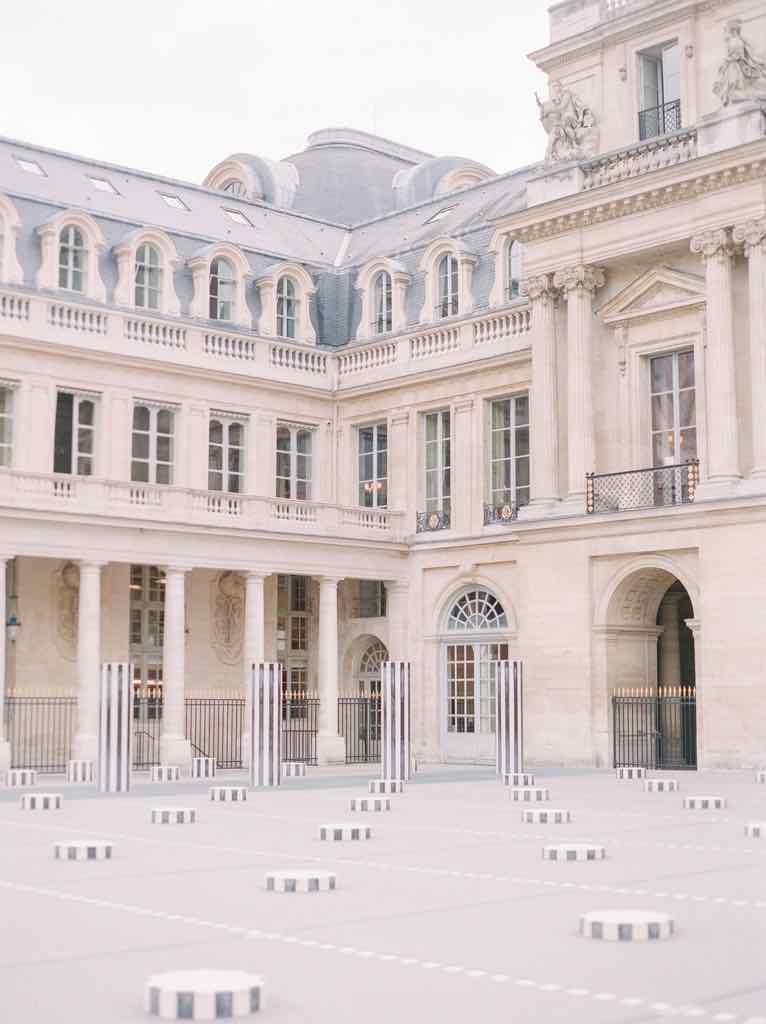
PRACTICAL INFO: The gardens and courtyard open at the following times and are free to visit:
- October 1 – March 31: 7.30am – 8.30pm
- April 1 – May 31: 7.00am – 10.15pm
- June 1 – August 31: 7.00am – 11.00pm
- September 1-30: 7.00am – 9.30pm
For more information, check out the Palais Royal website here.
So now what?
So what’s it going to be? A walk through the Latin Quarter with a stop at the Panthéon before crossing the river via Île de la Cité and seeing the Deportation Memorial, Notre Dame, Saint Chapelle and the Conciergerie with a quick peek at Hôtel de Ville, then walk over to the Louvre Museum and stroll through the Palais Royal? Or maybe it’s a day trip to Versailles and on the way back a visit to Les Invalides before checking out Grand and Petit Palais and Place de la Concorde? Whatever you decide for a route through historic Paris, it will be like taking a stroll through time in the city of lights! Choose what is most important to you, map it out in google maps or make a list, and buy your tickets ahead of time to make sure you don’t miss out. You’re sure to fall in love!
Holy sacré bleu, Bri! Can’t imagine how long this took you! Amazing work! 👏🏼👏🏼
LikeLike